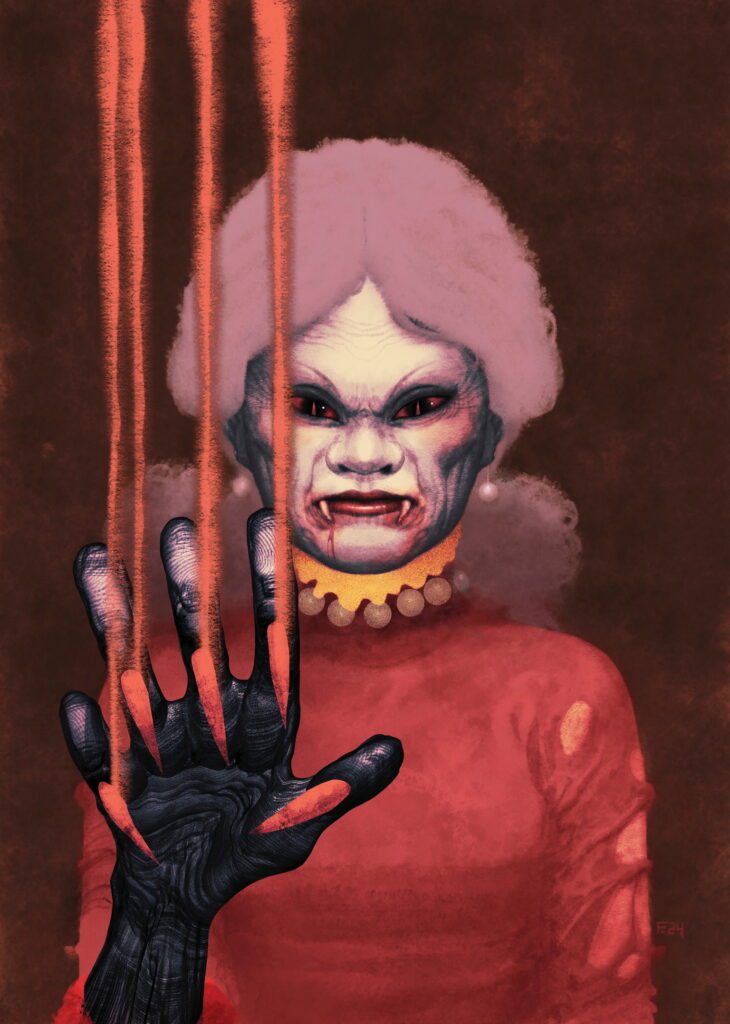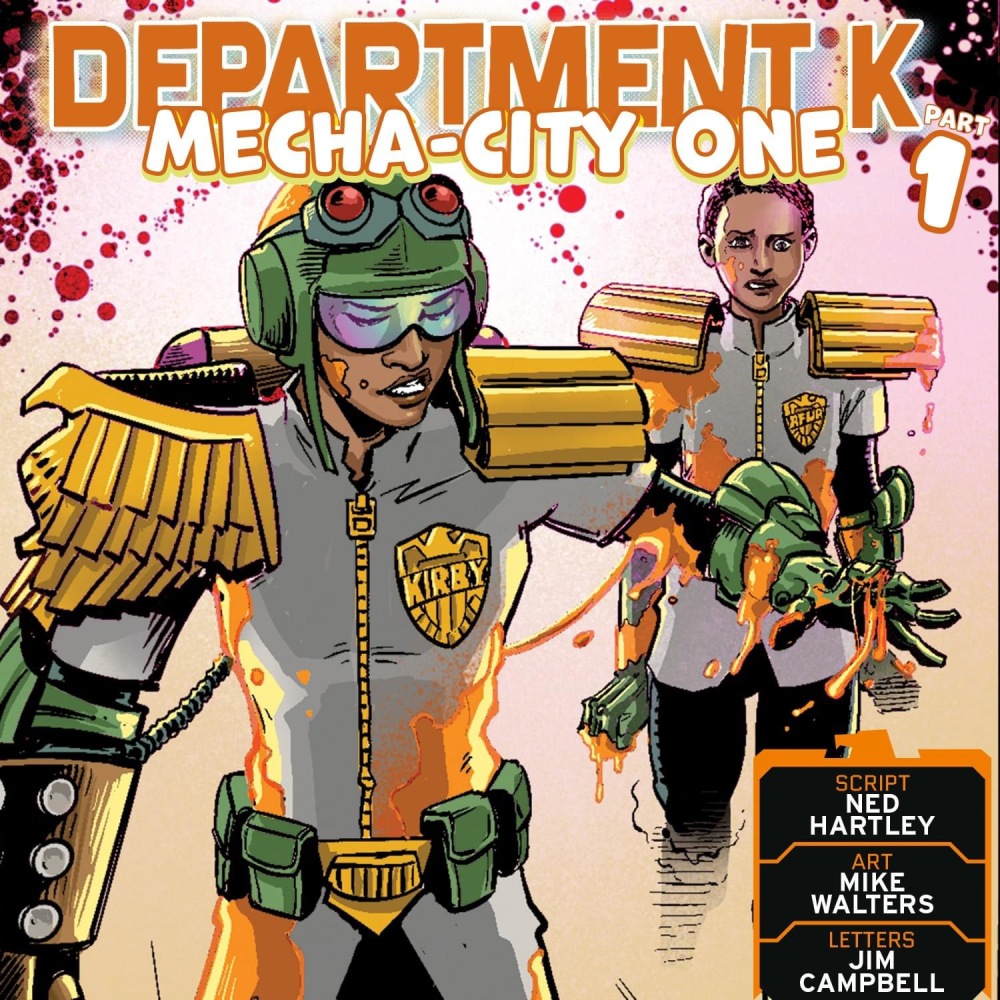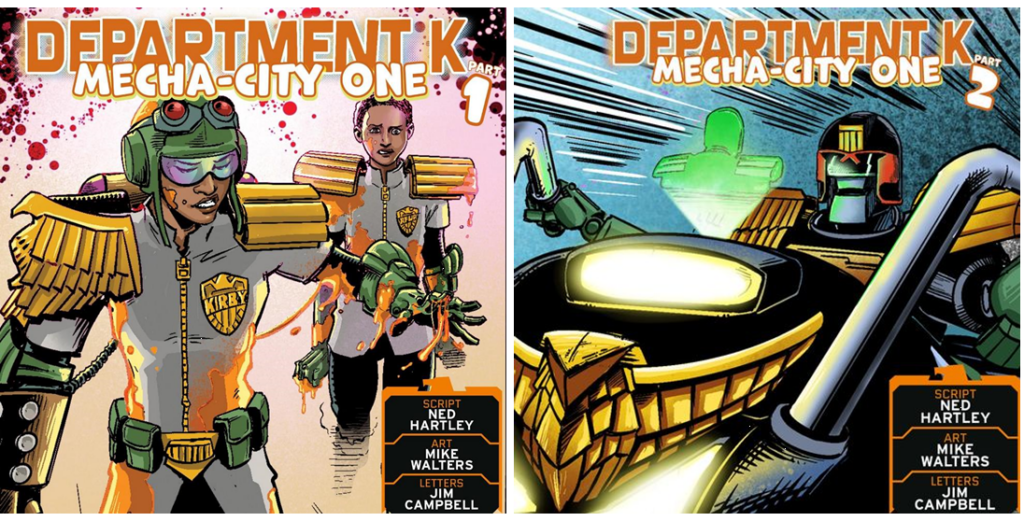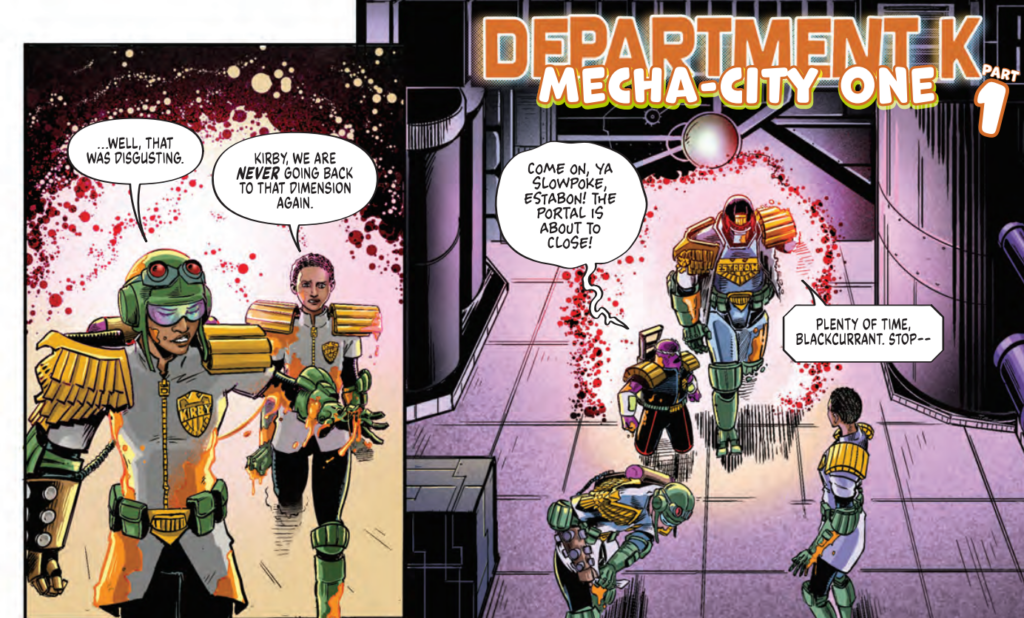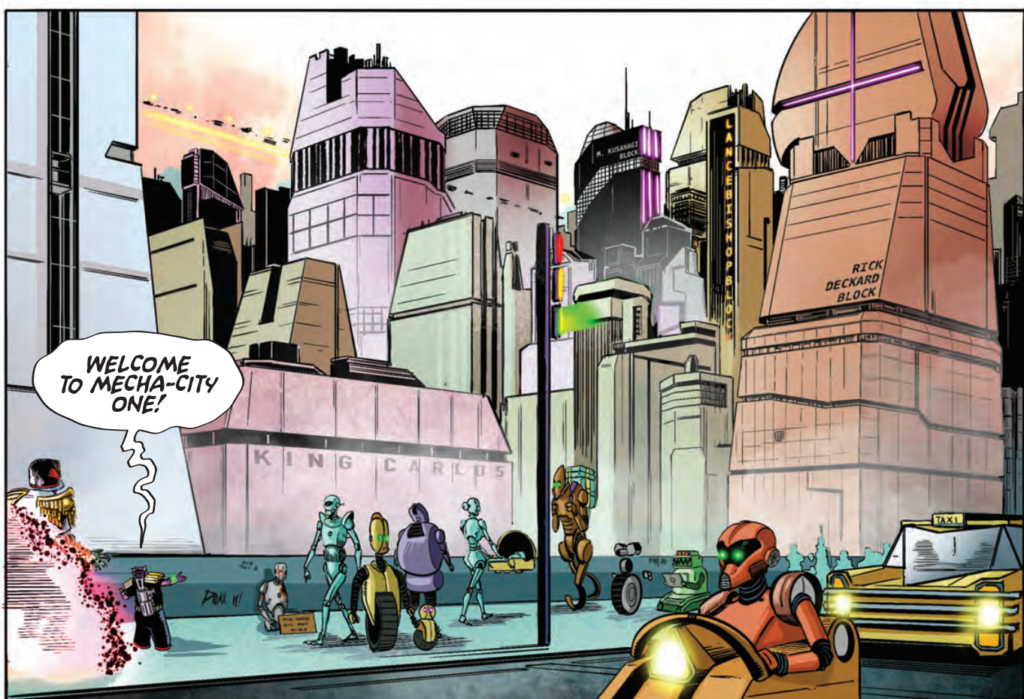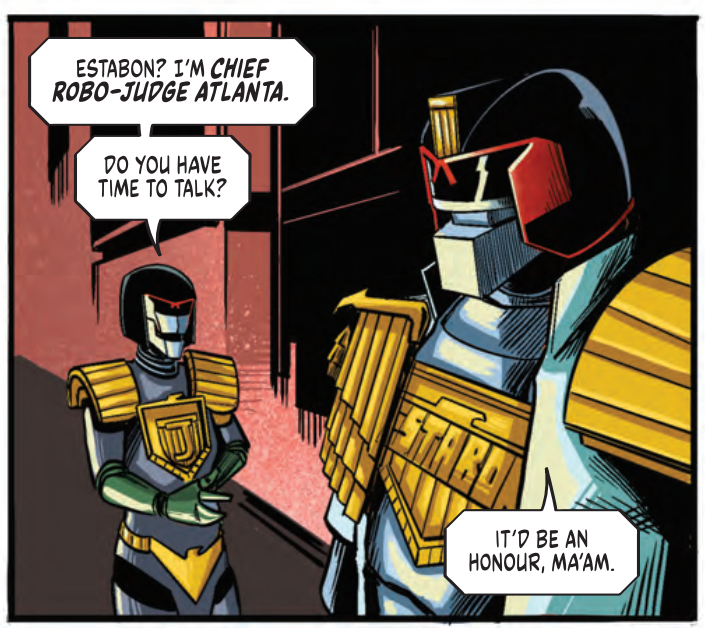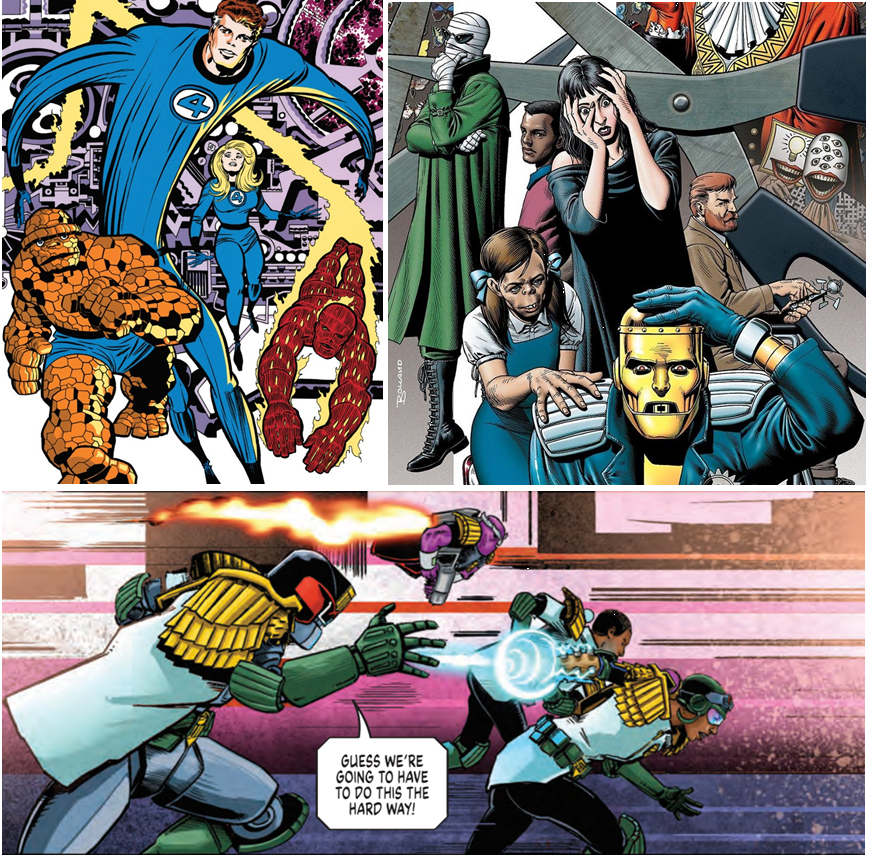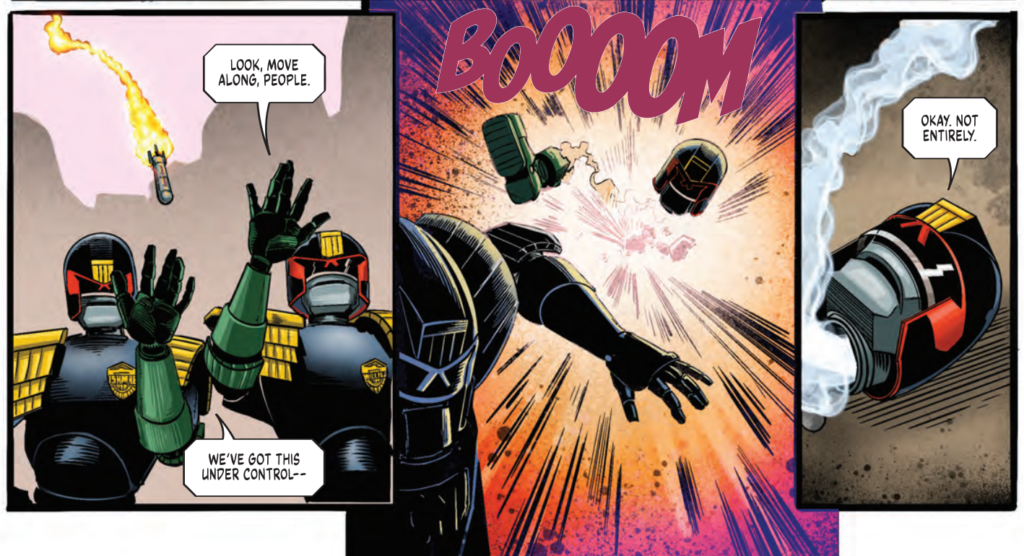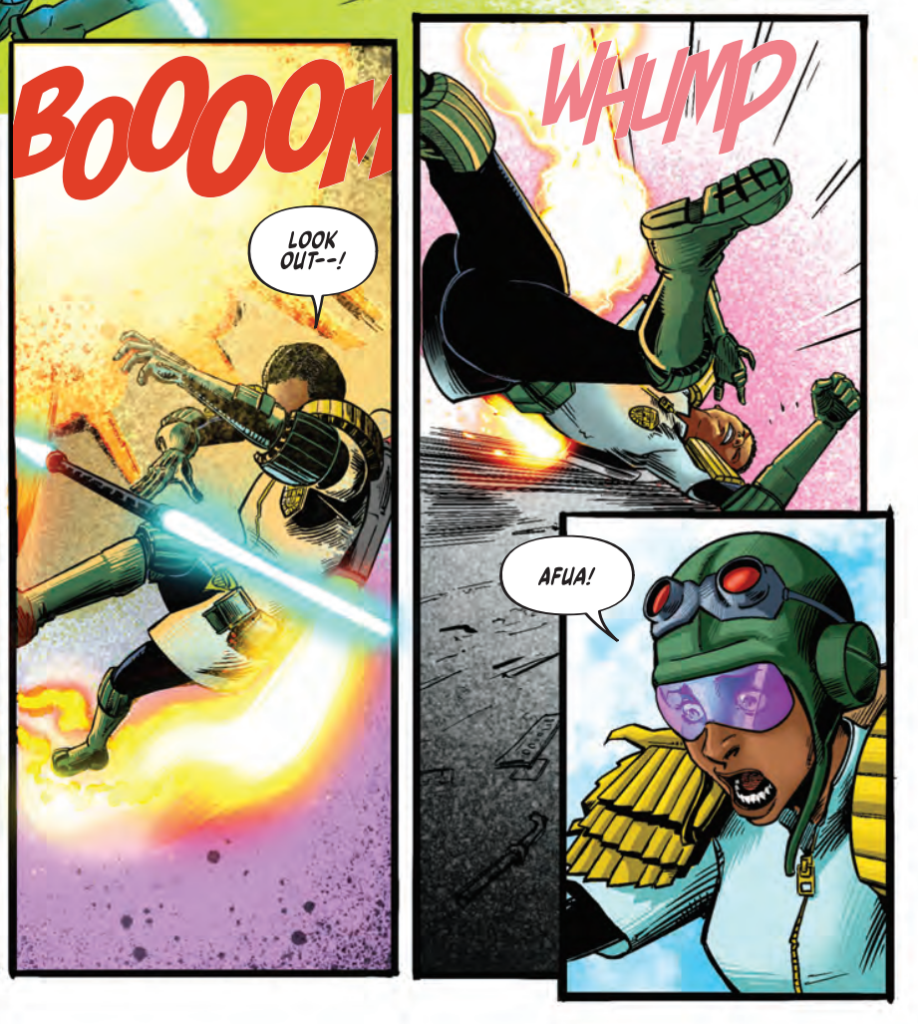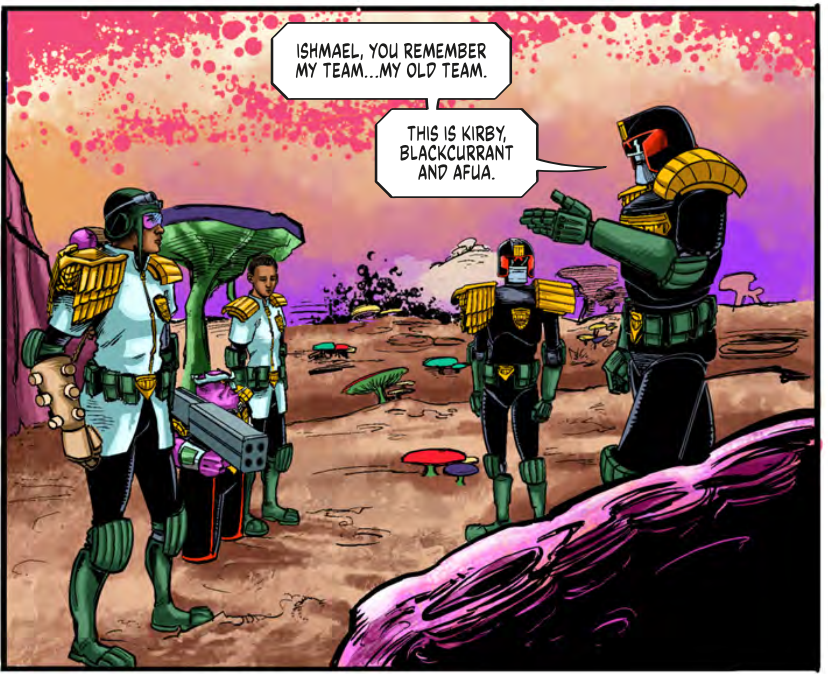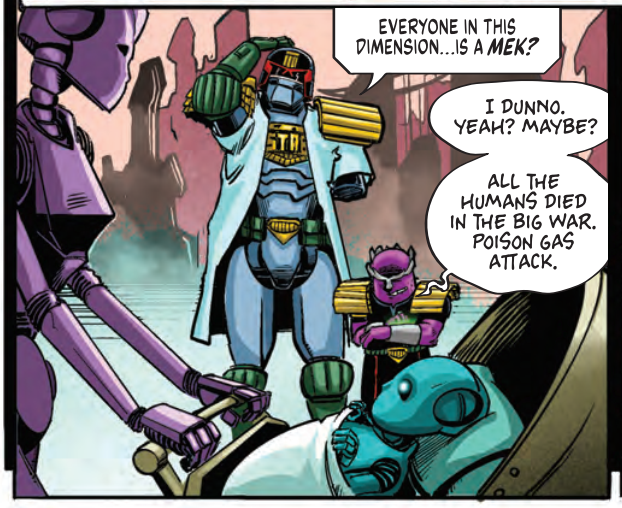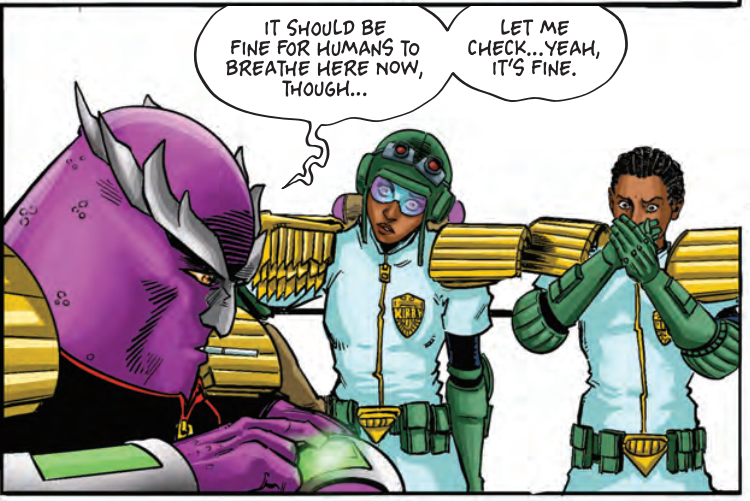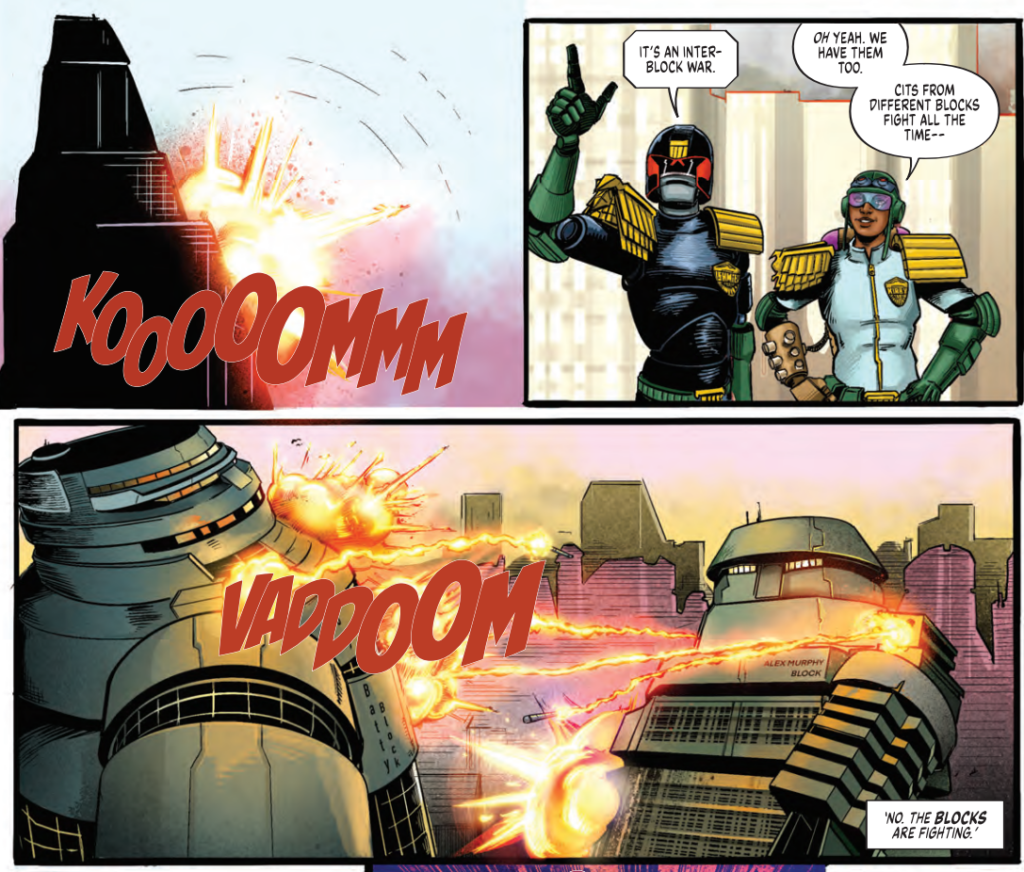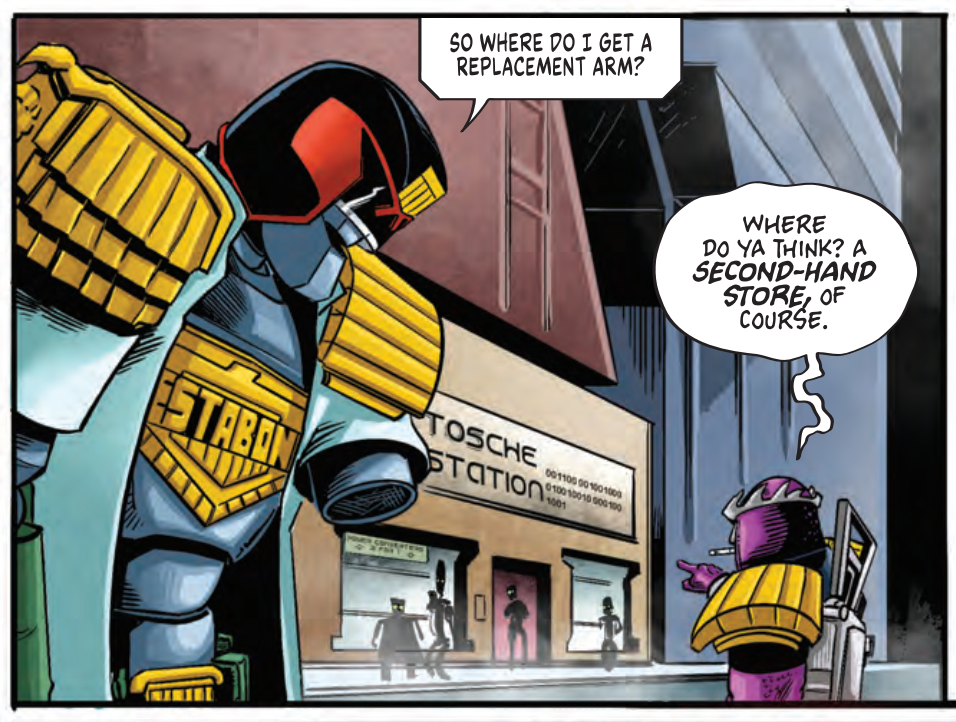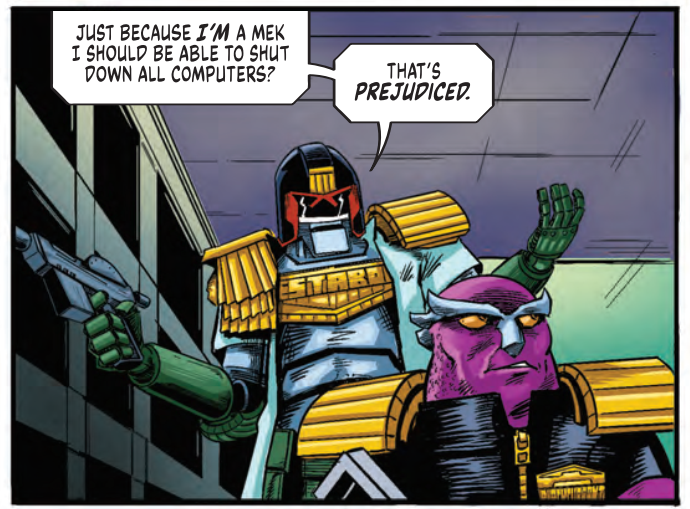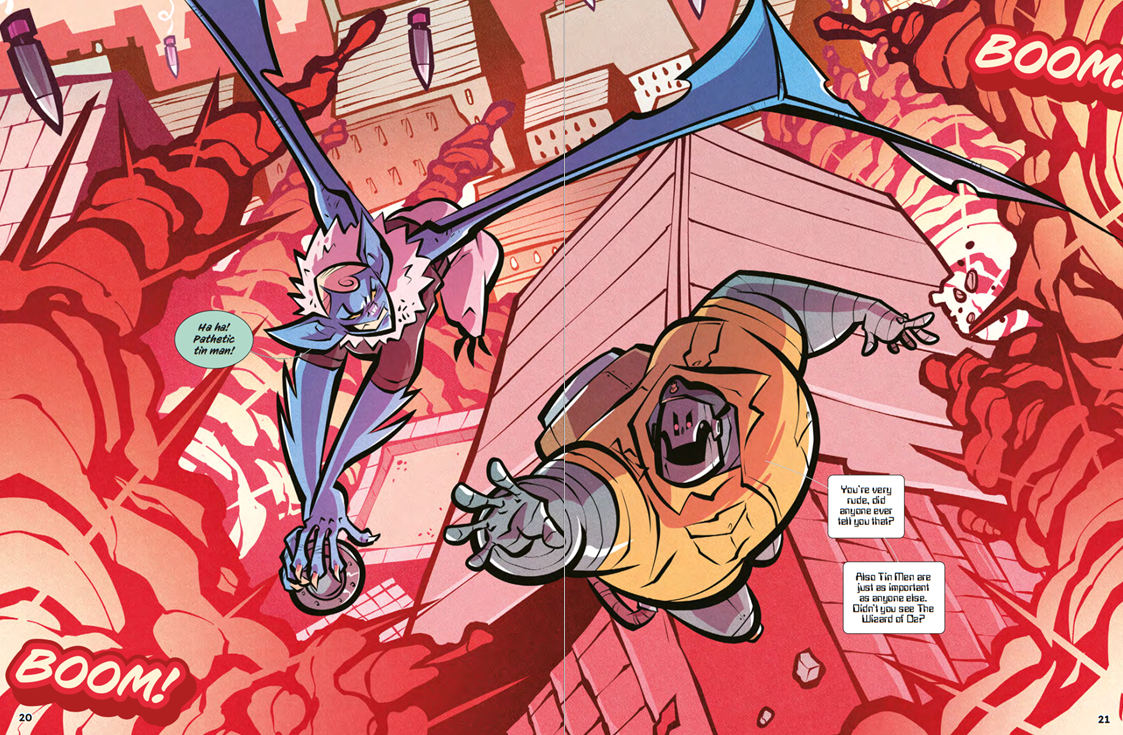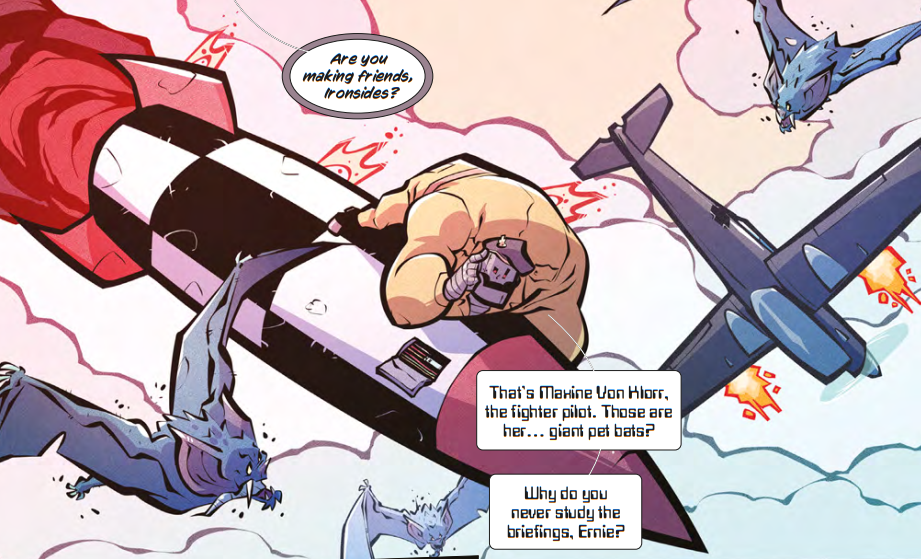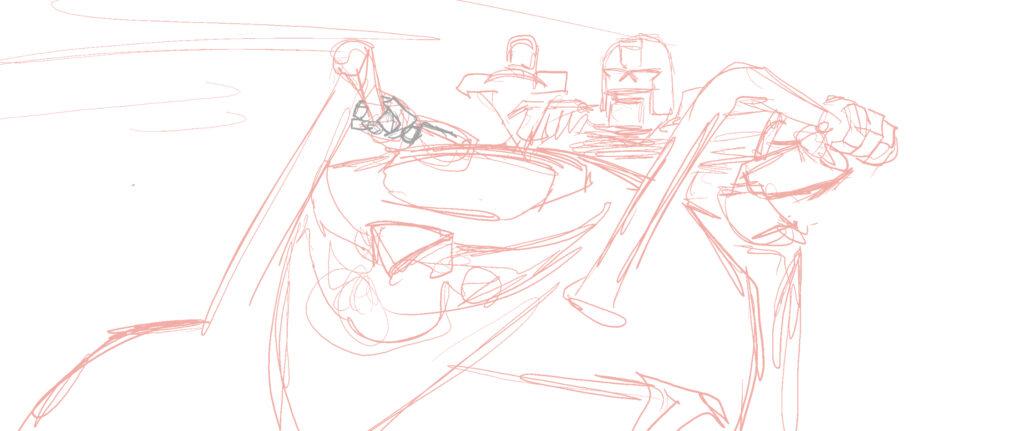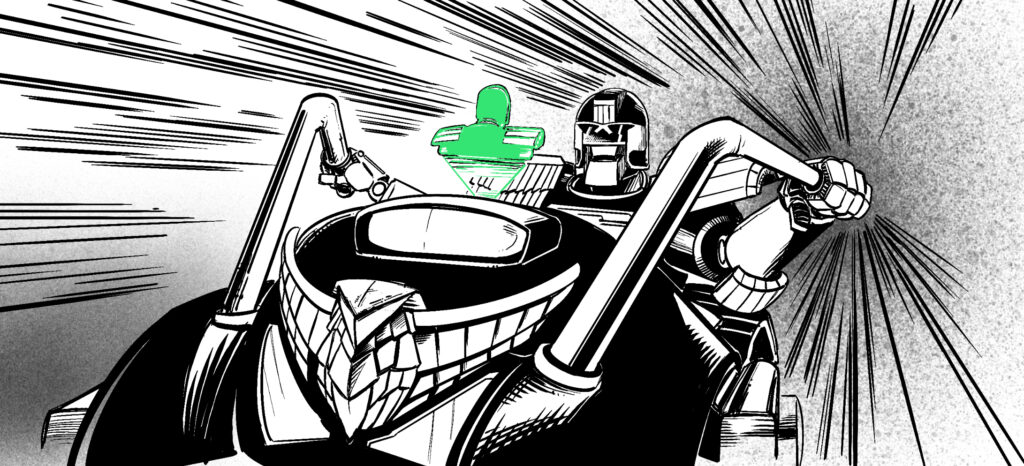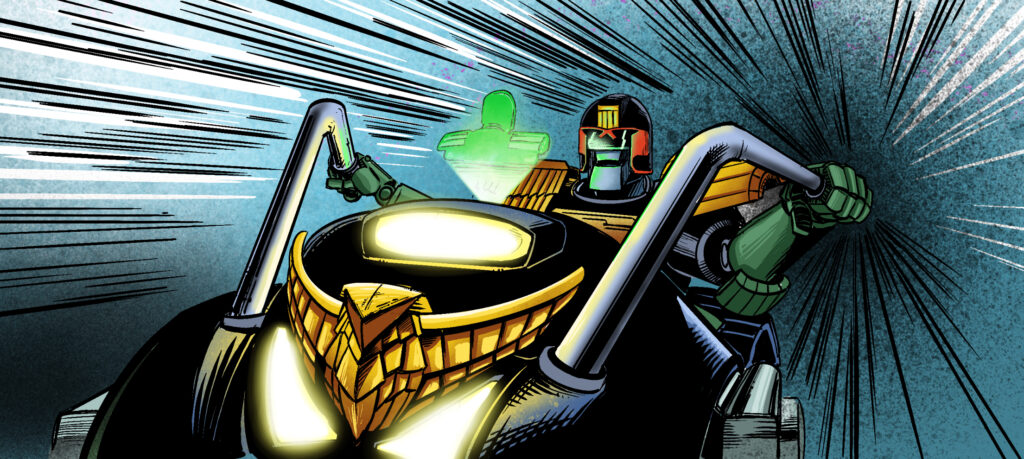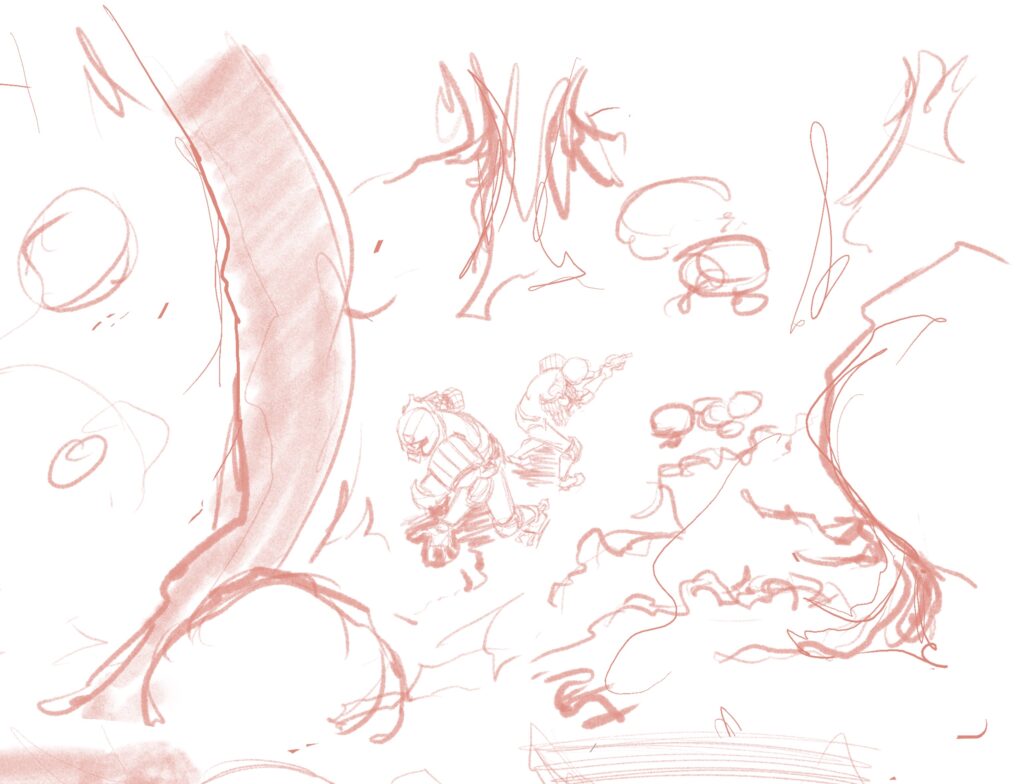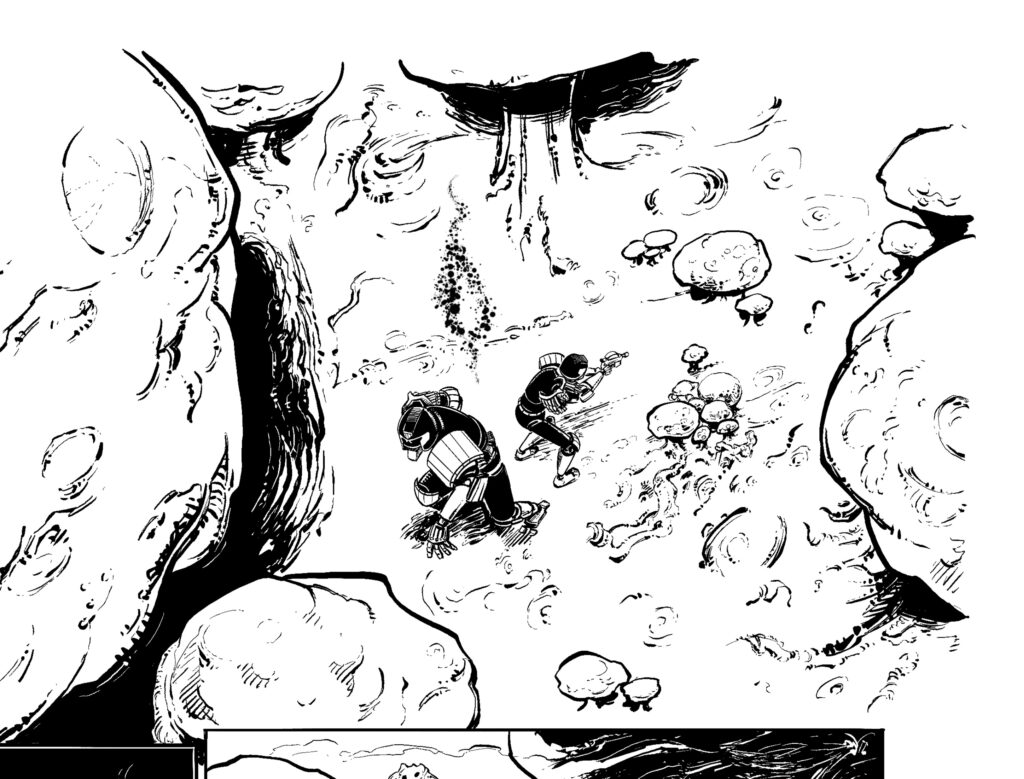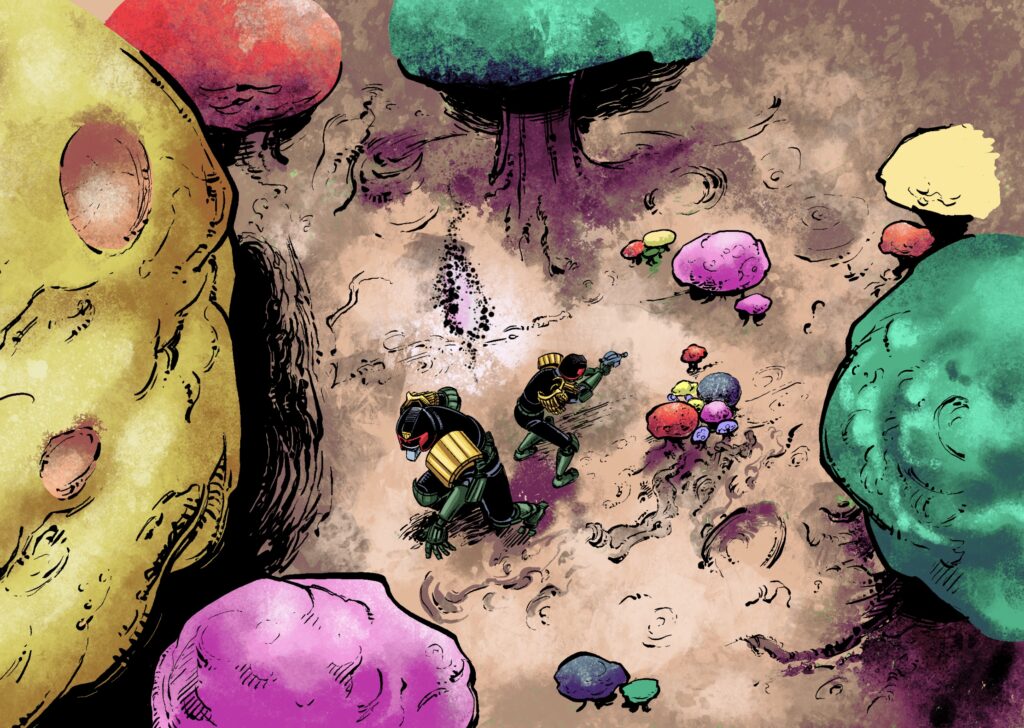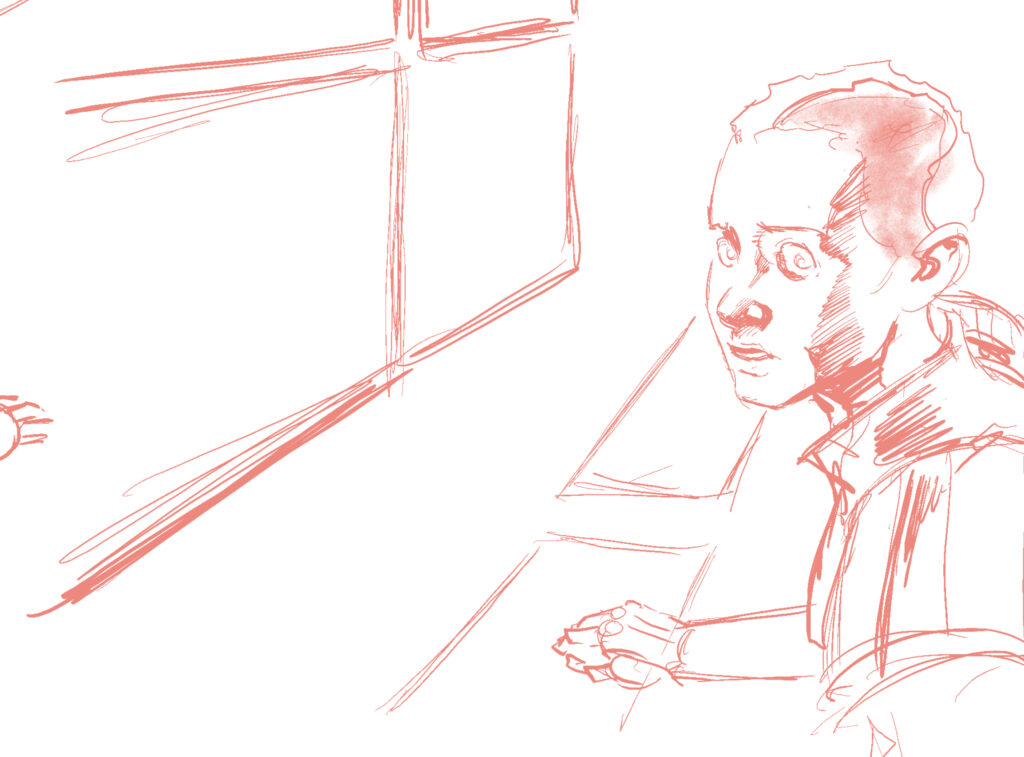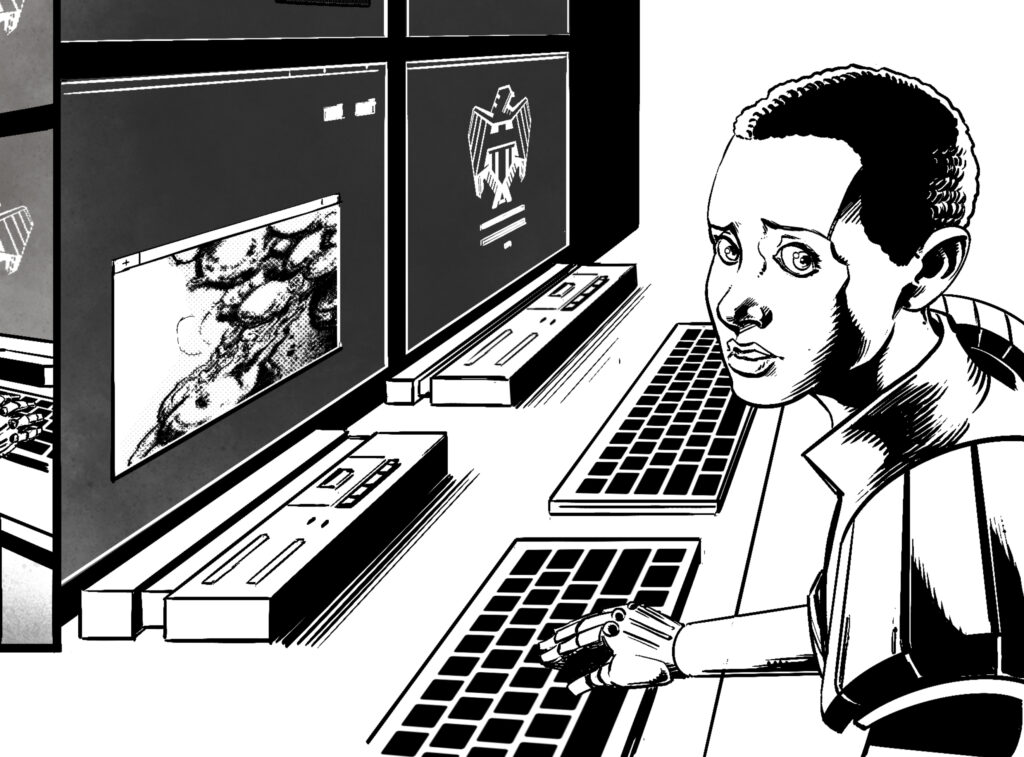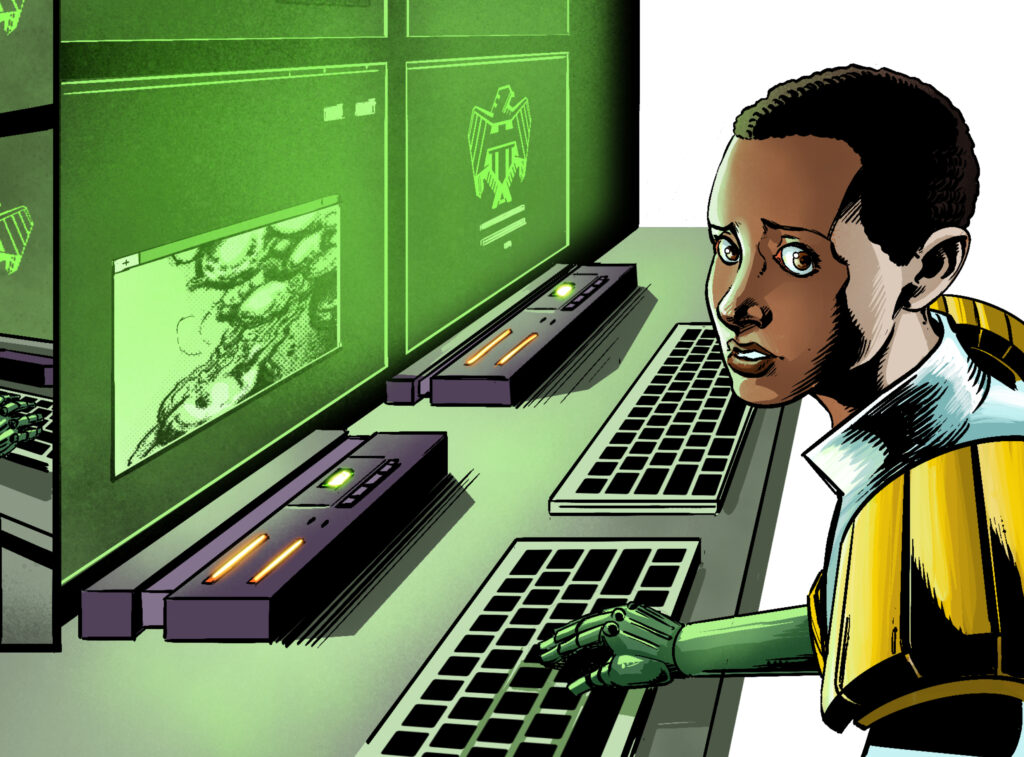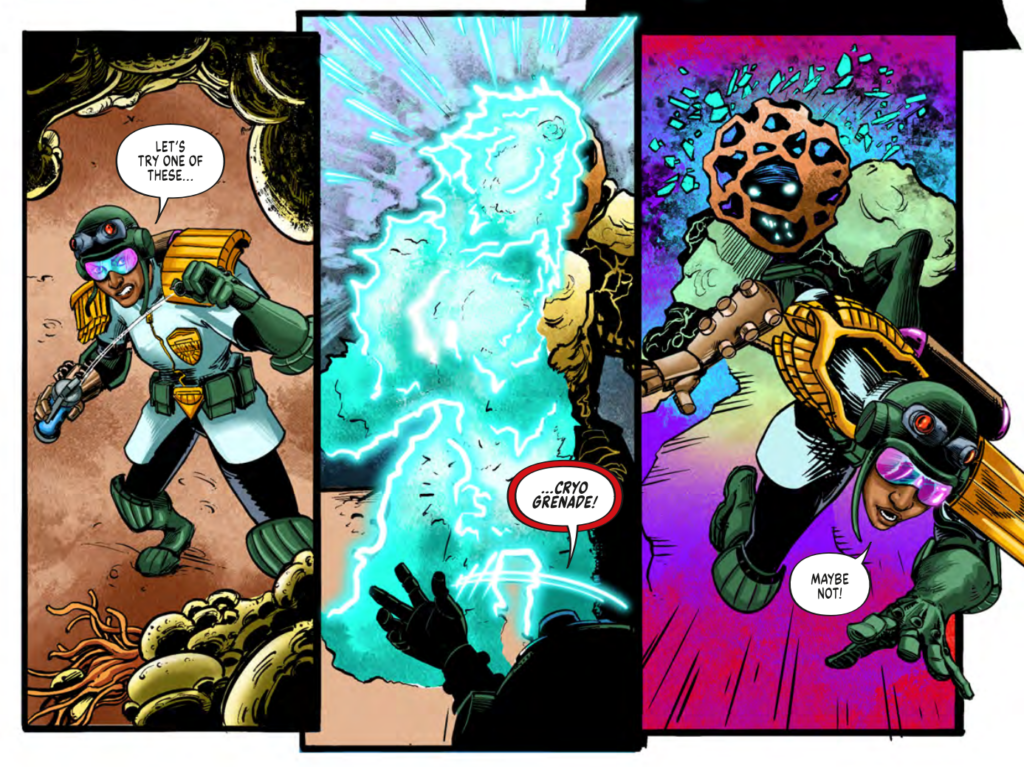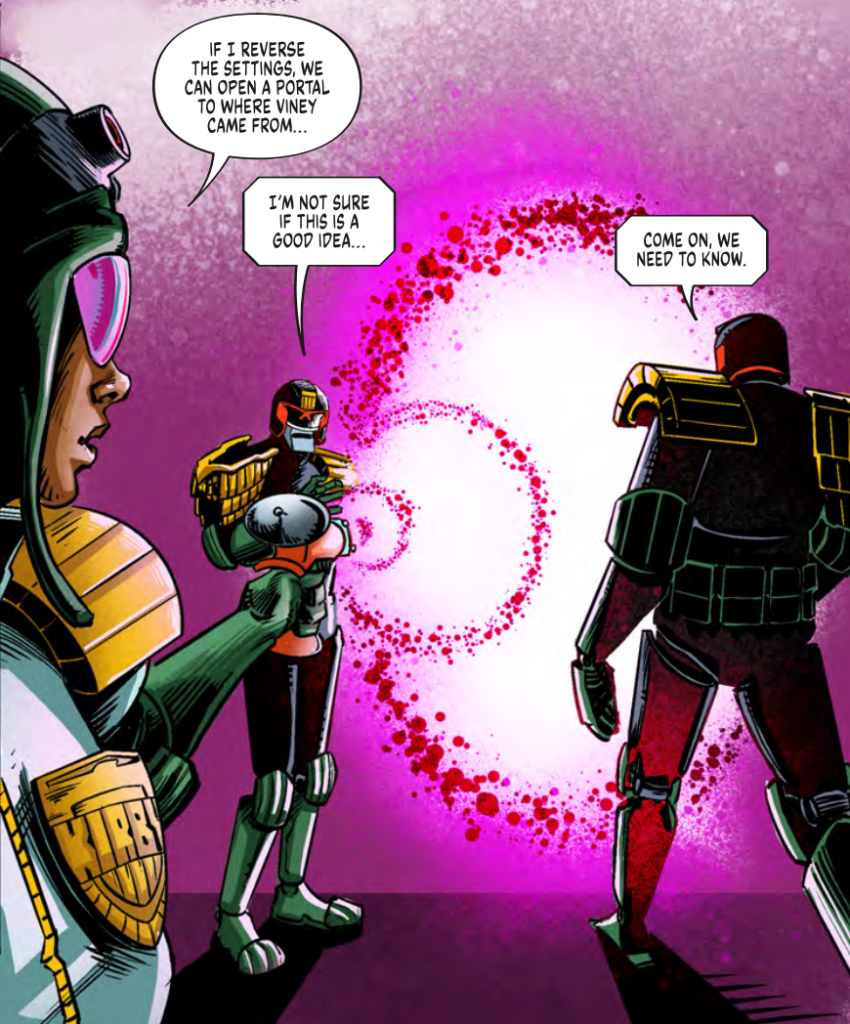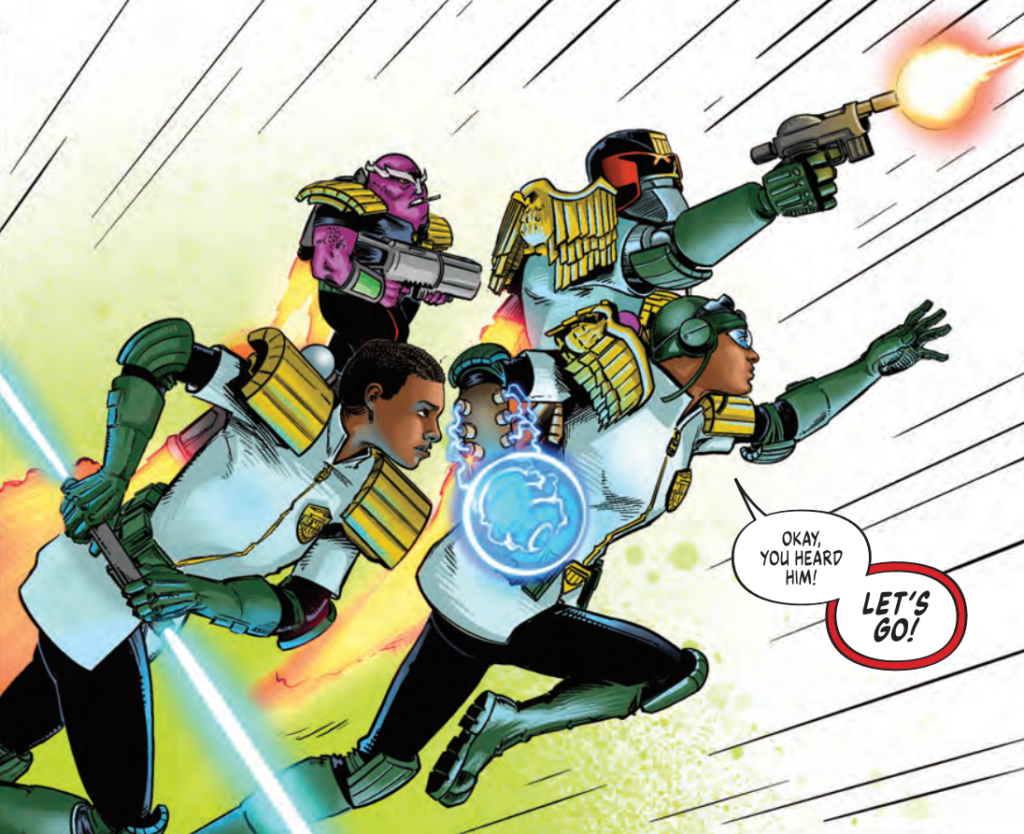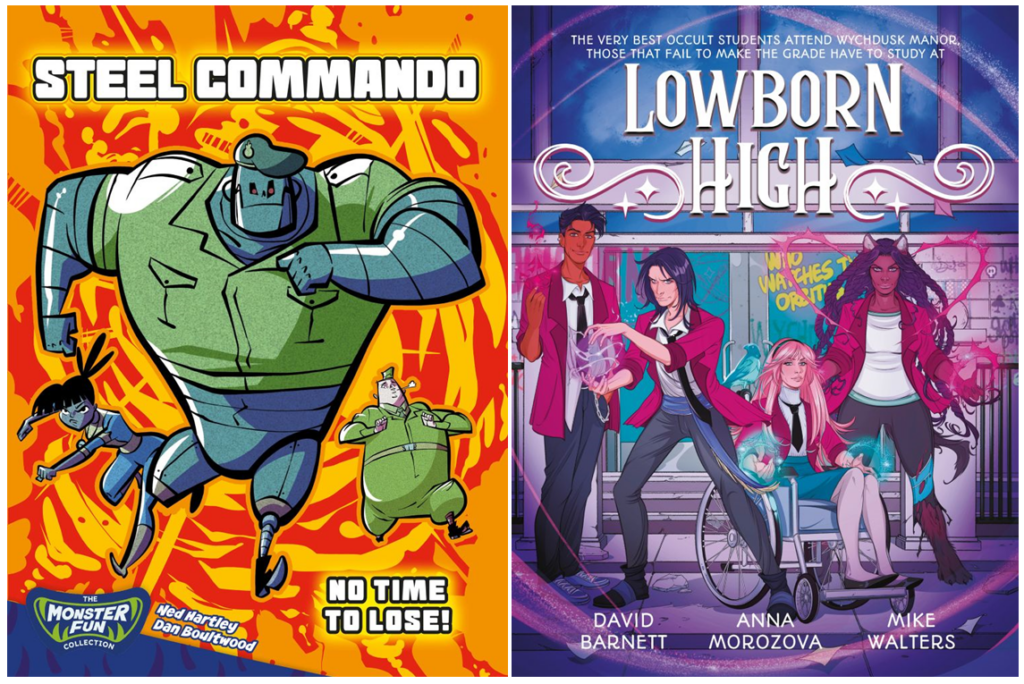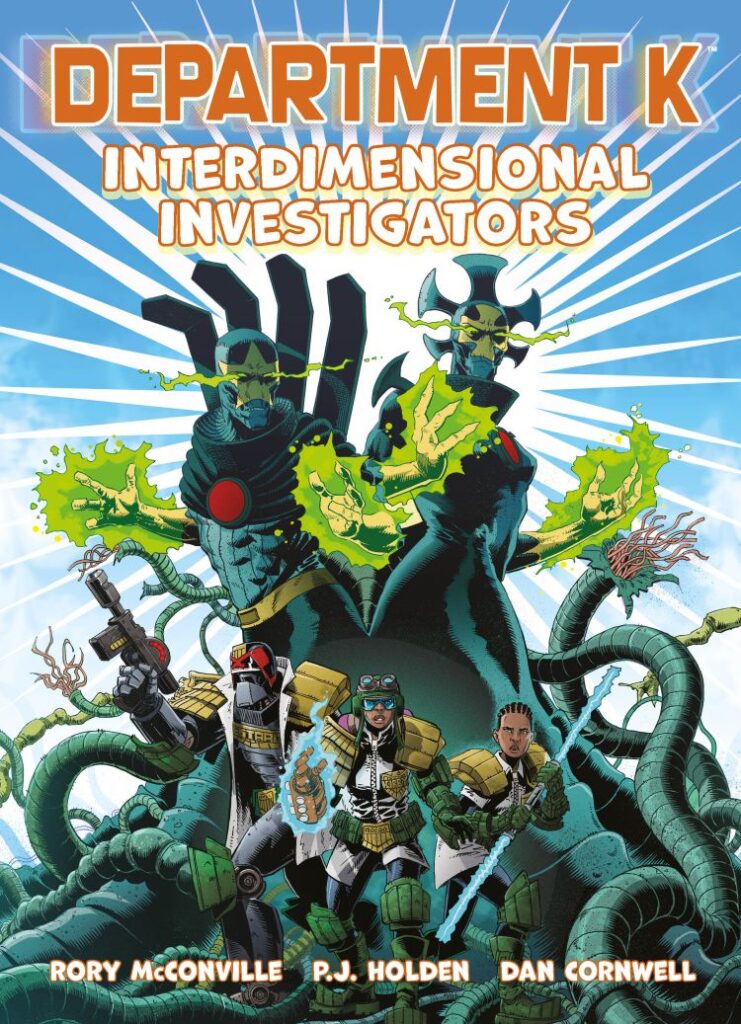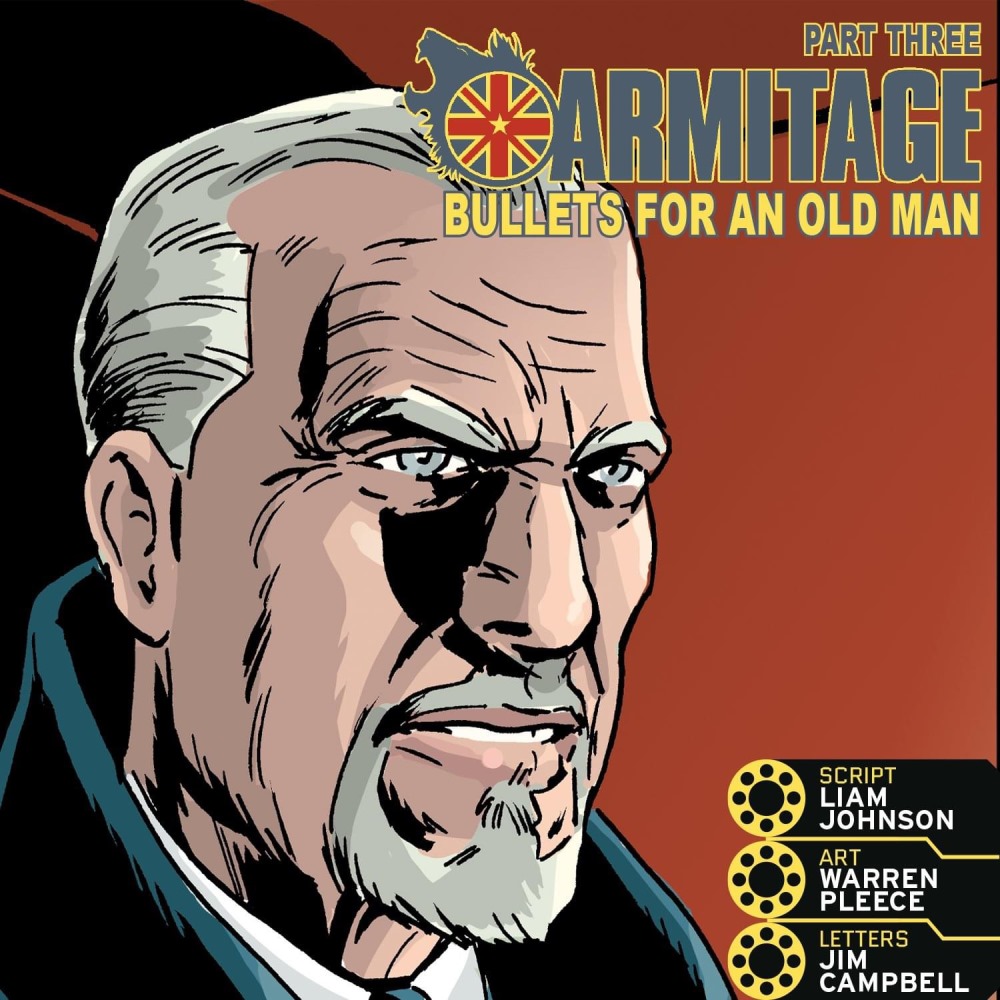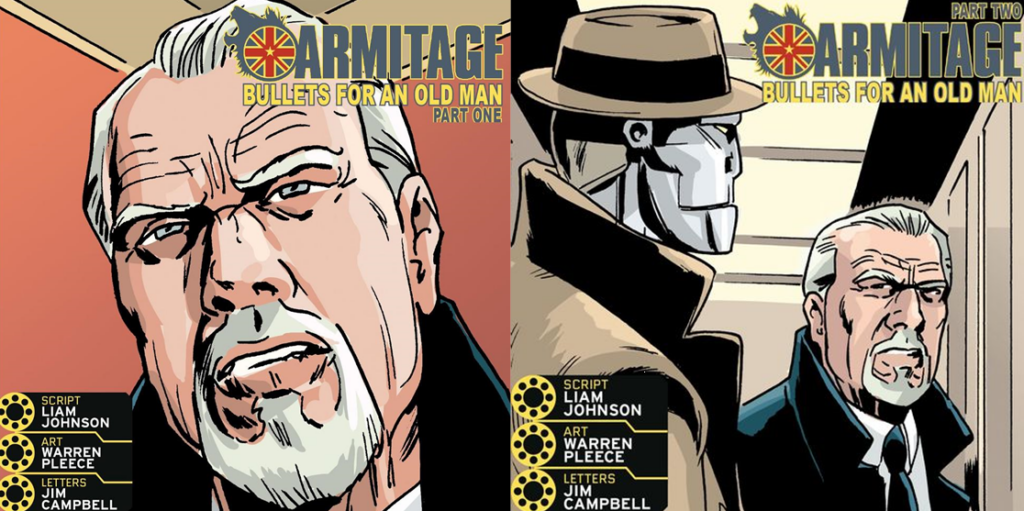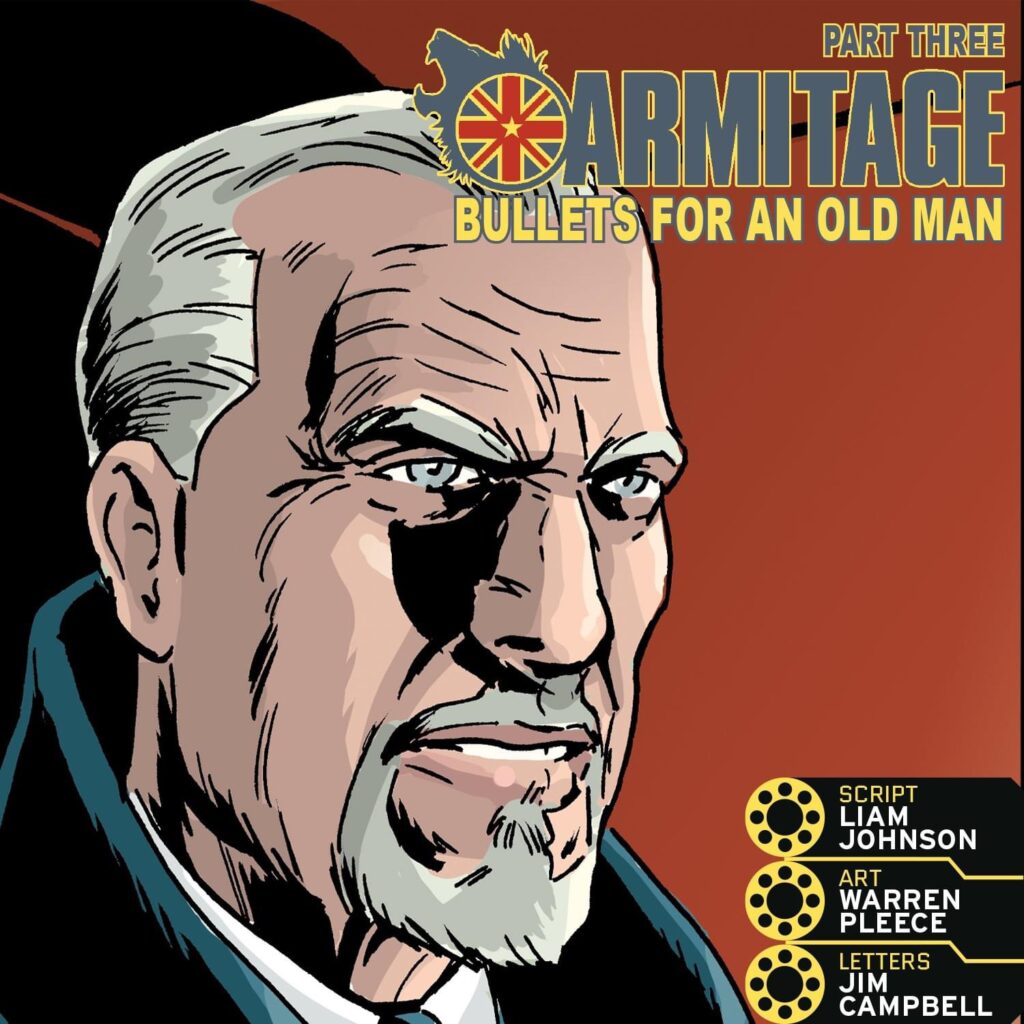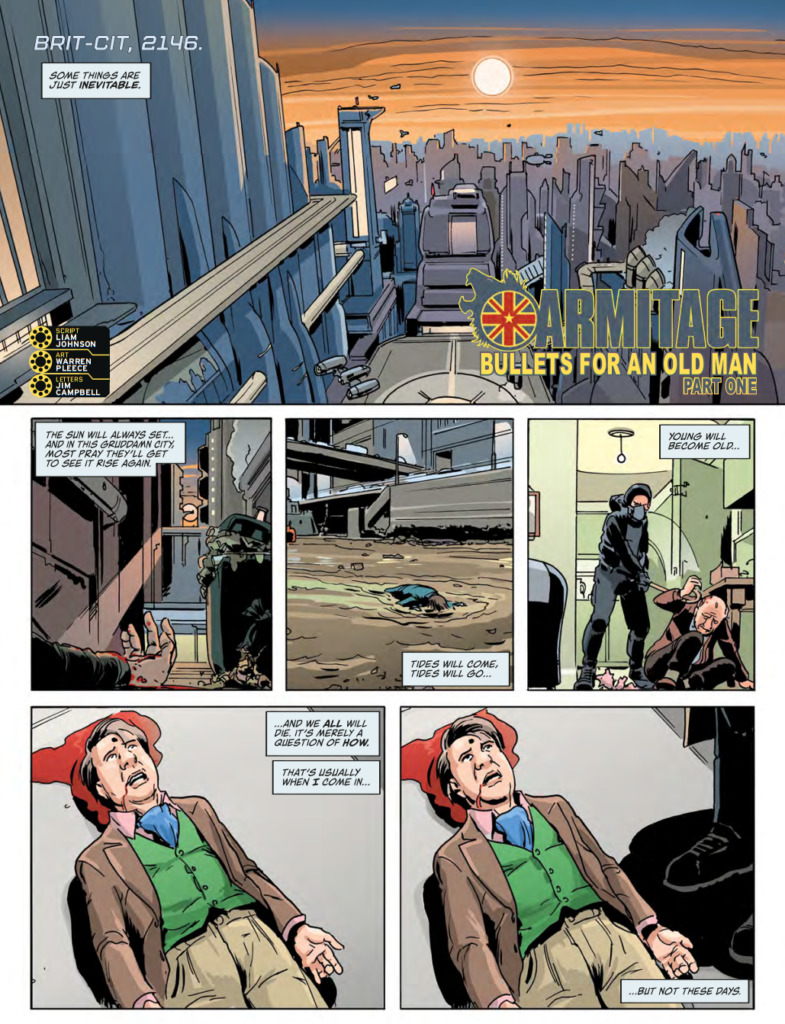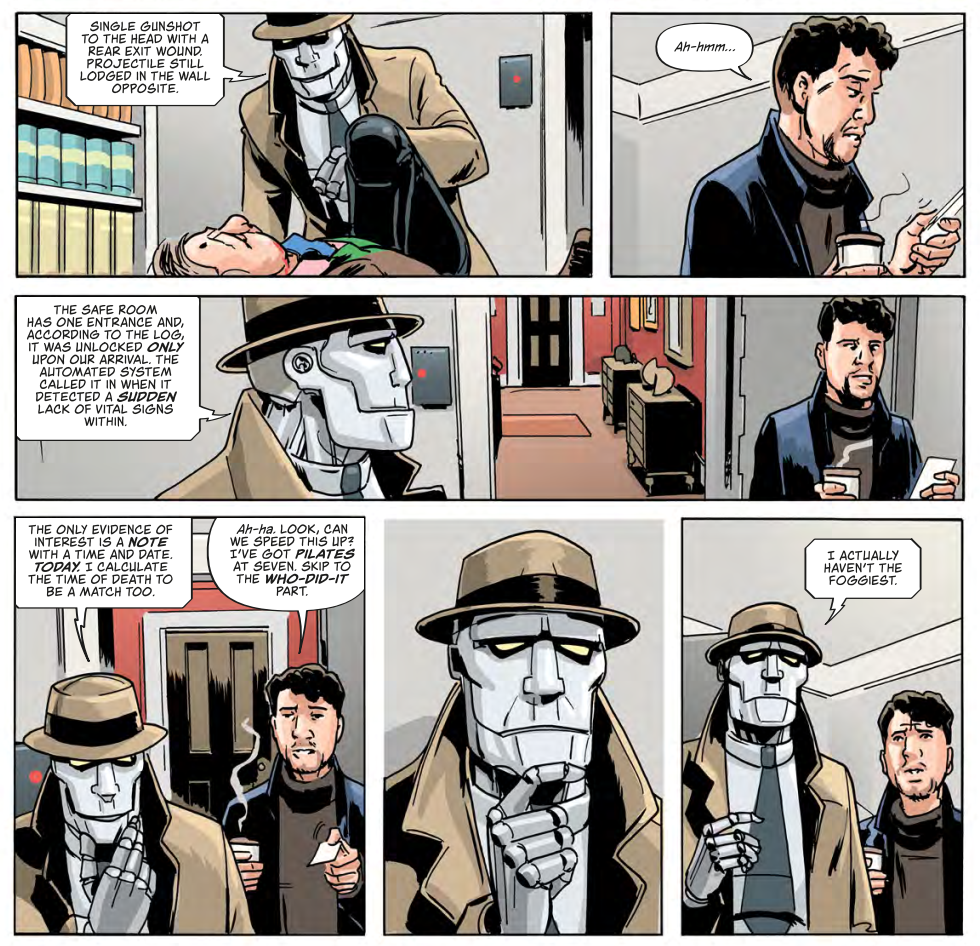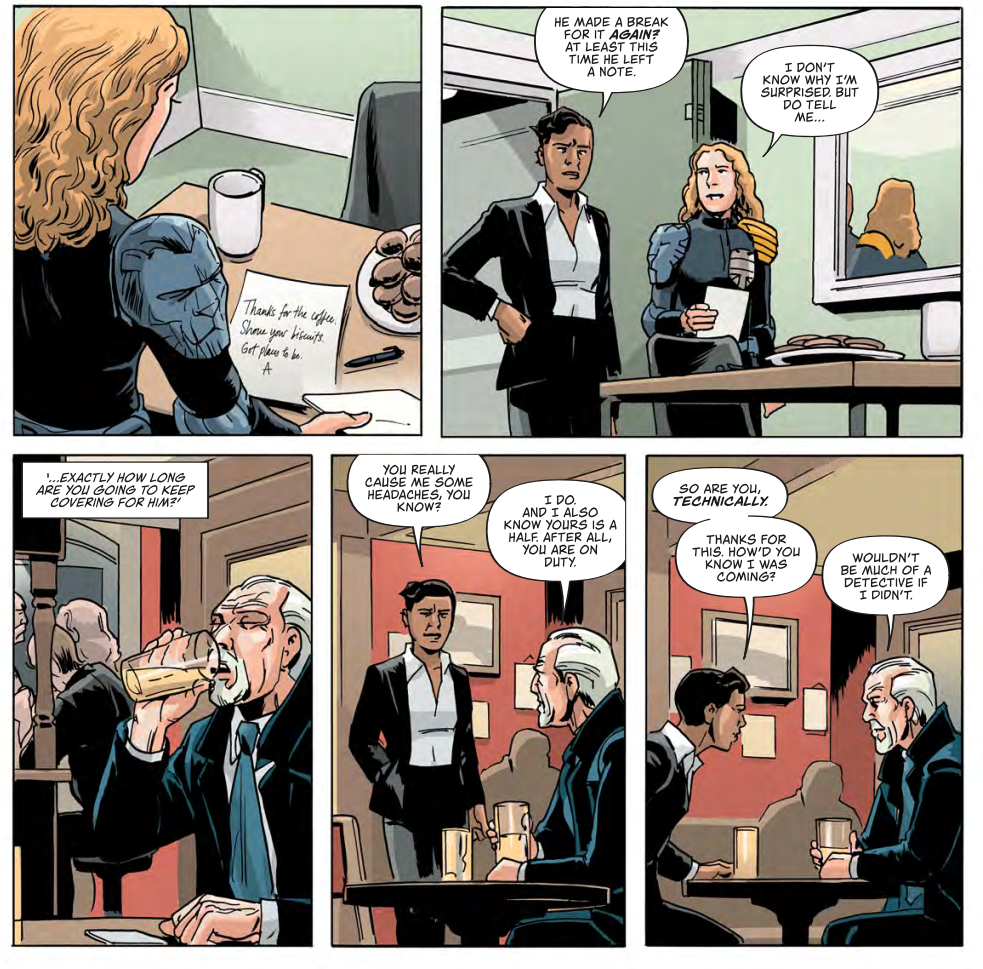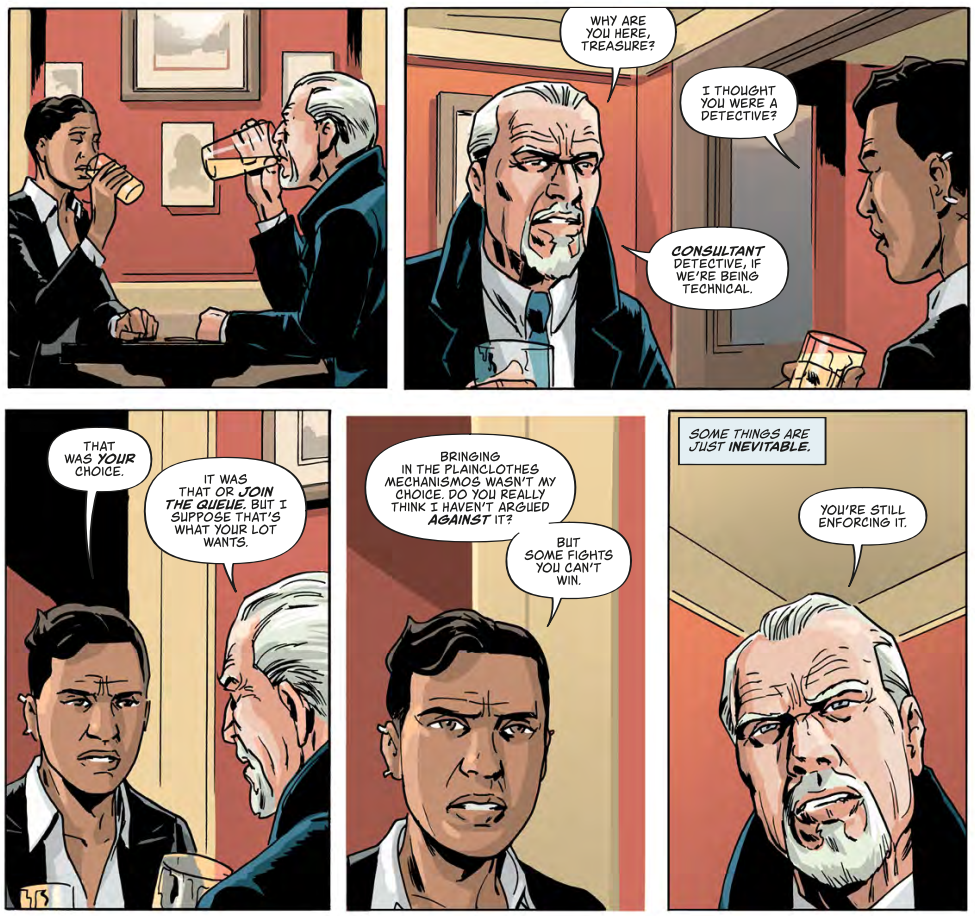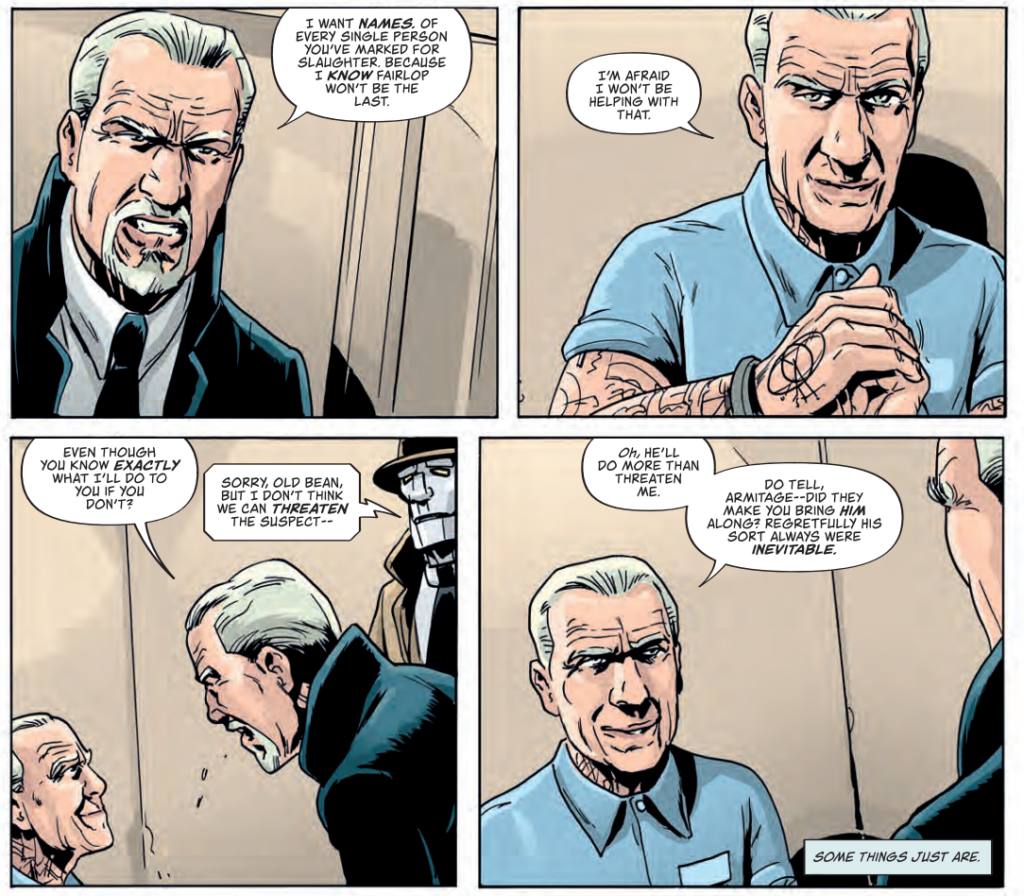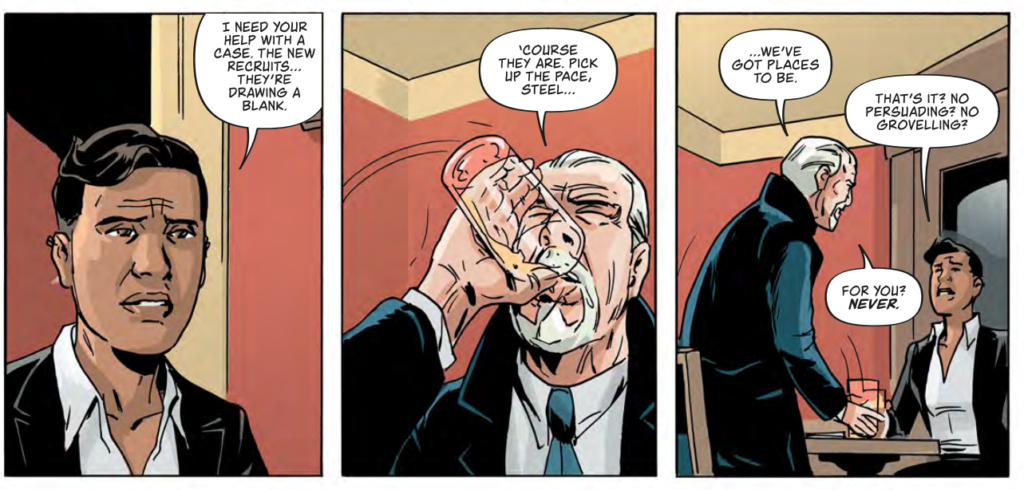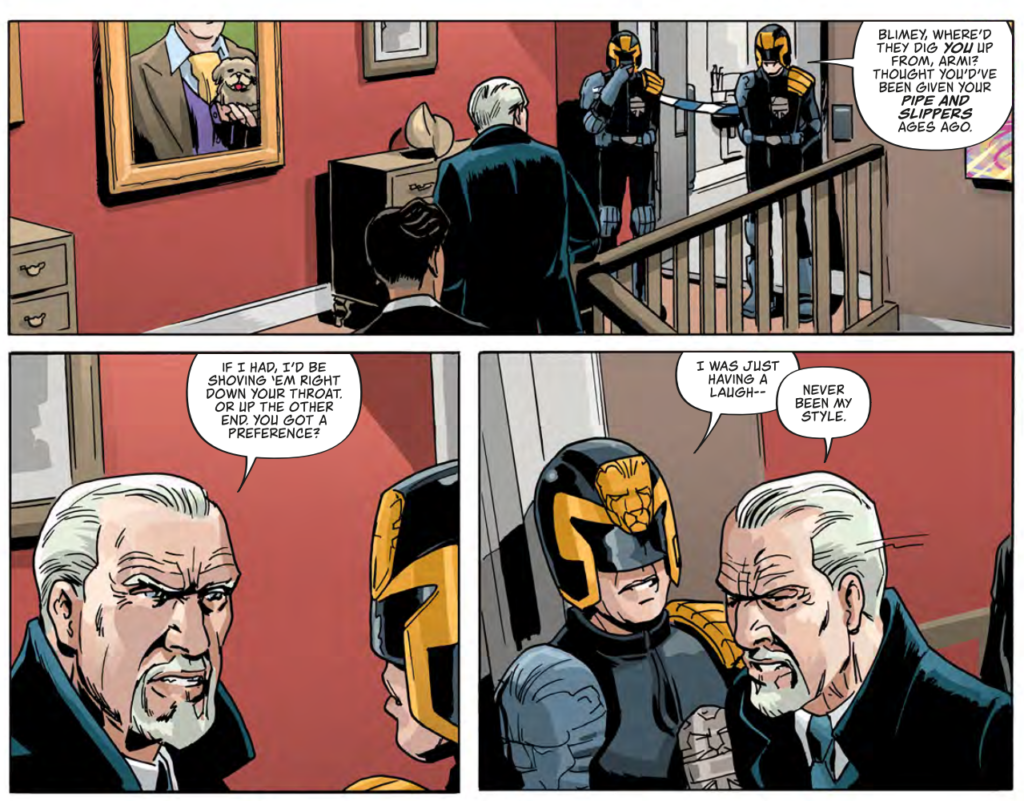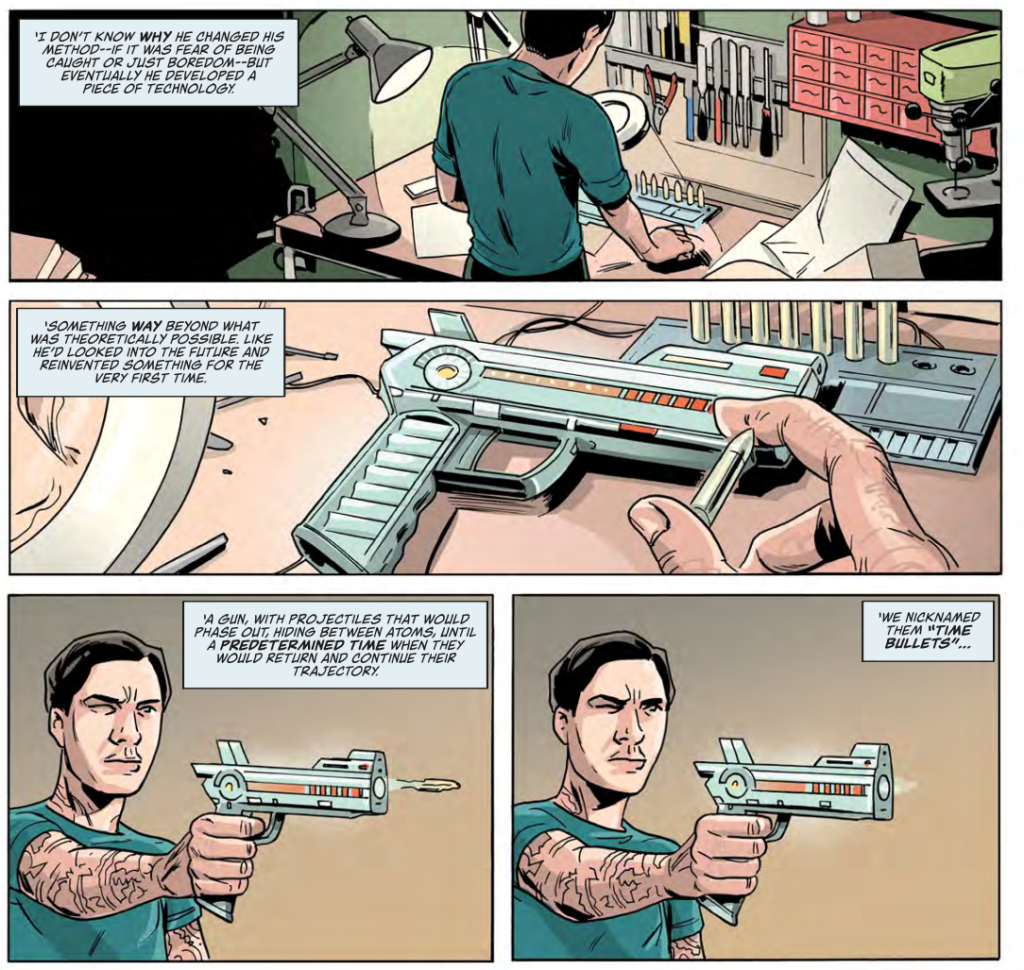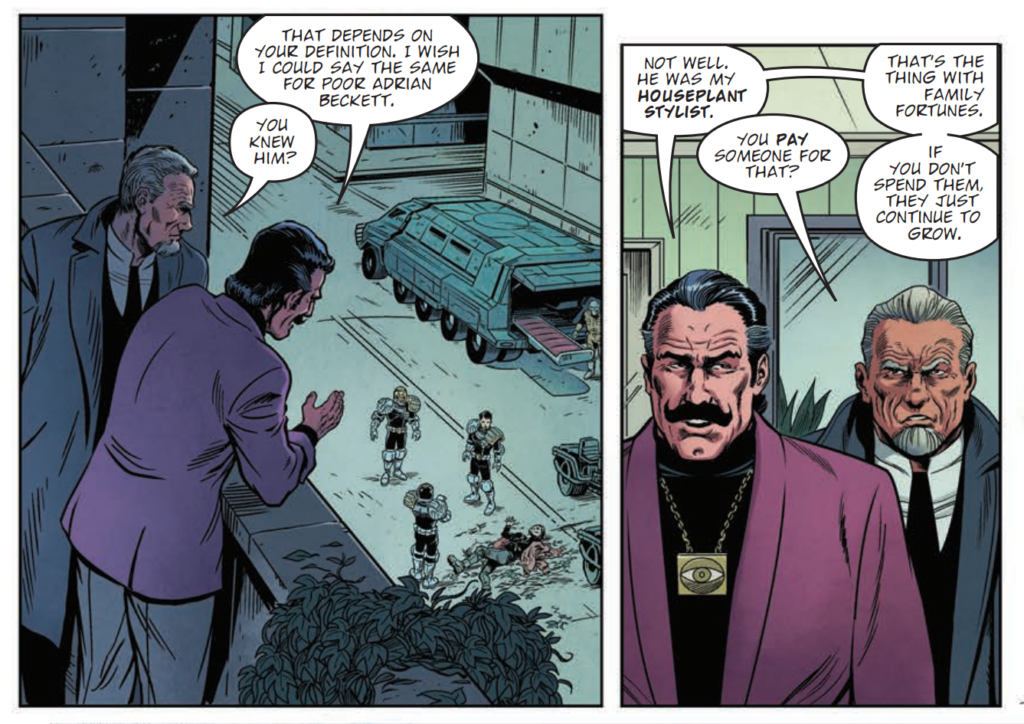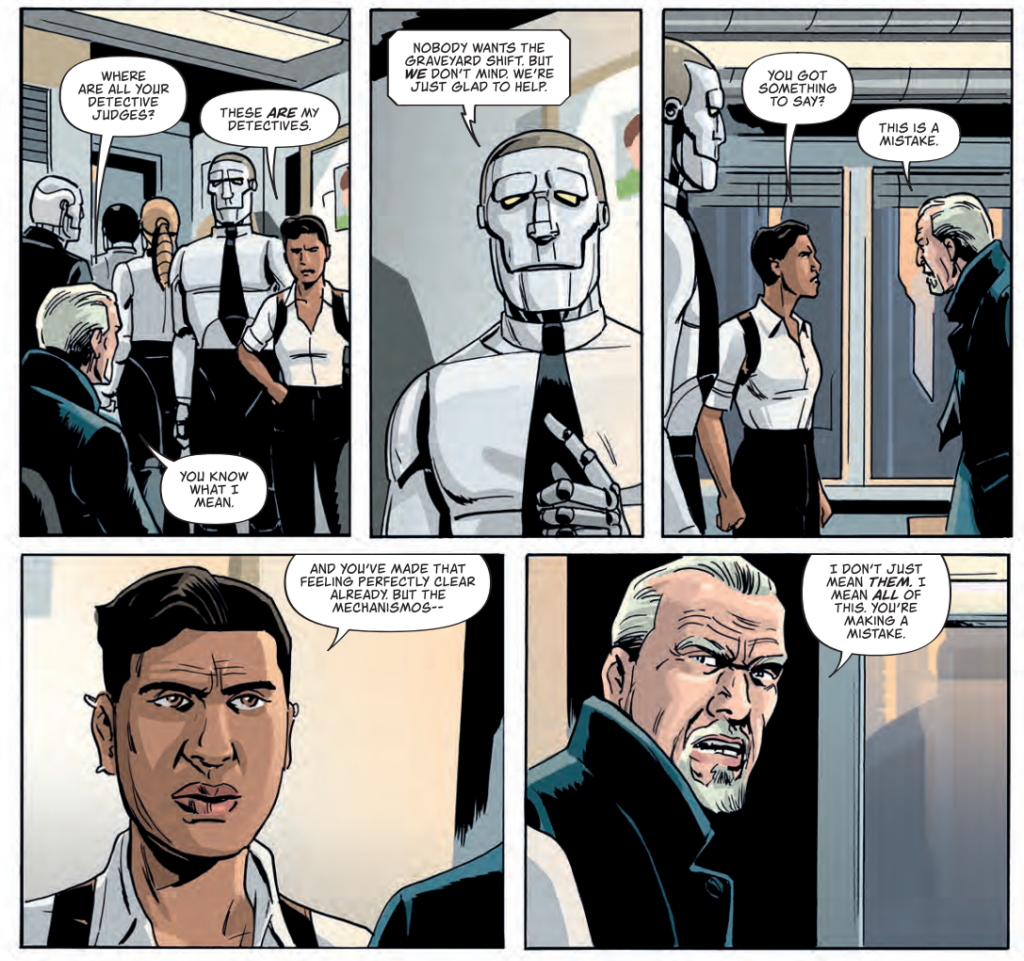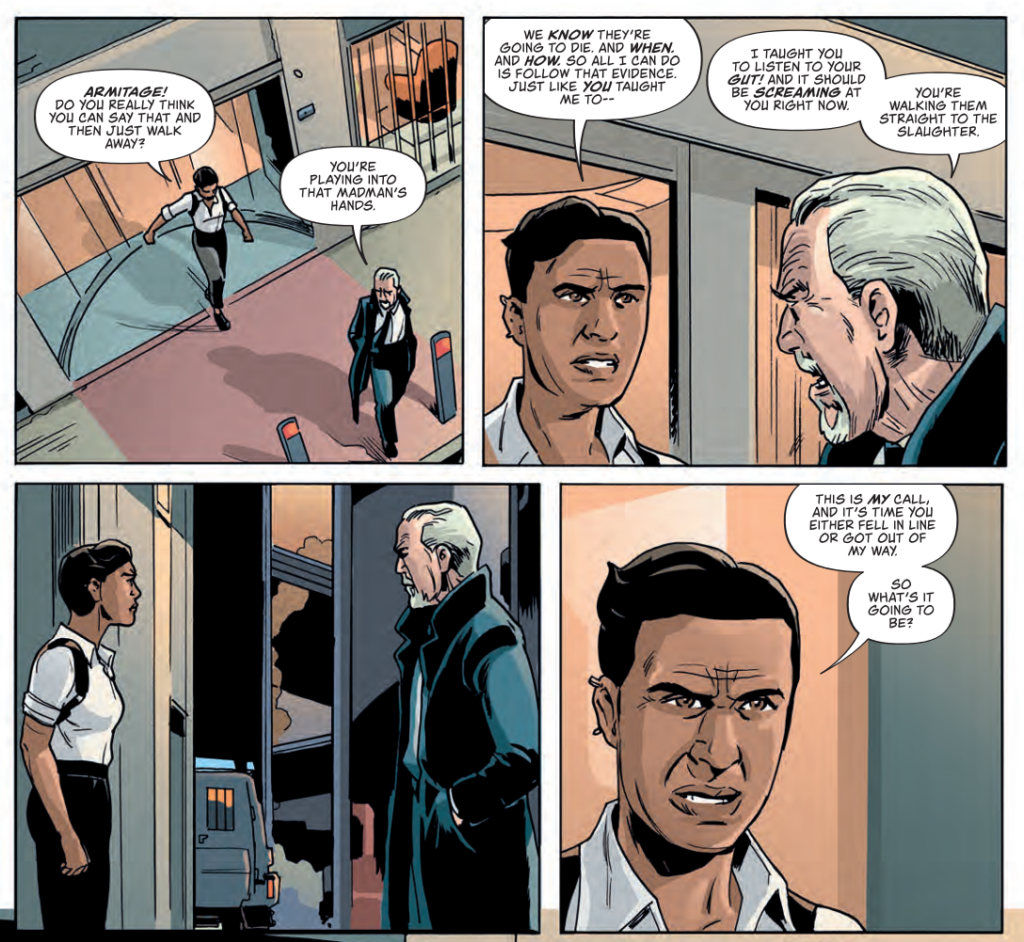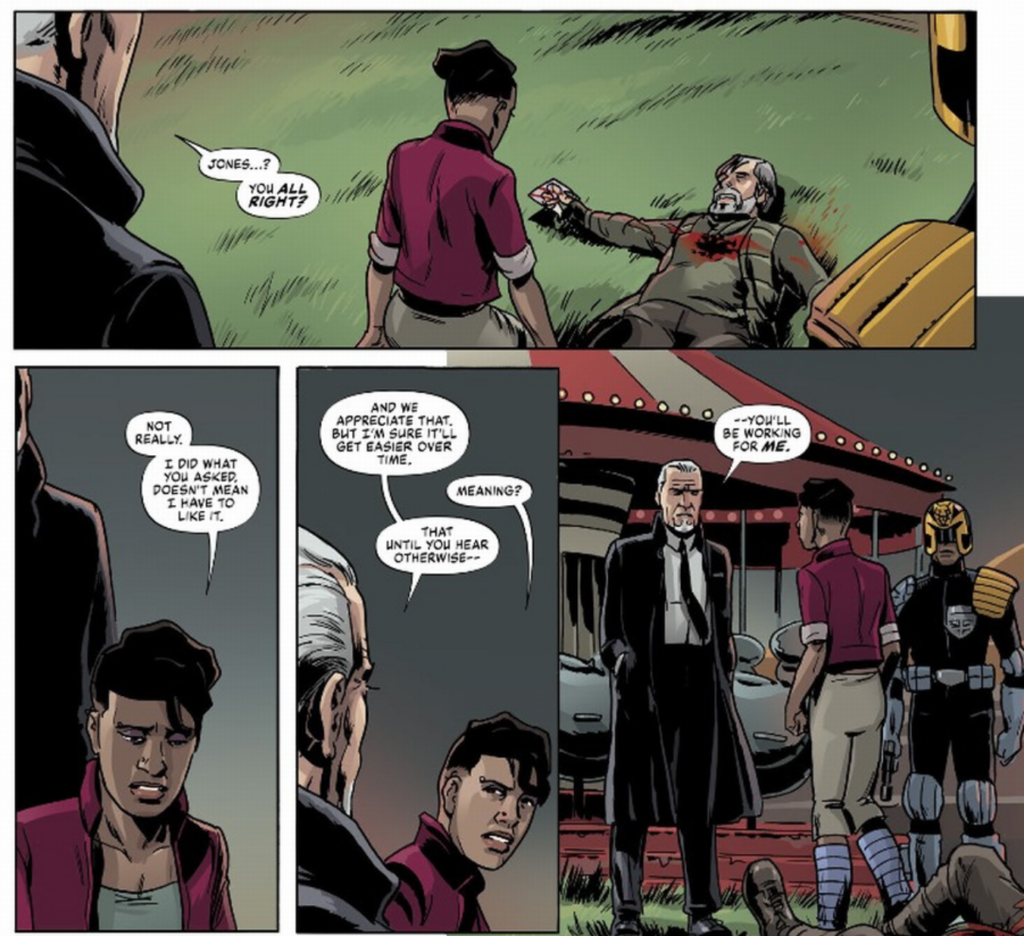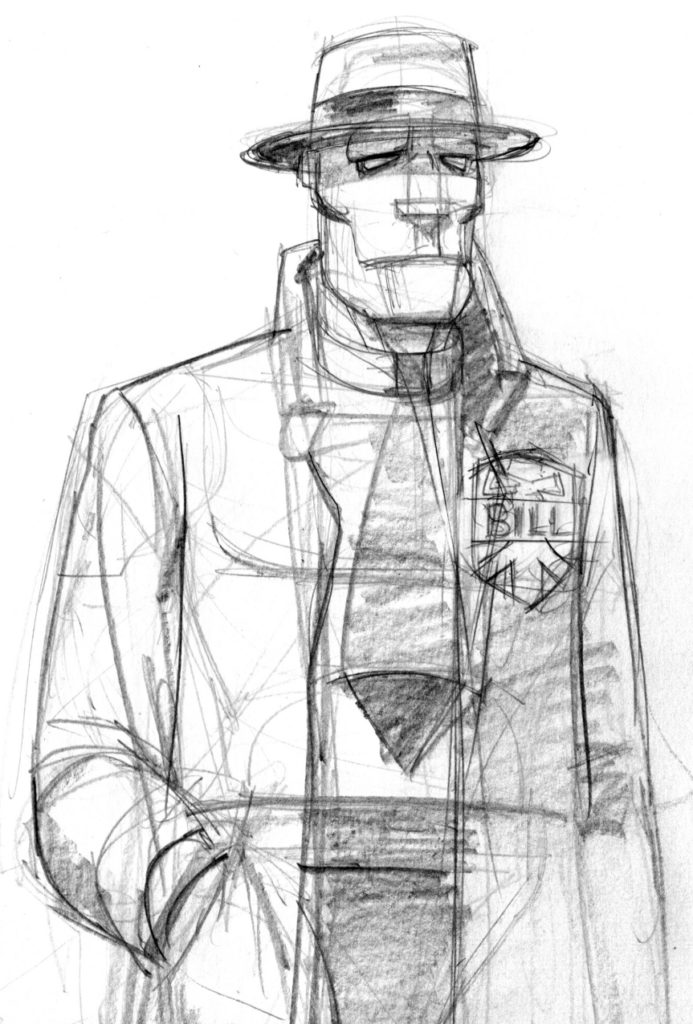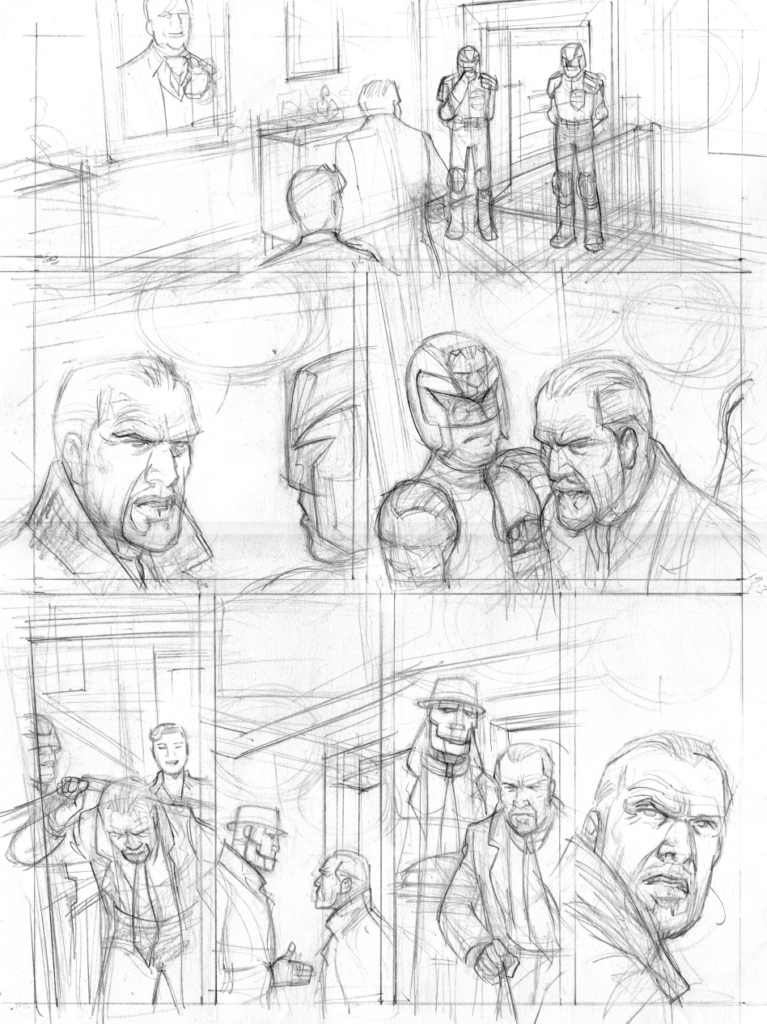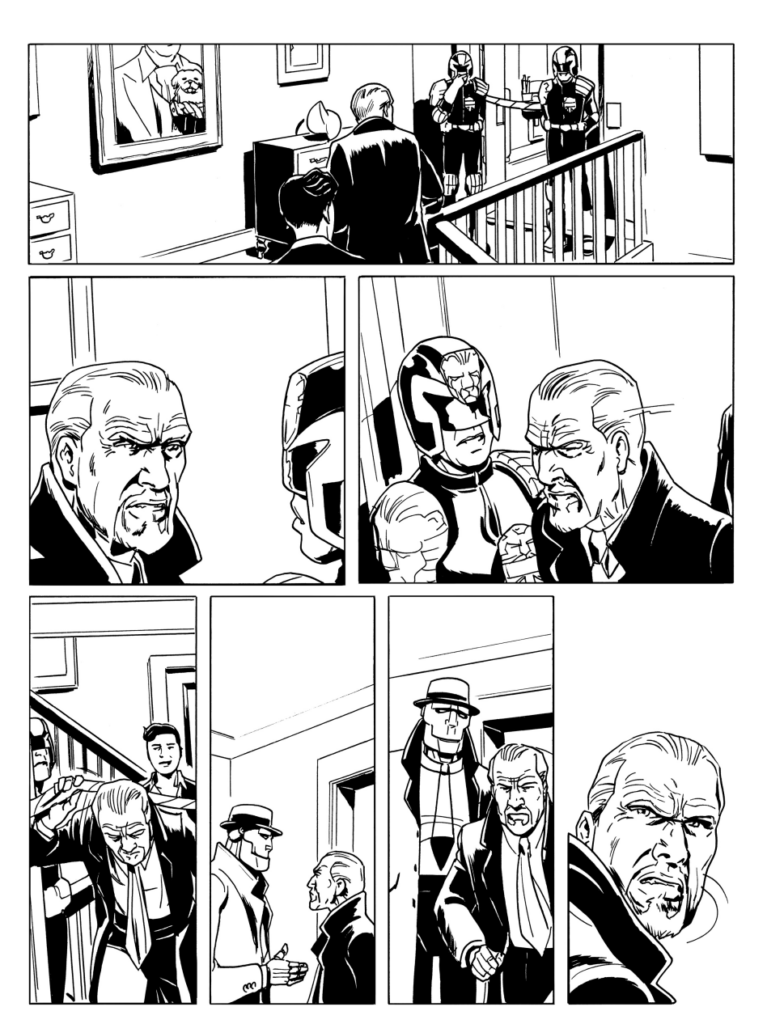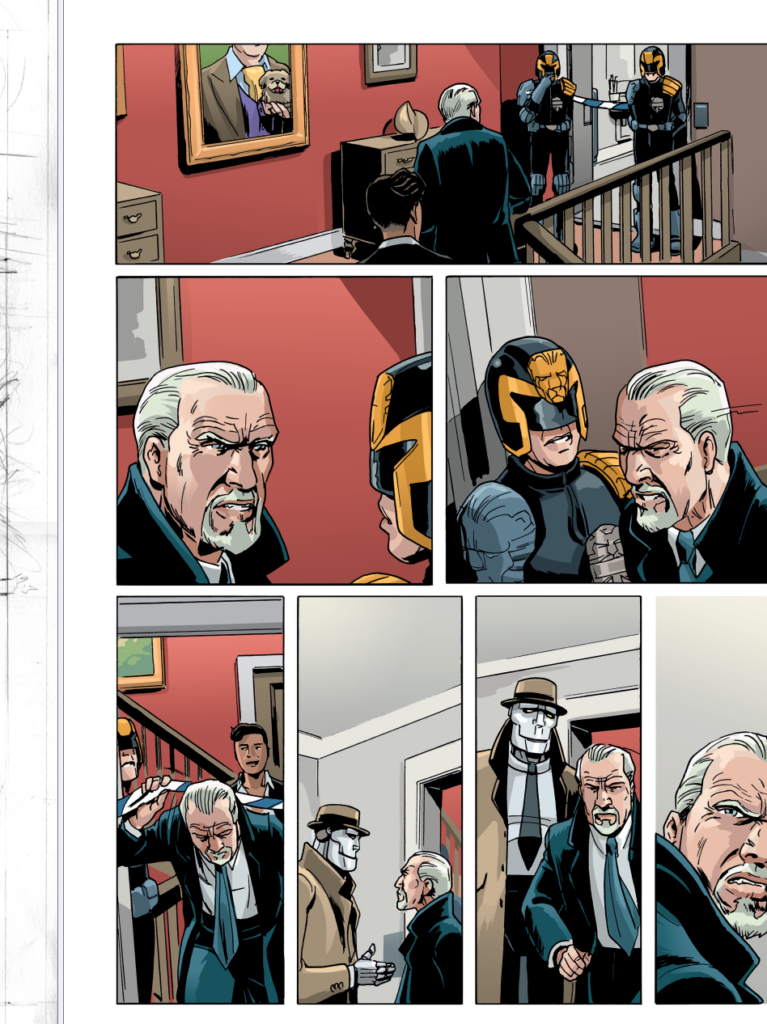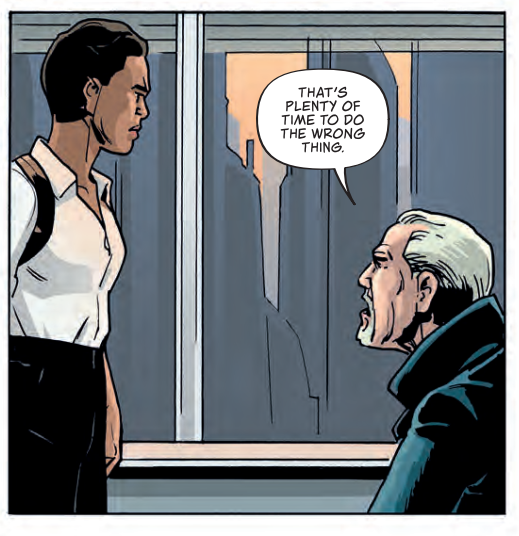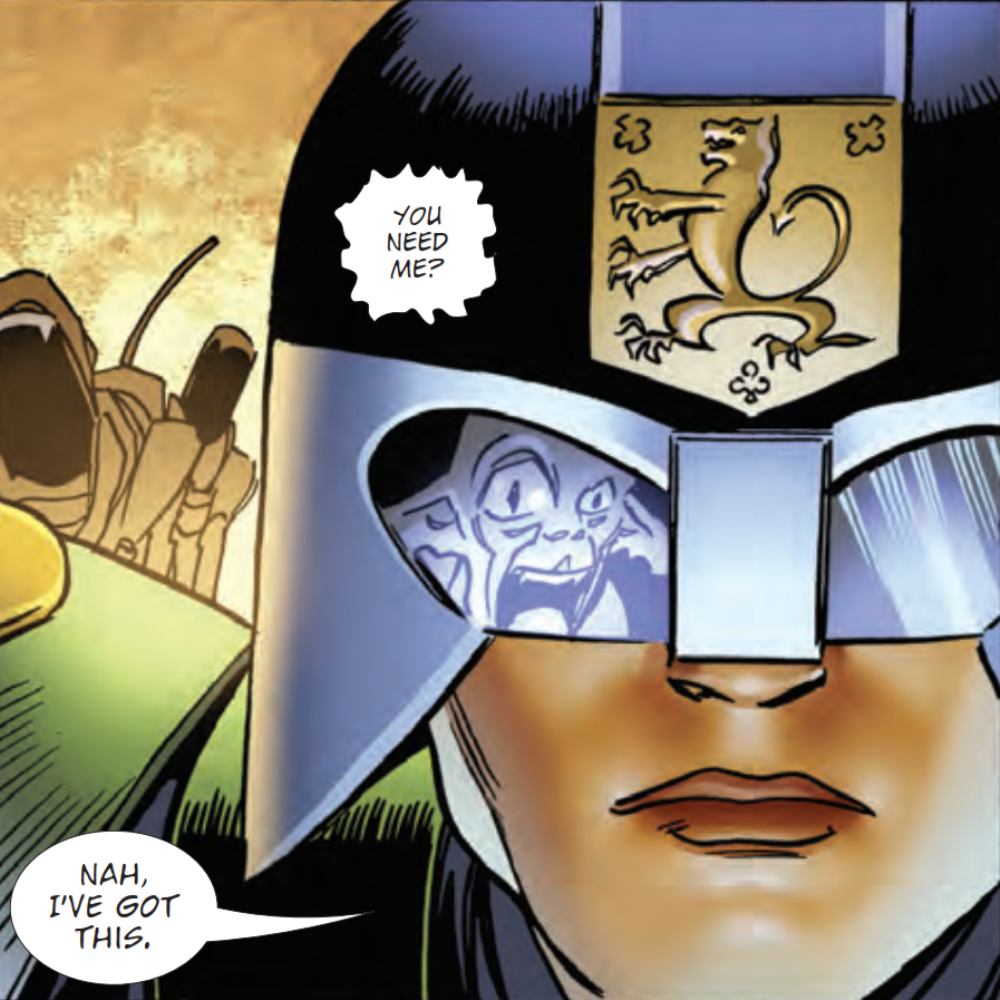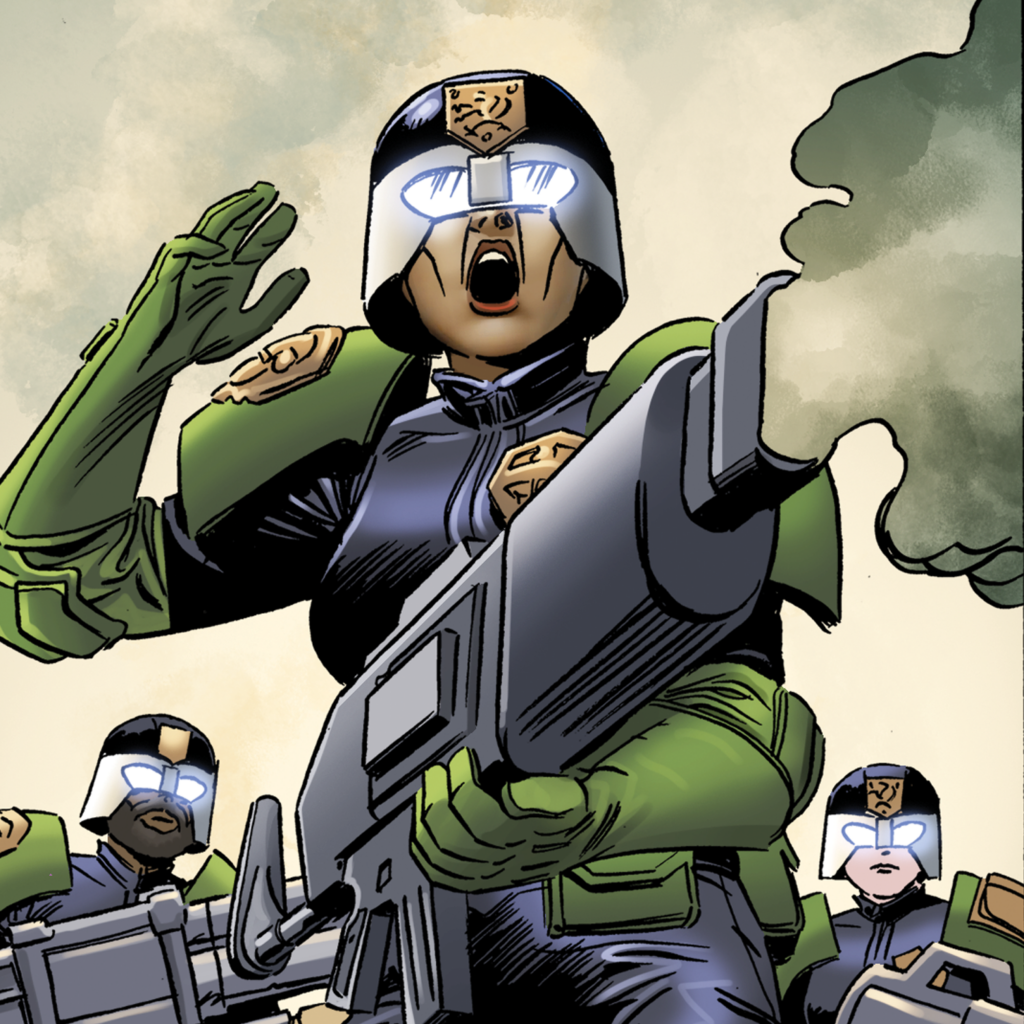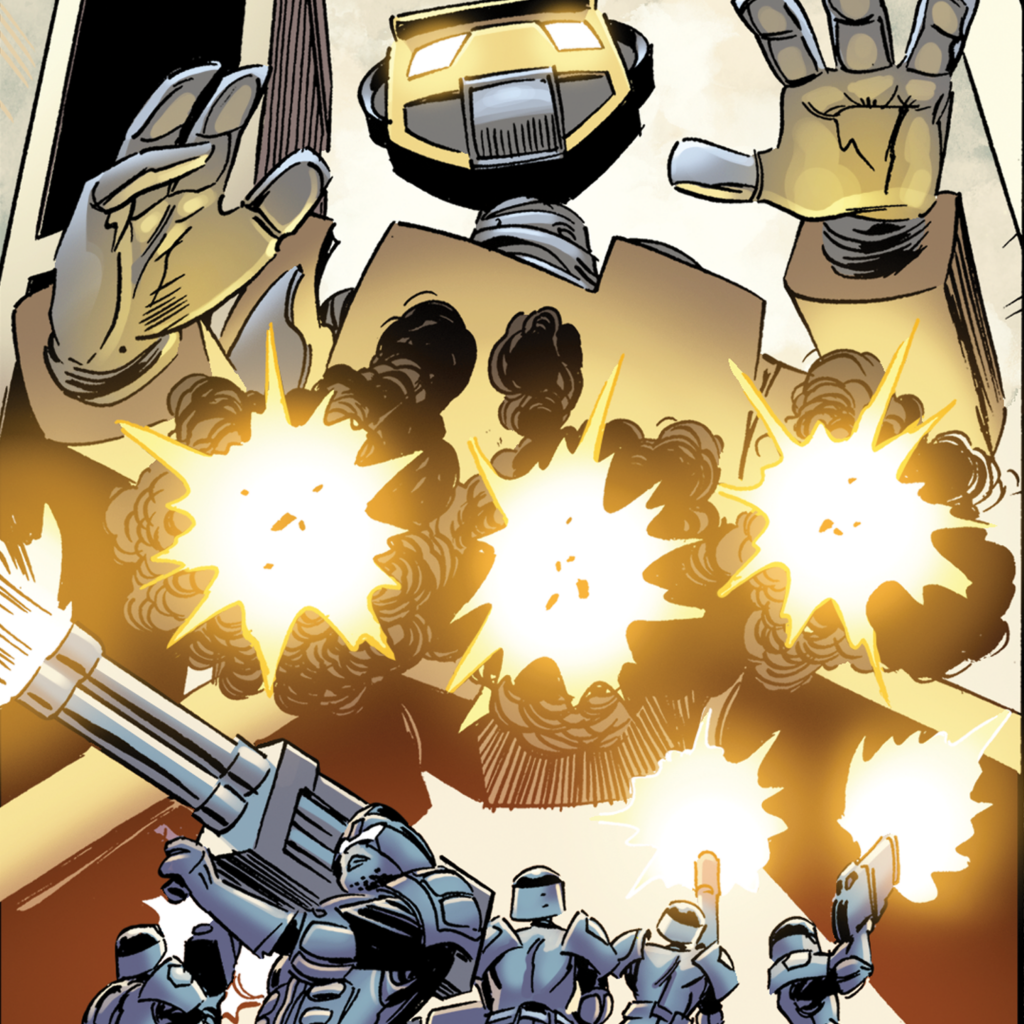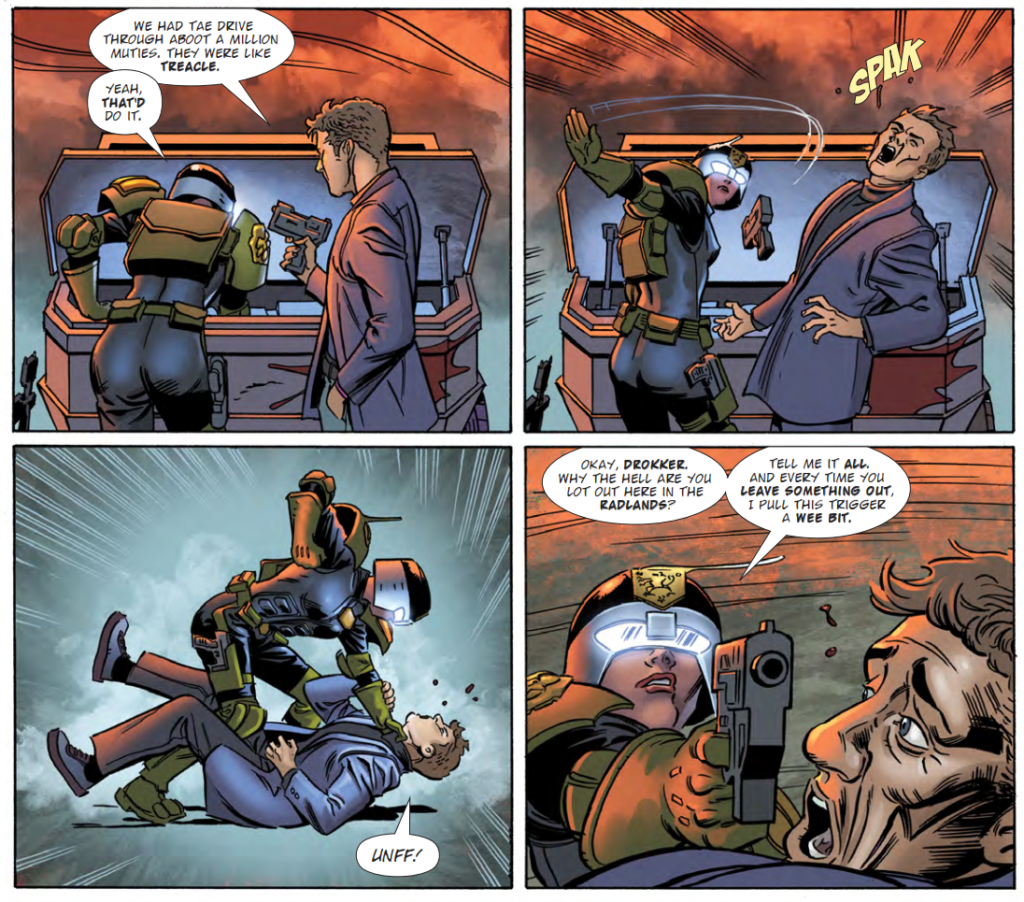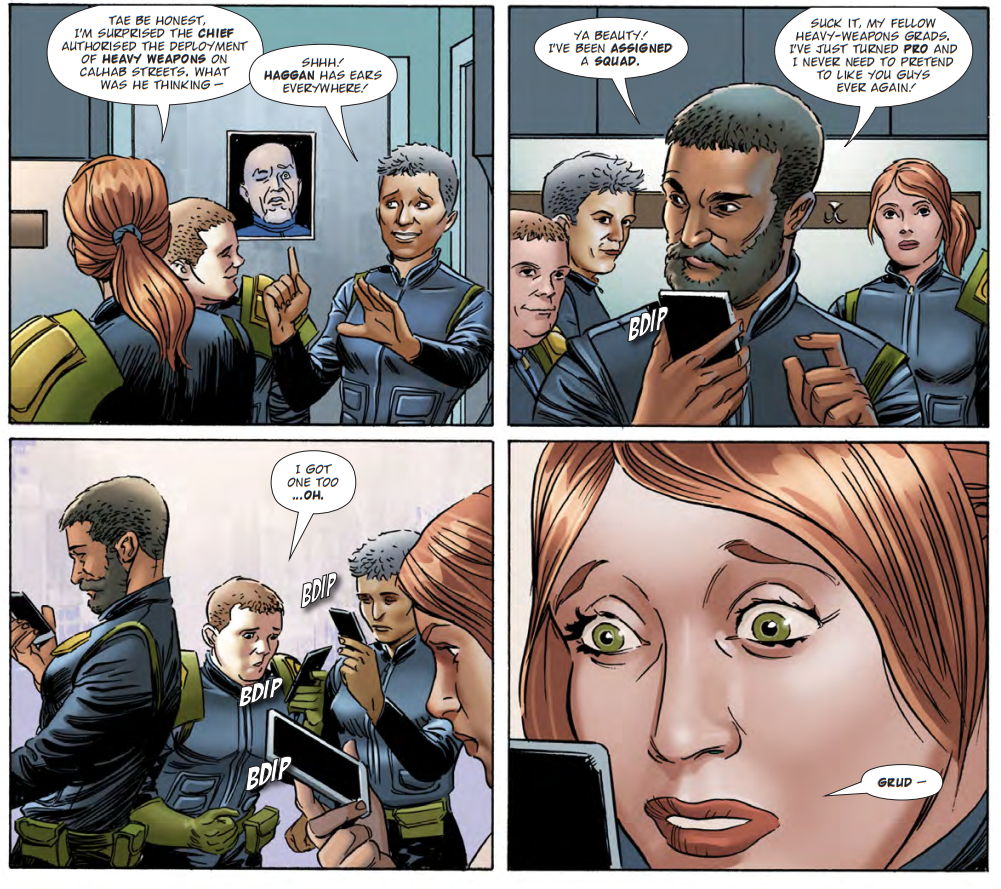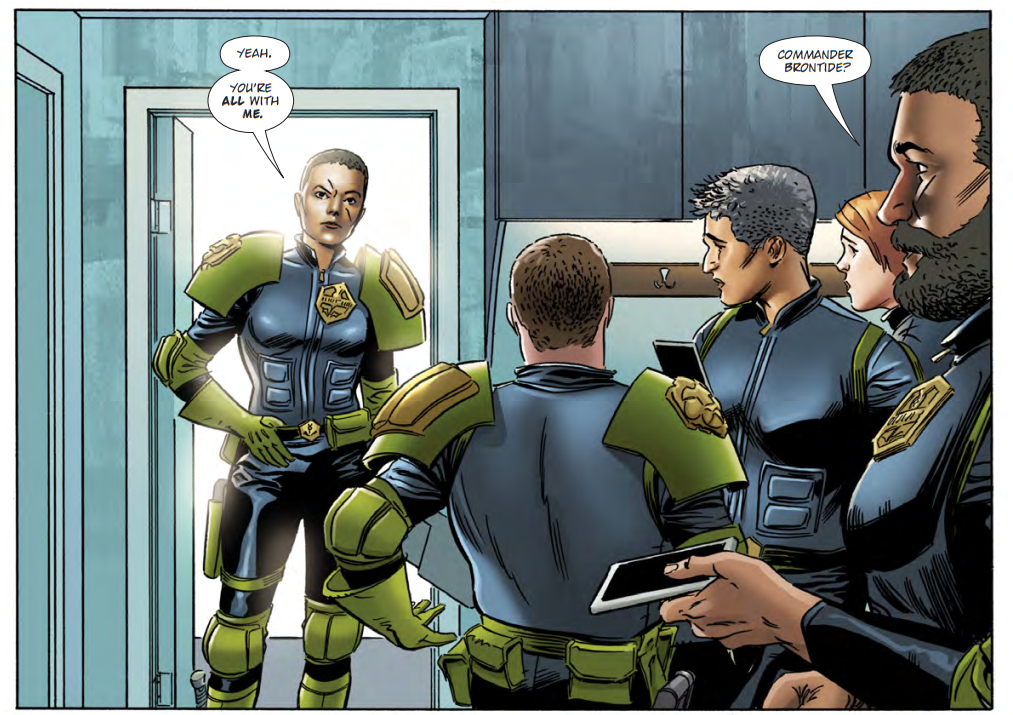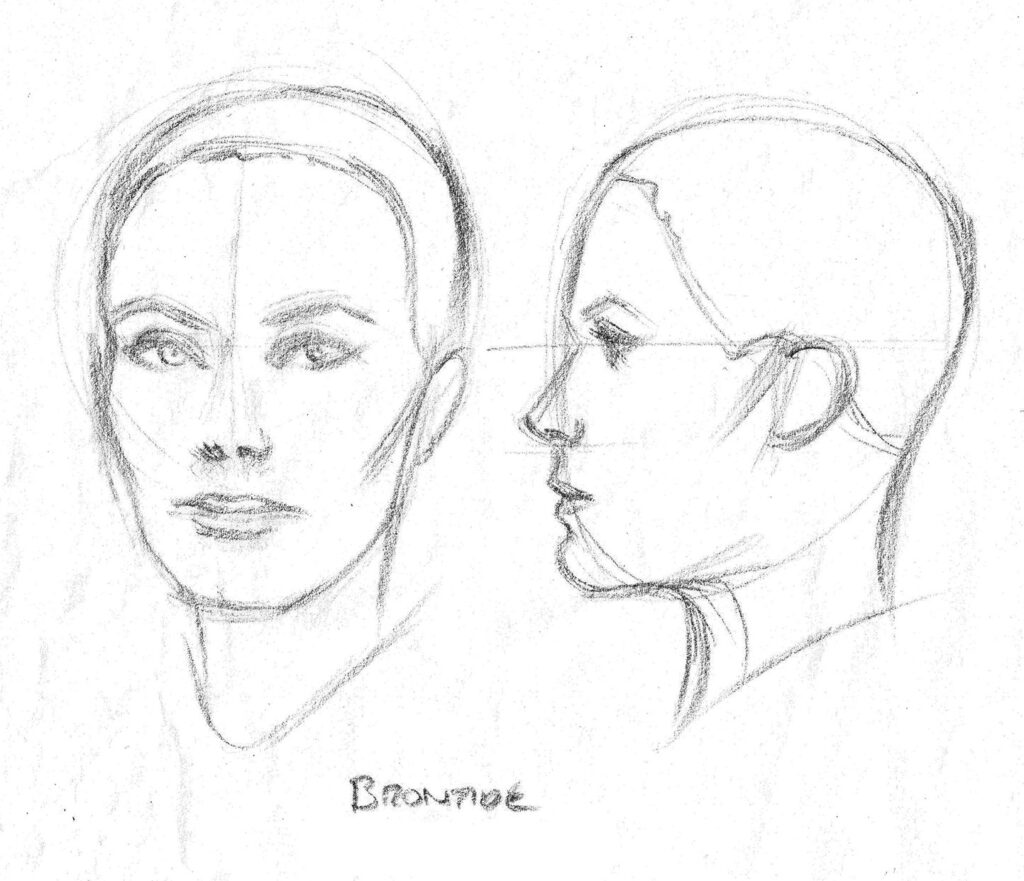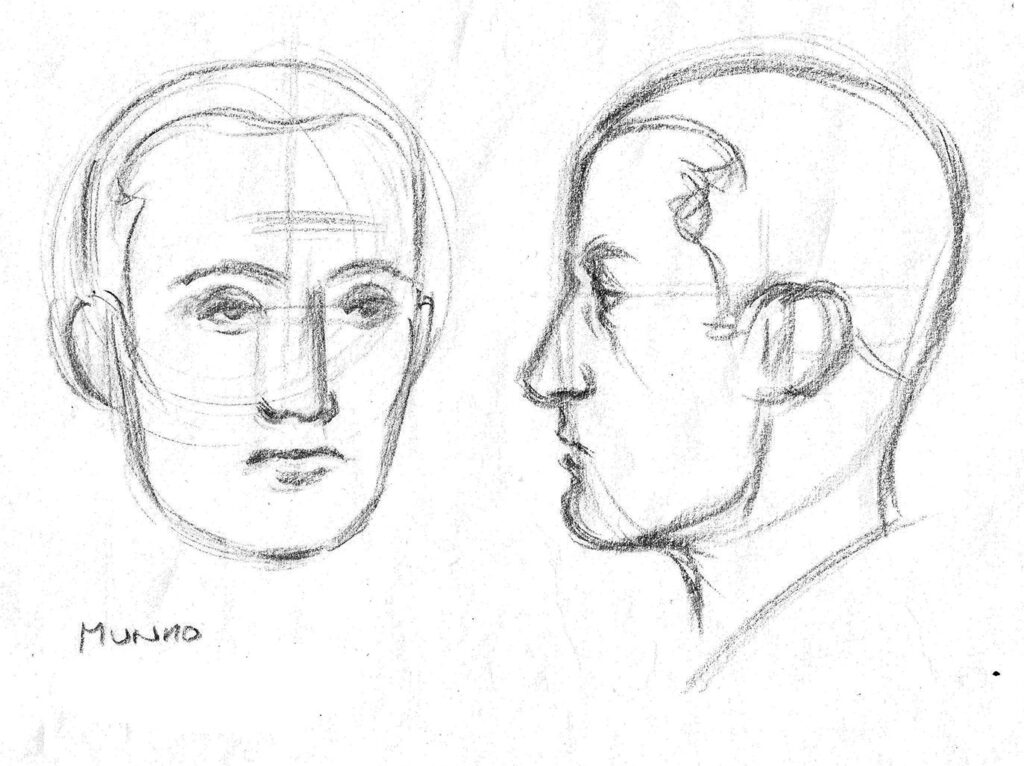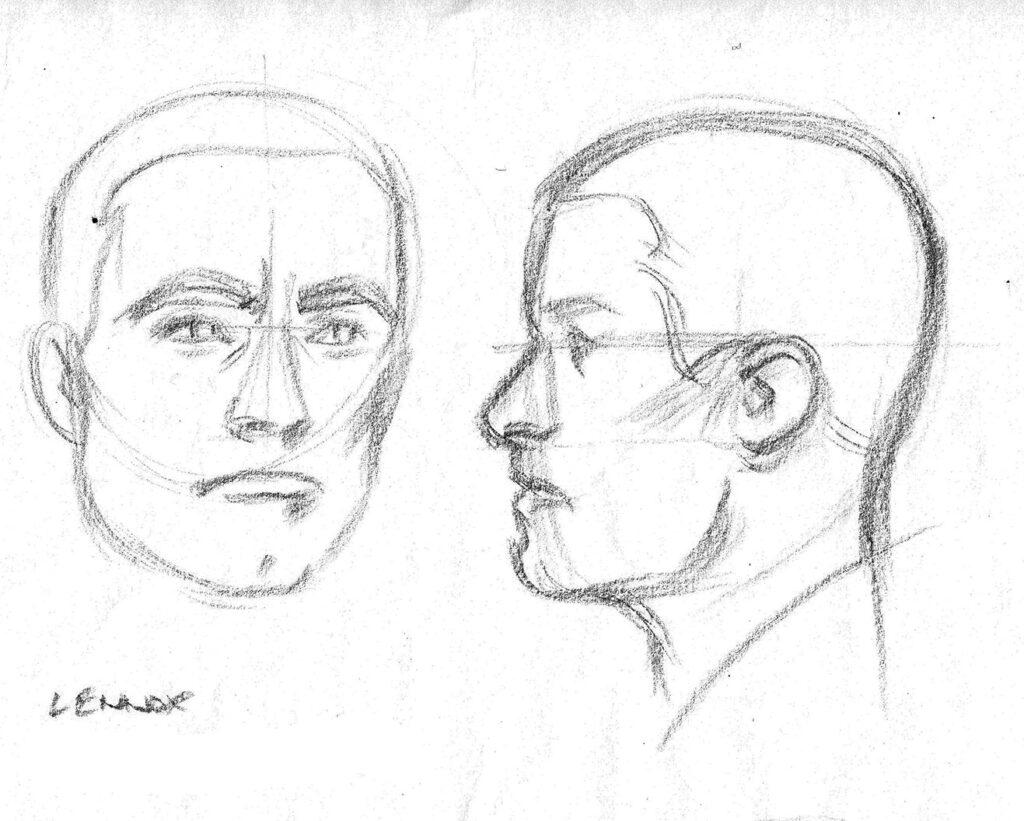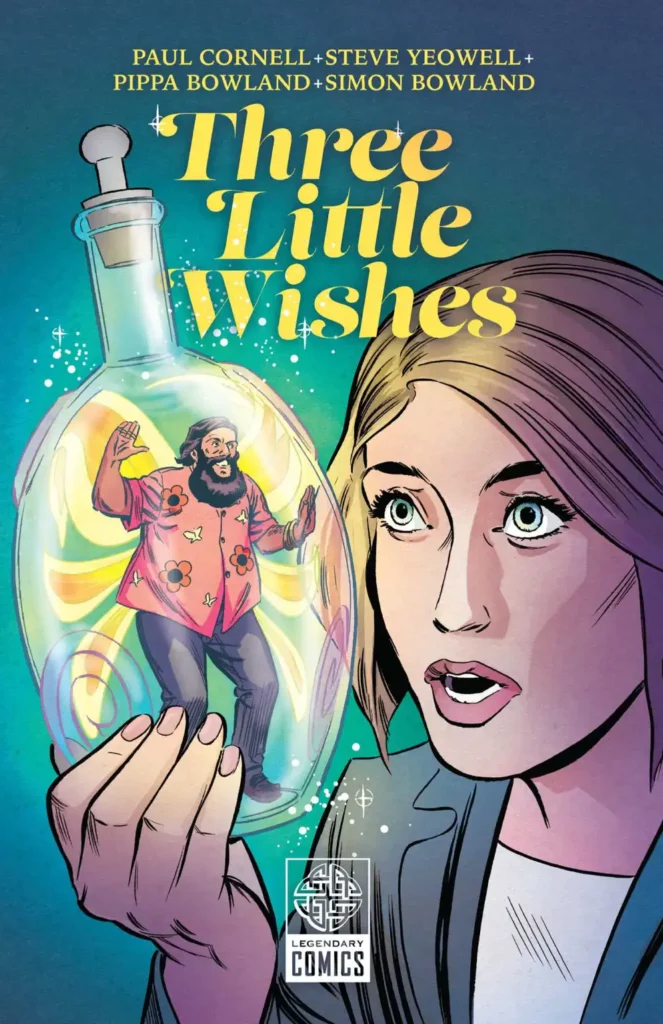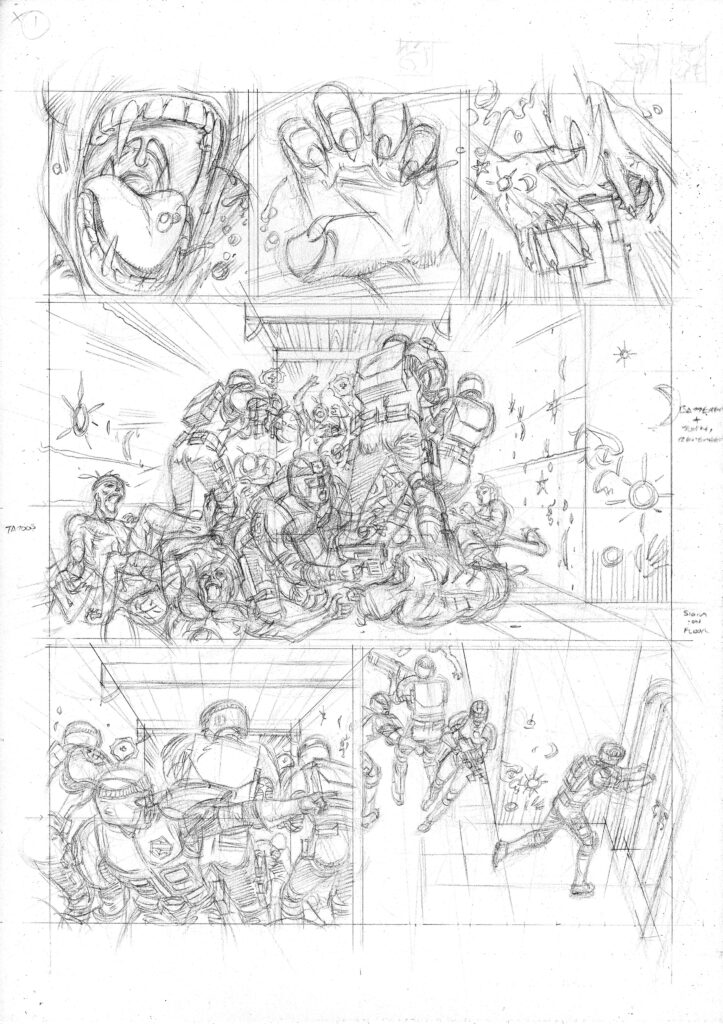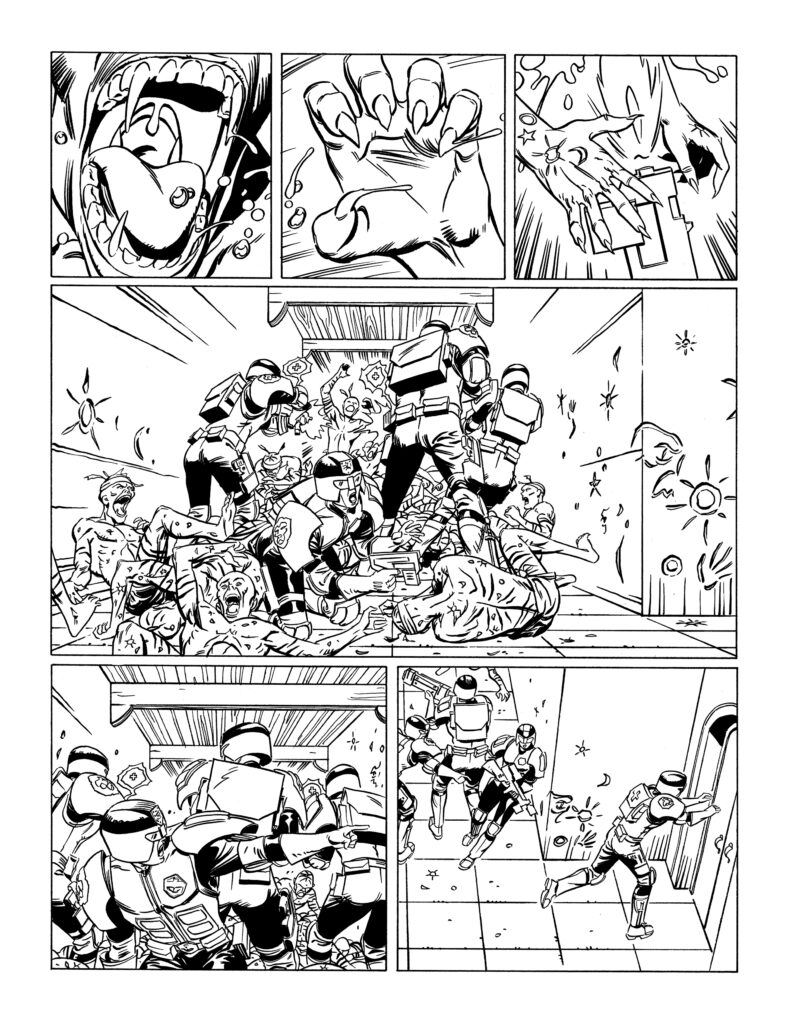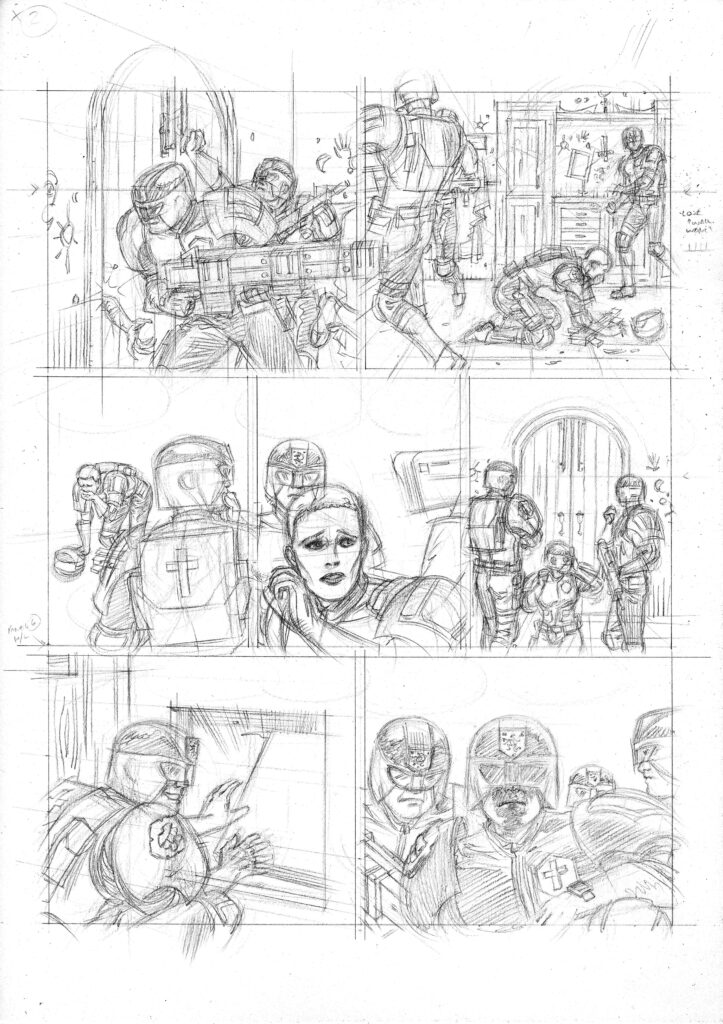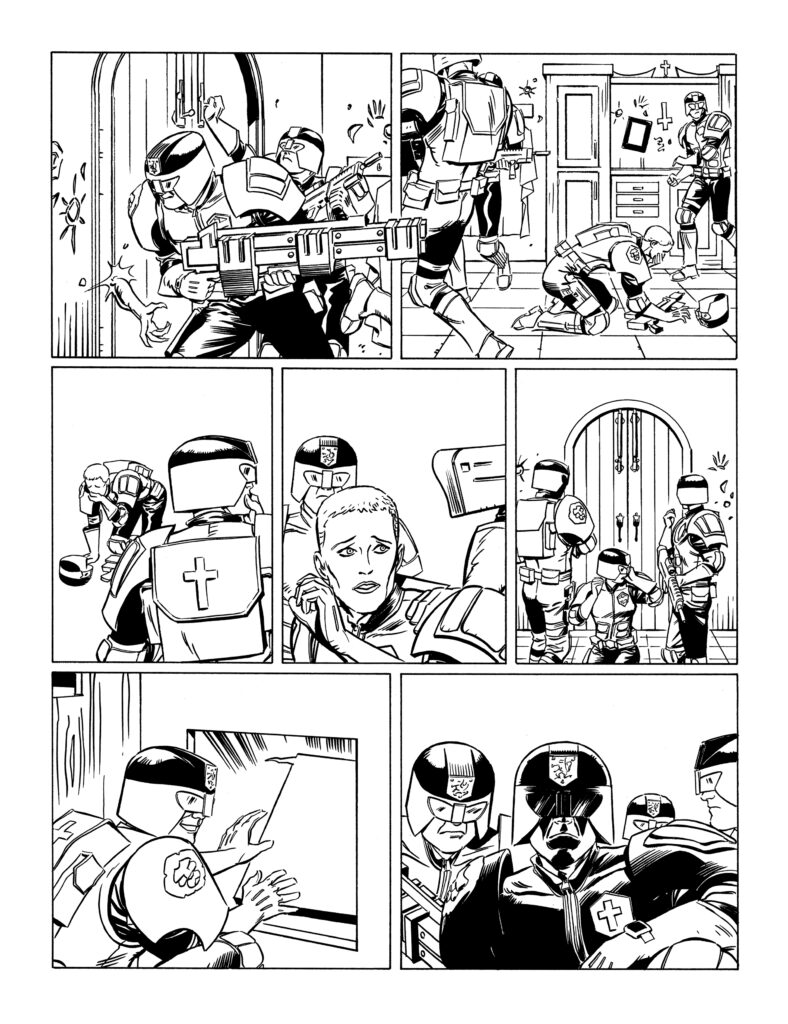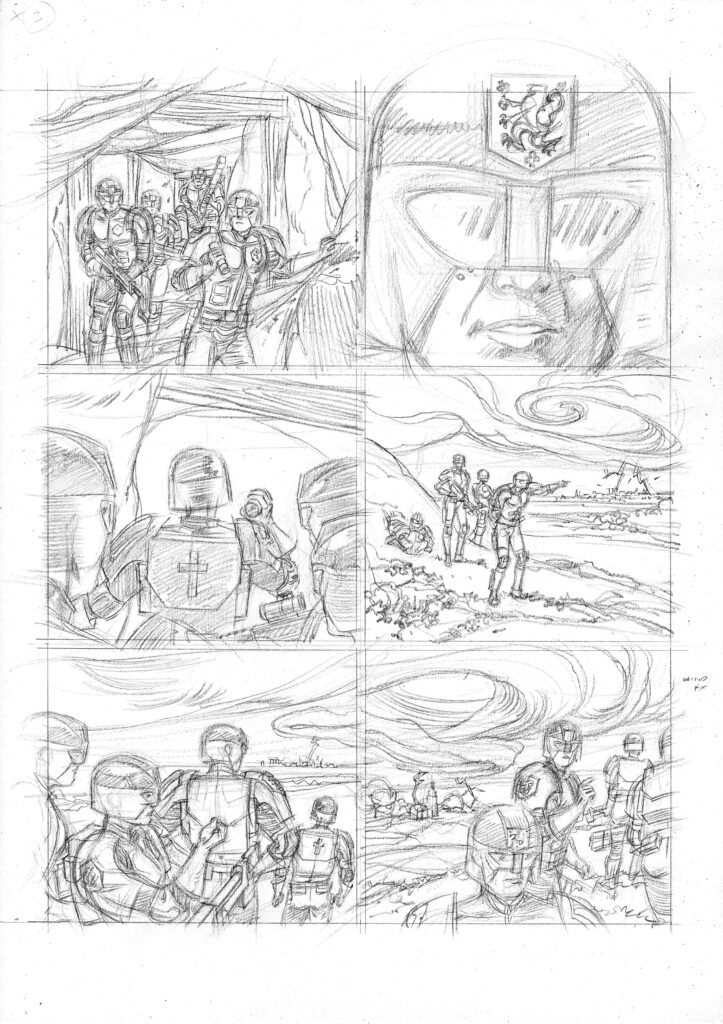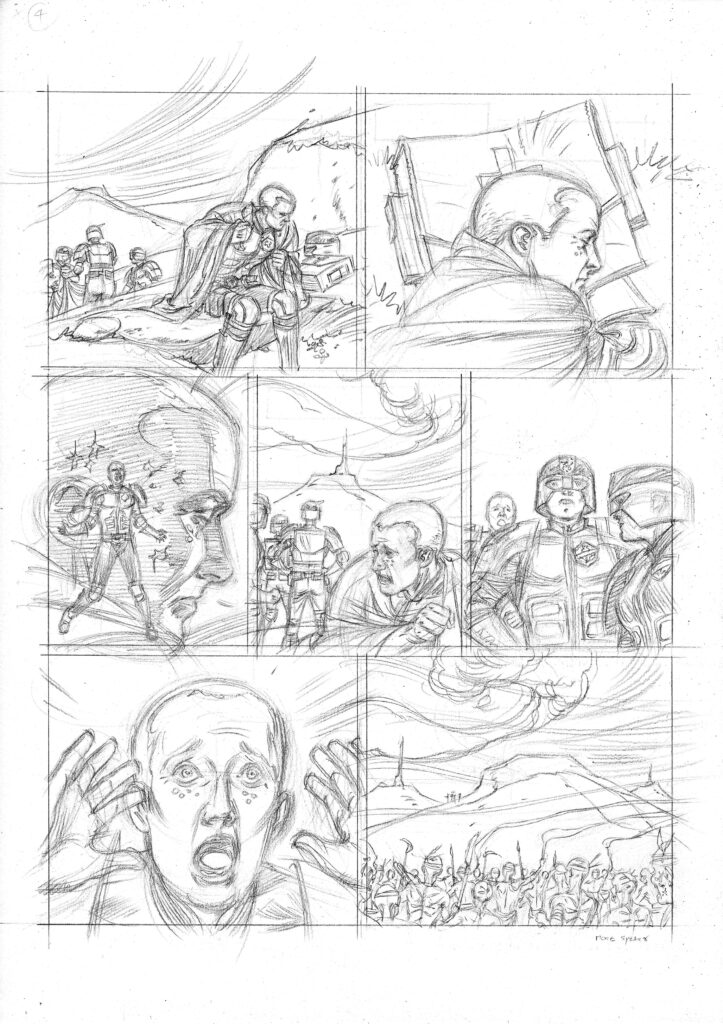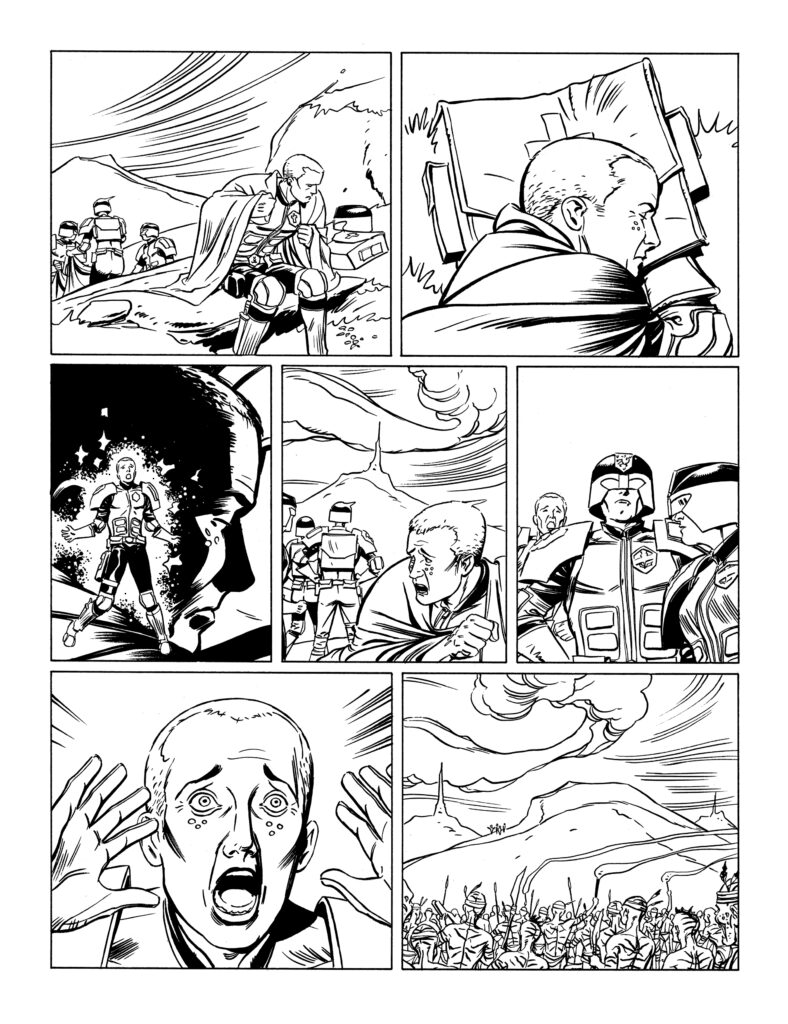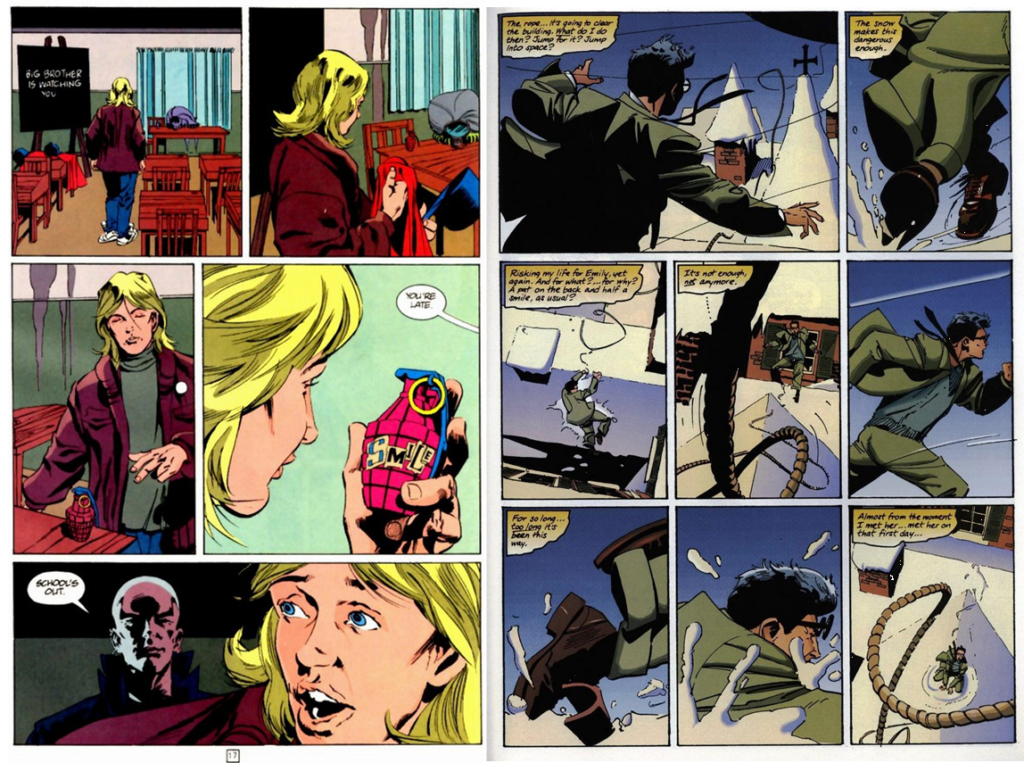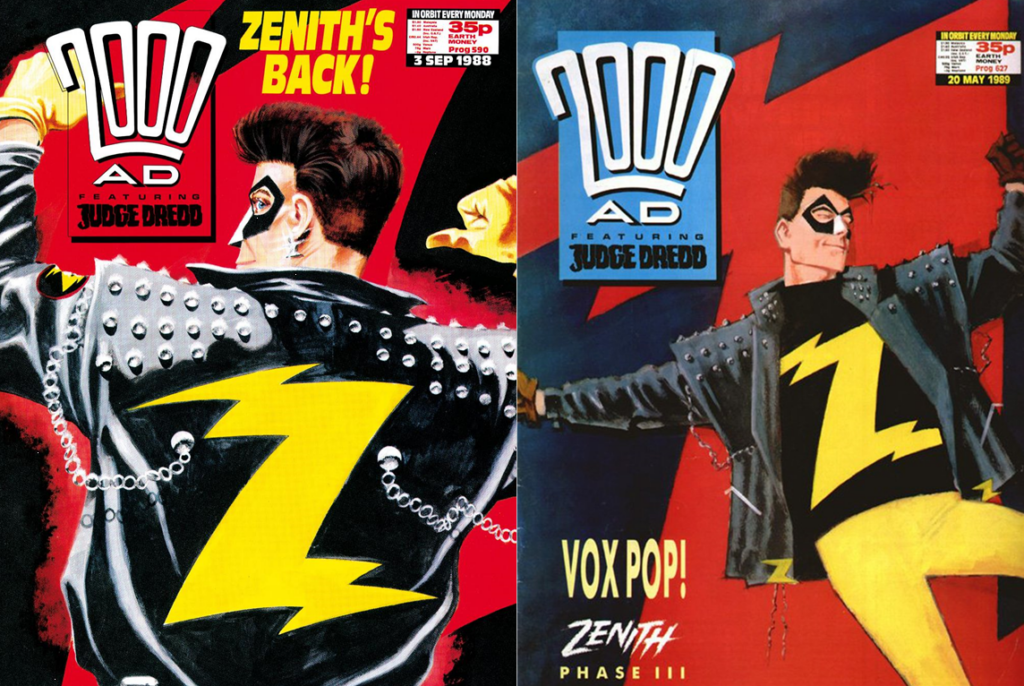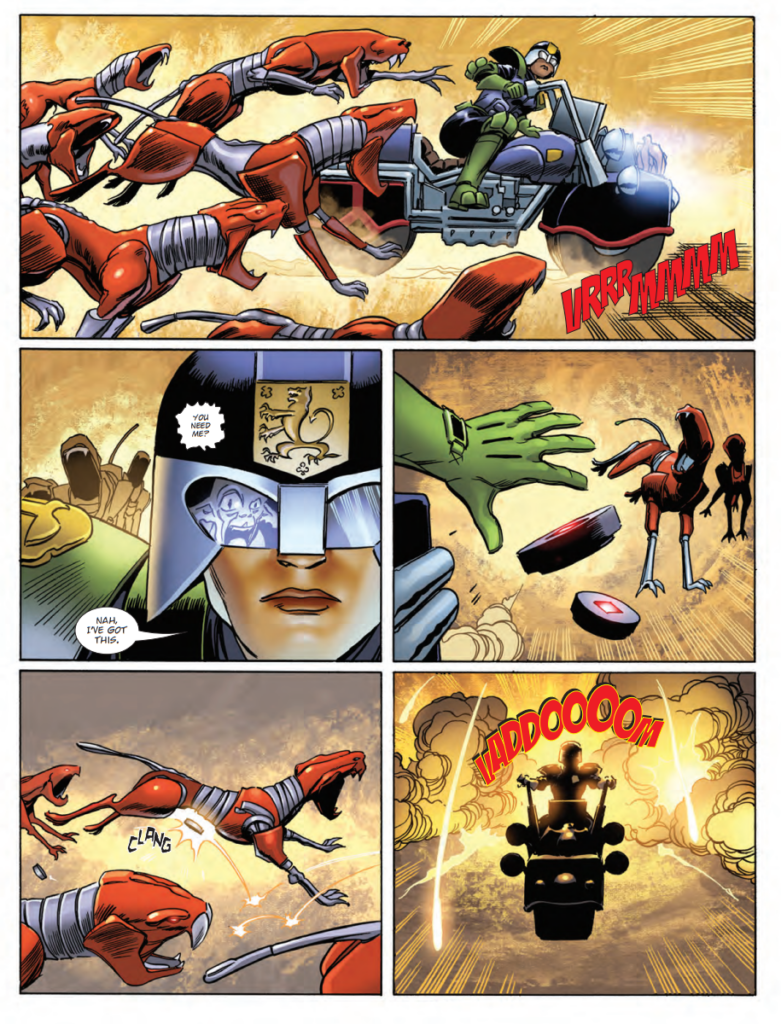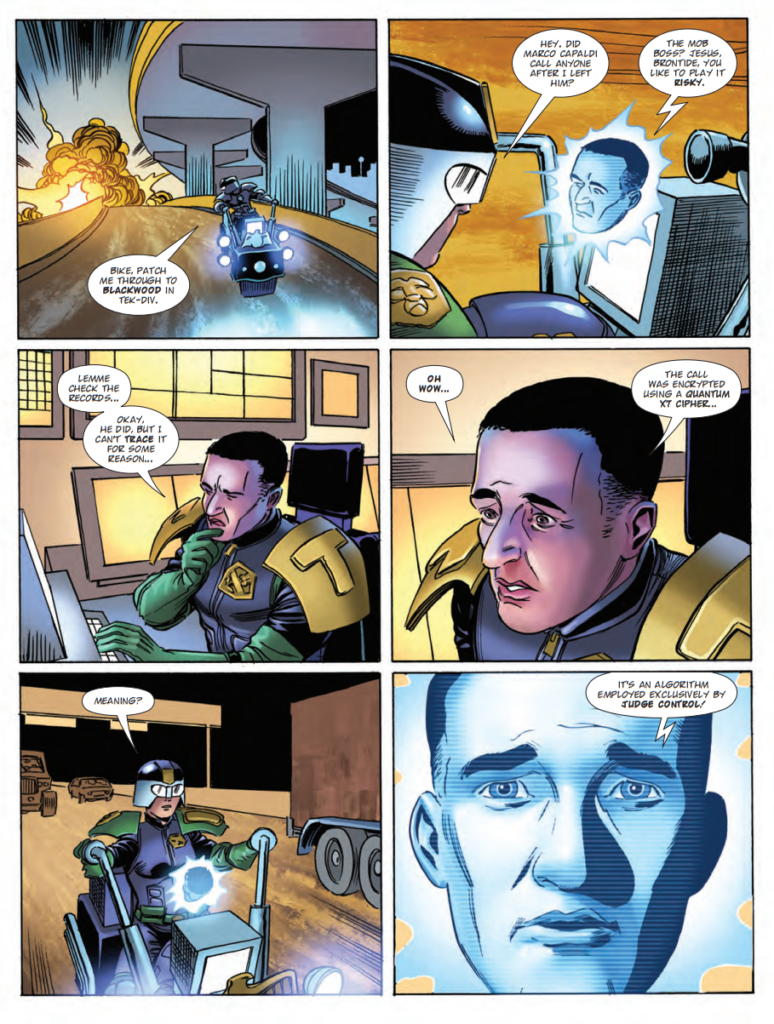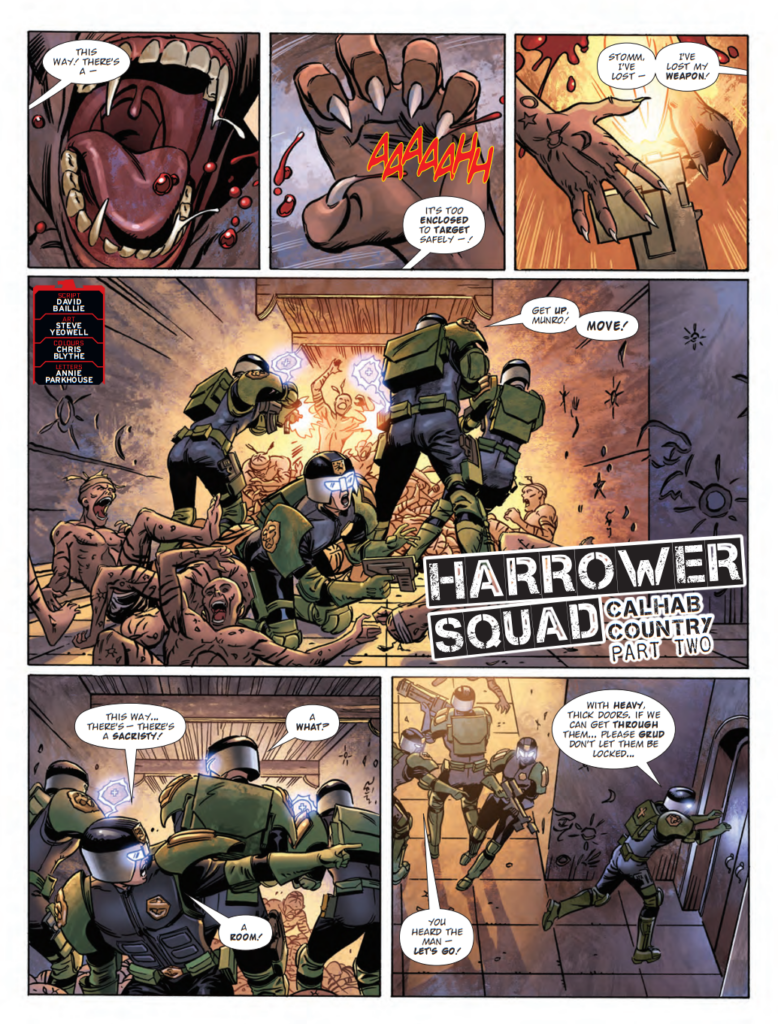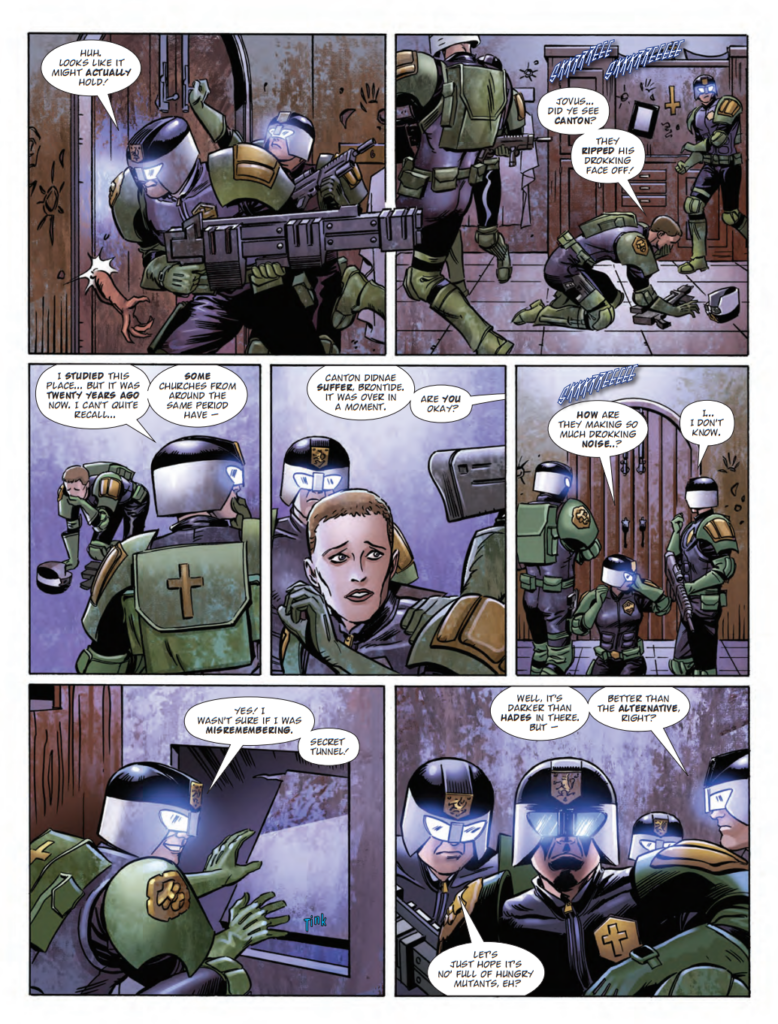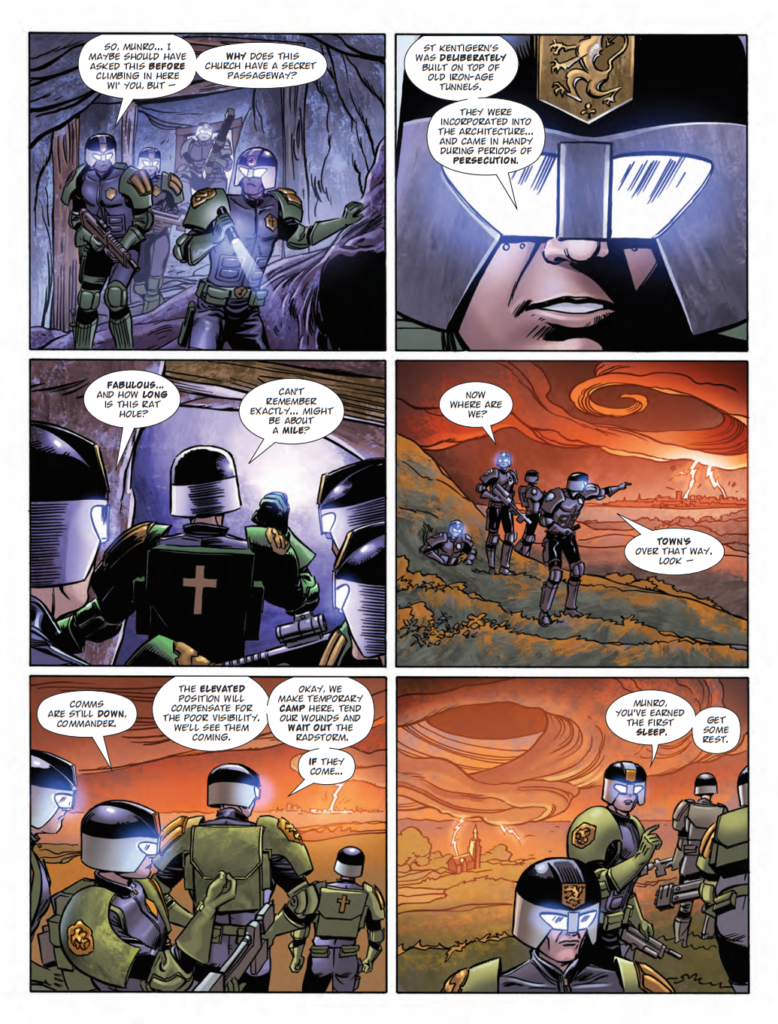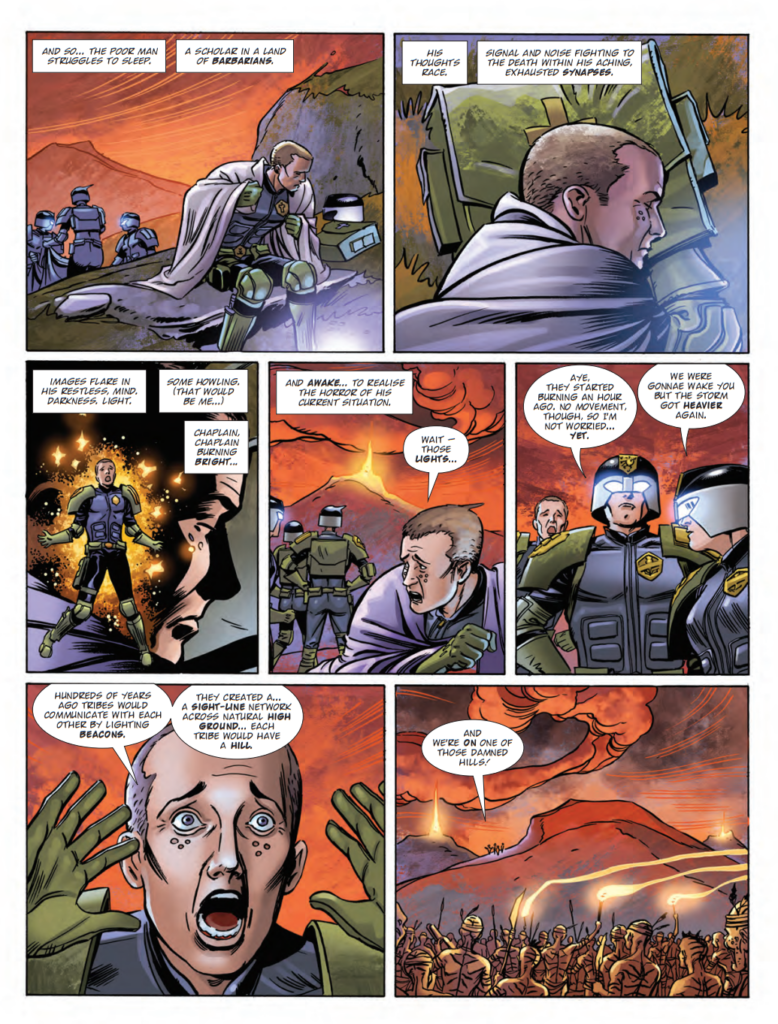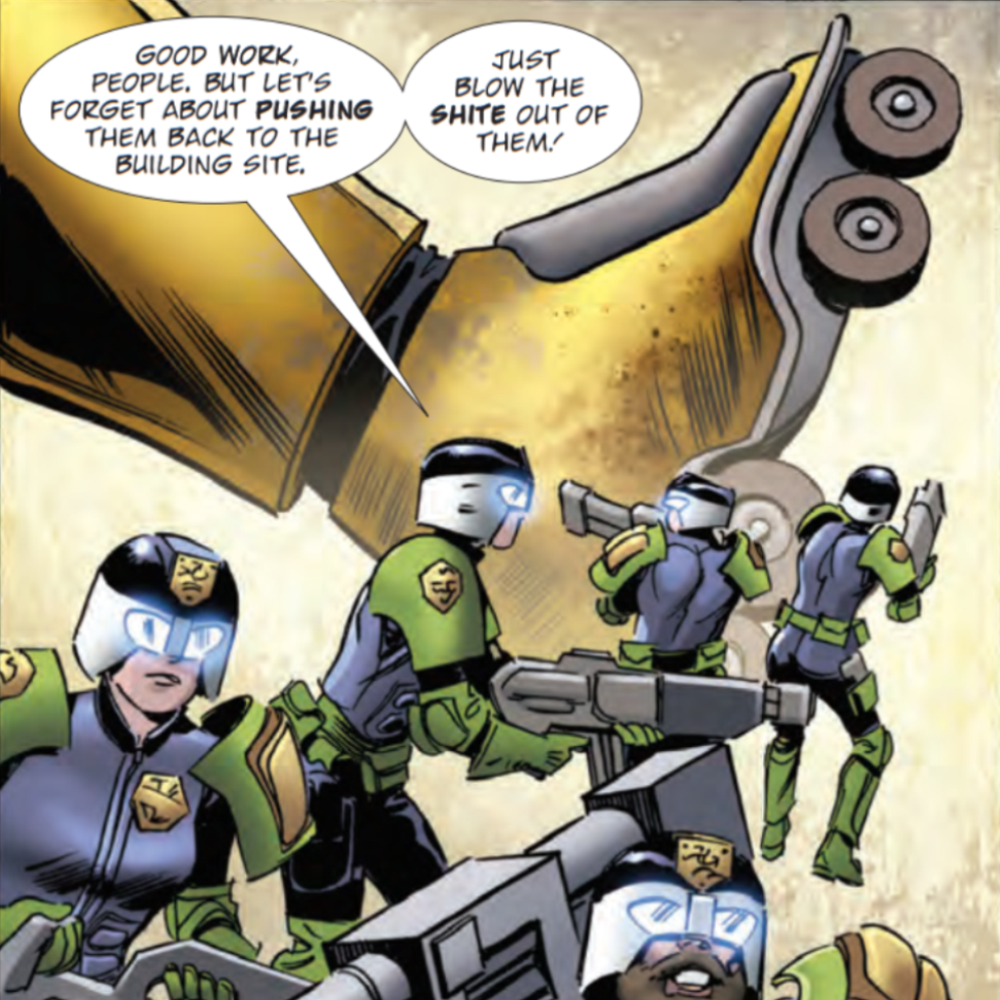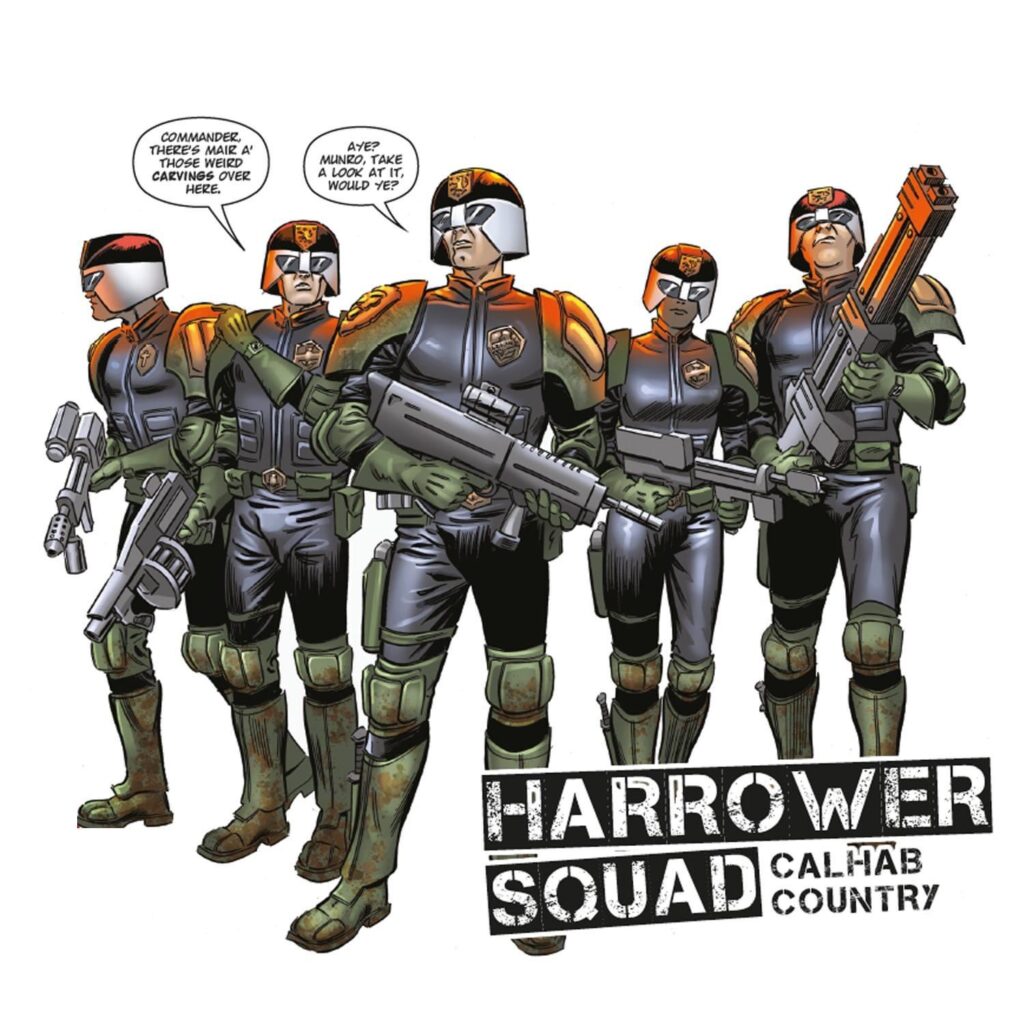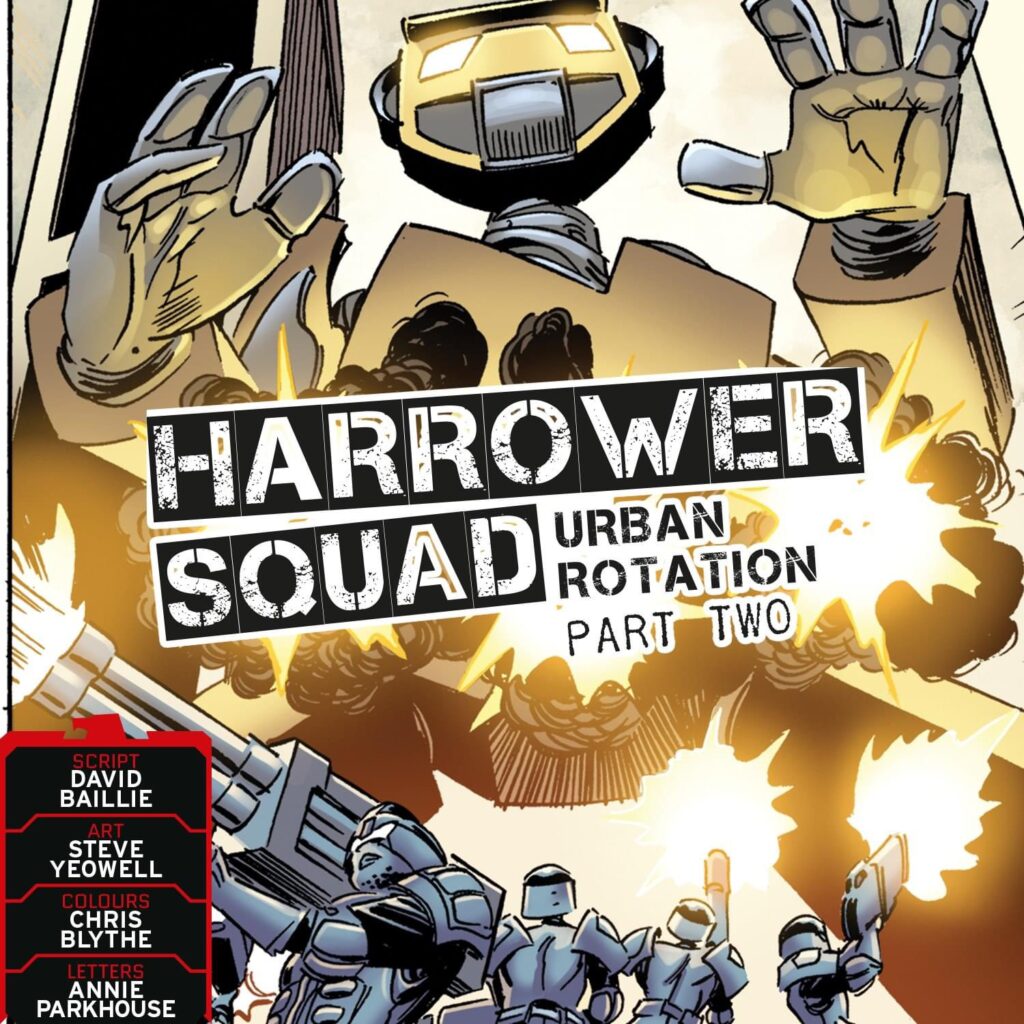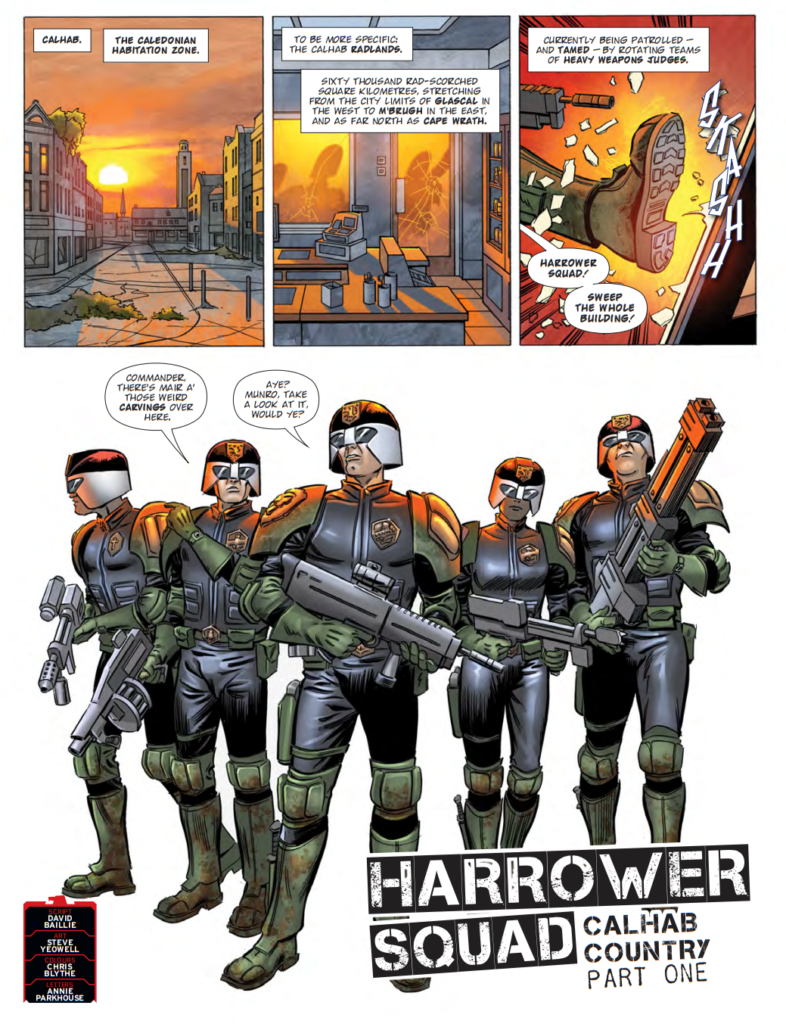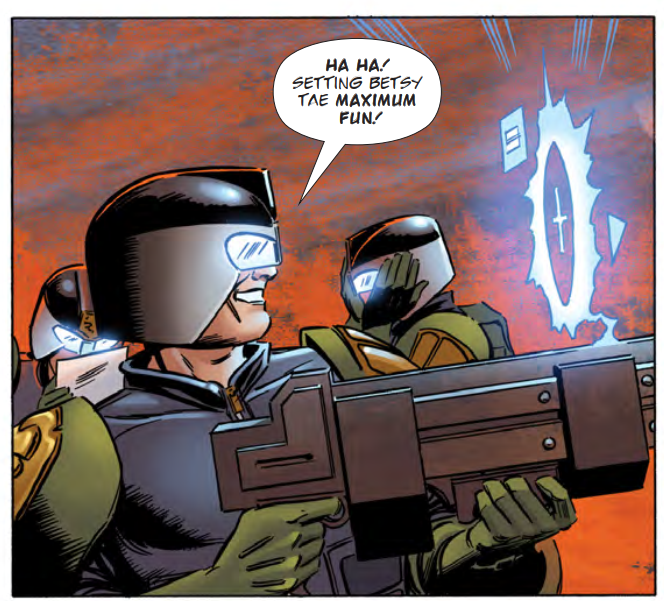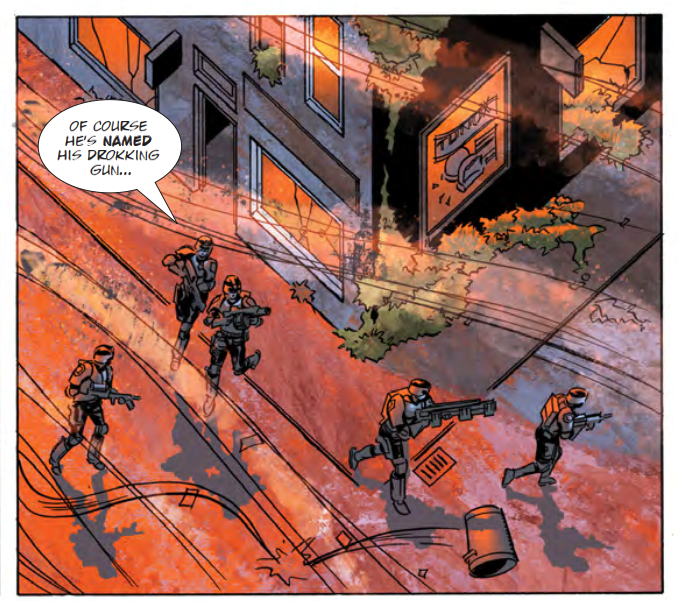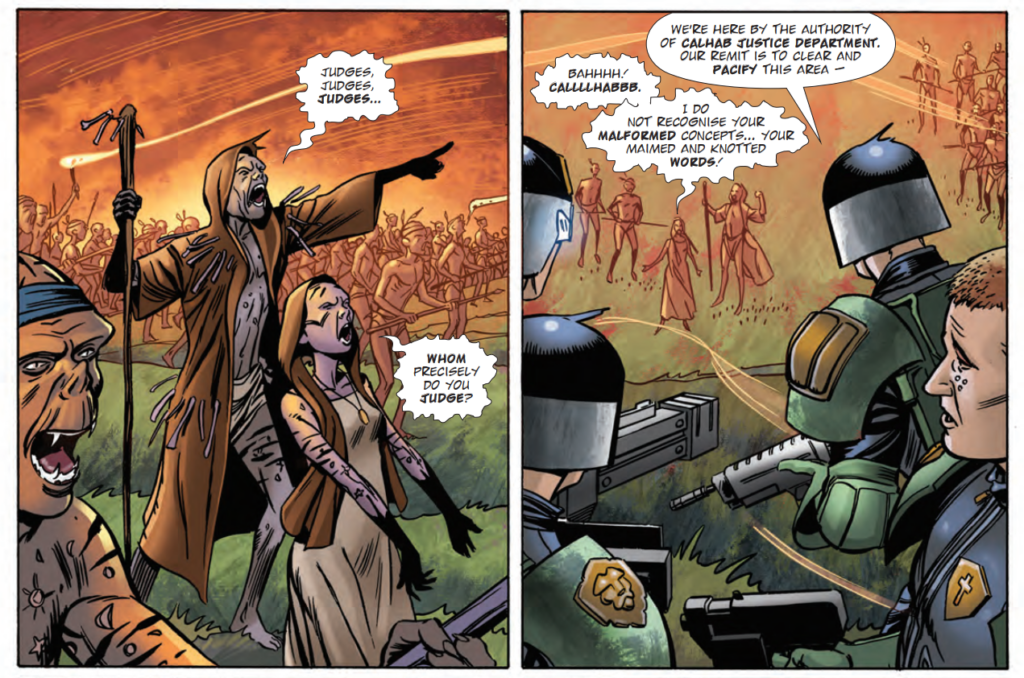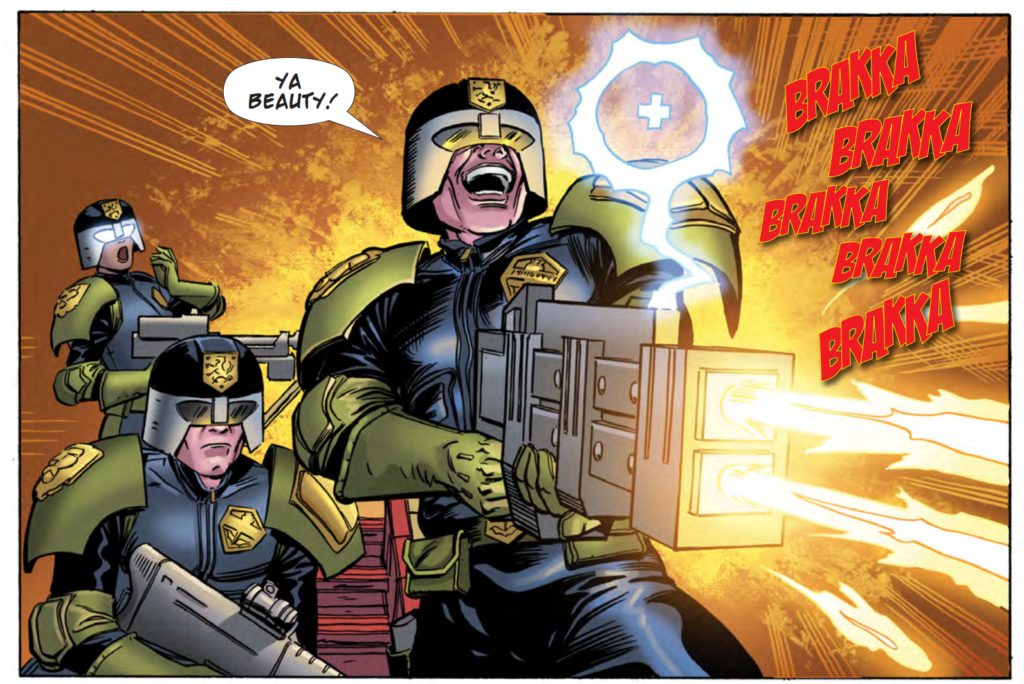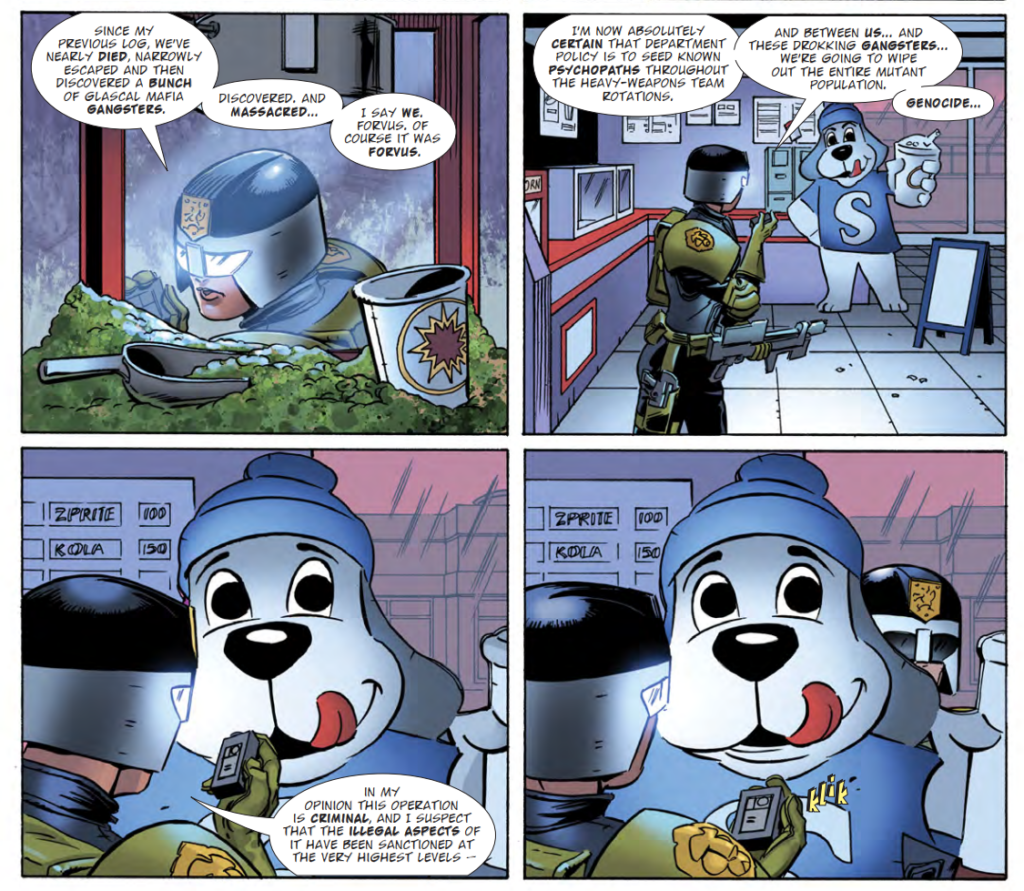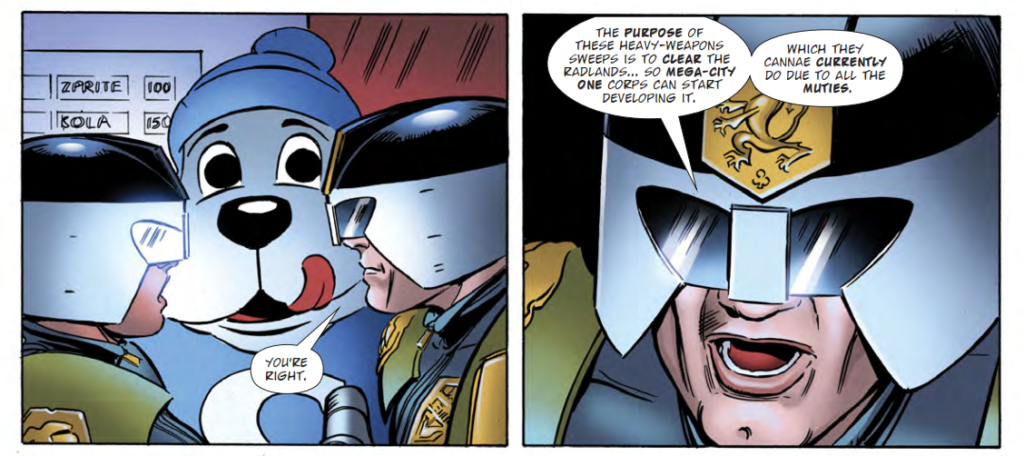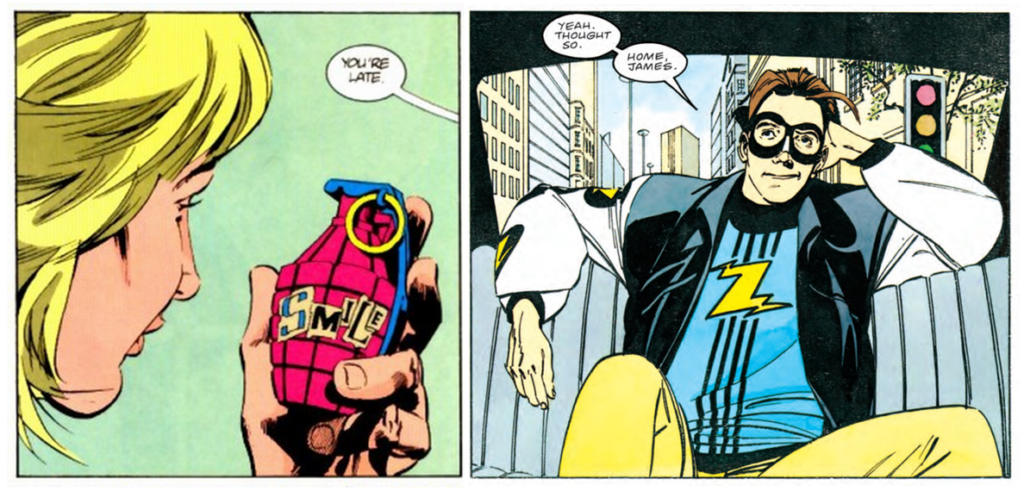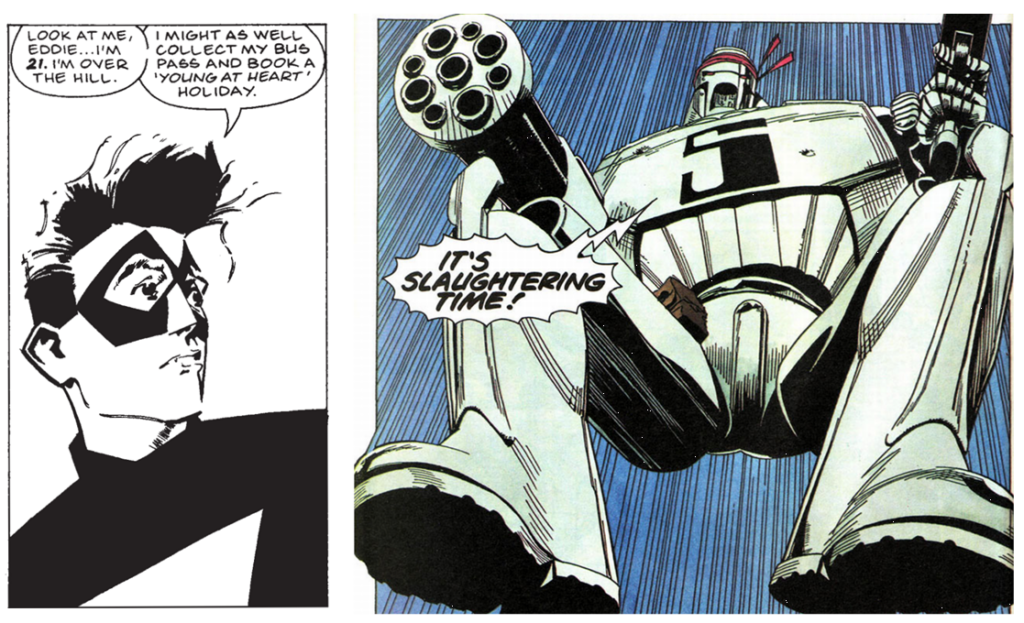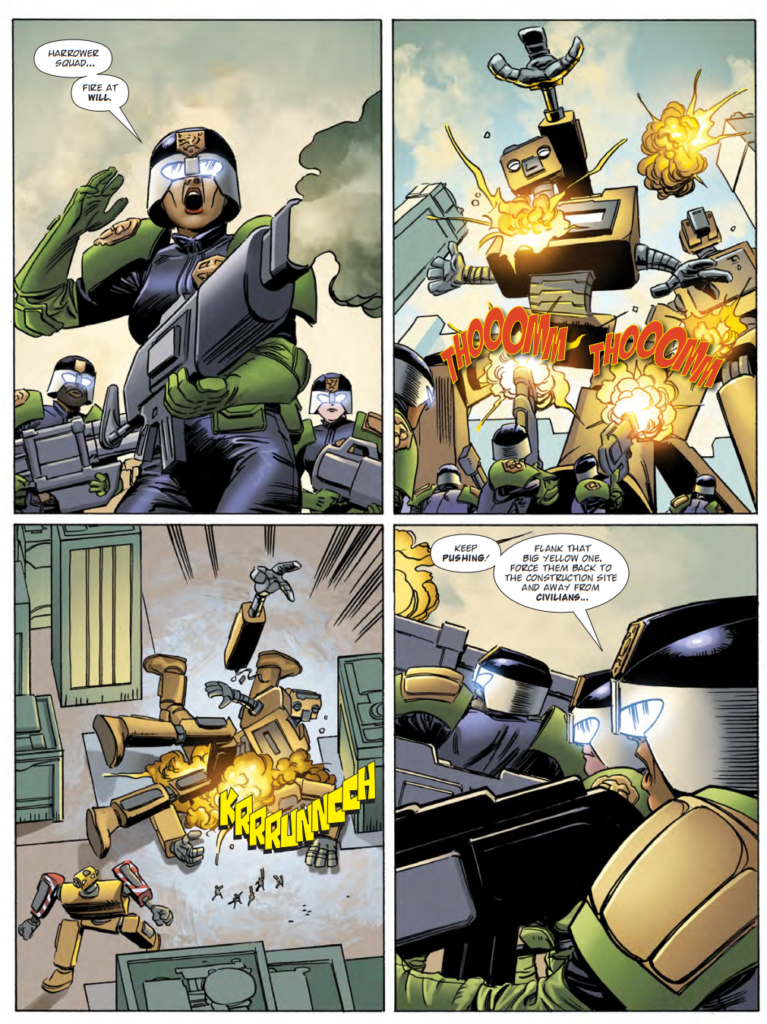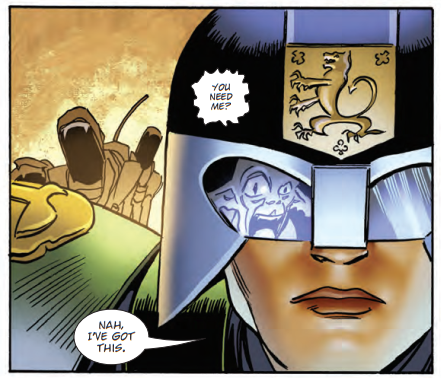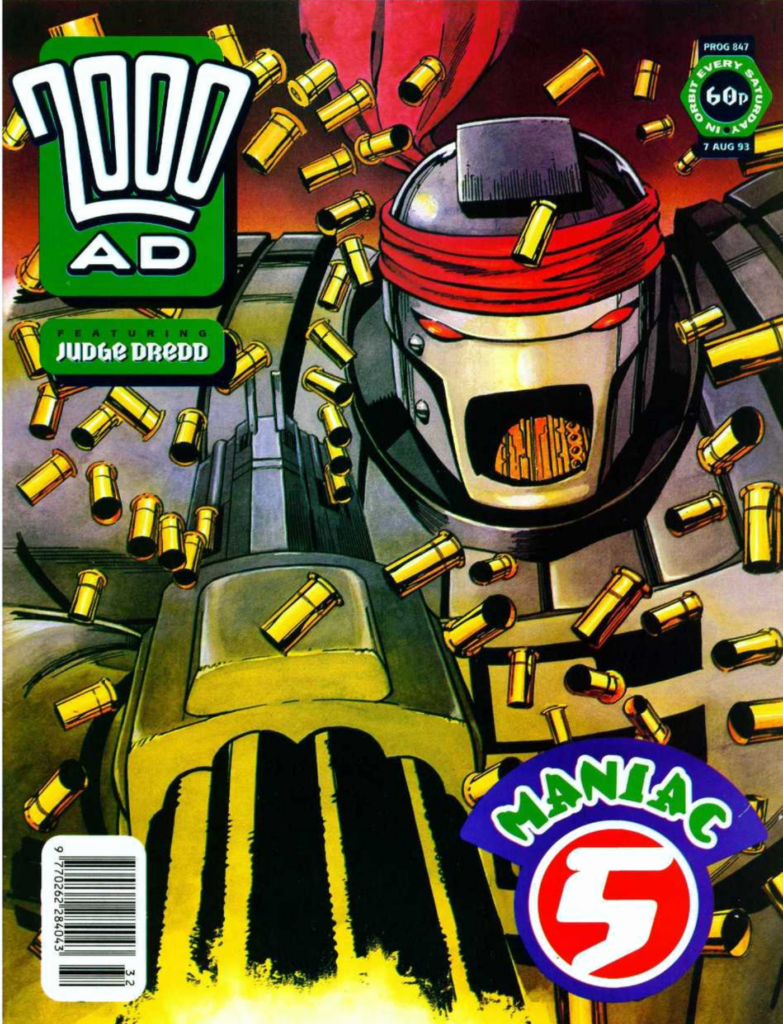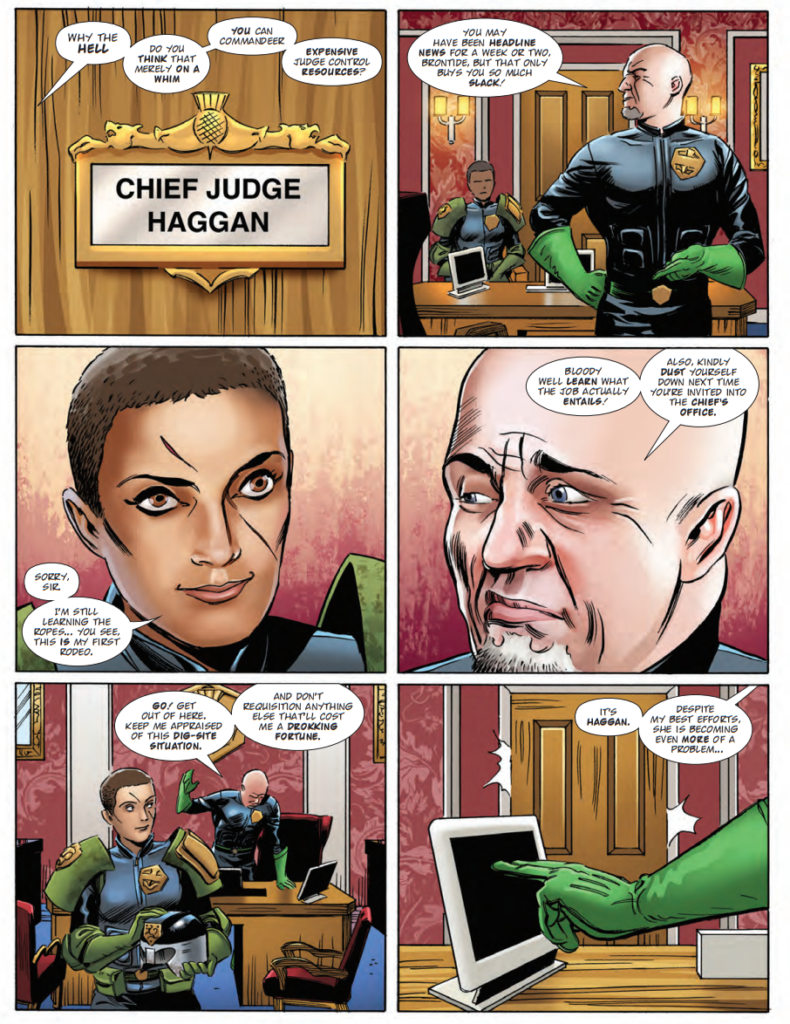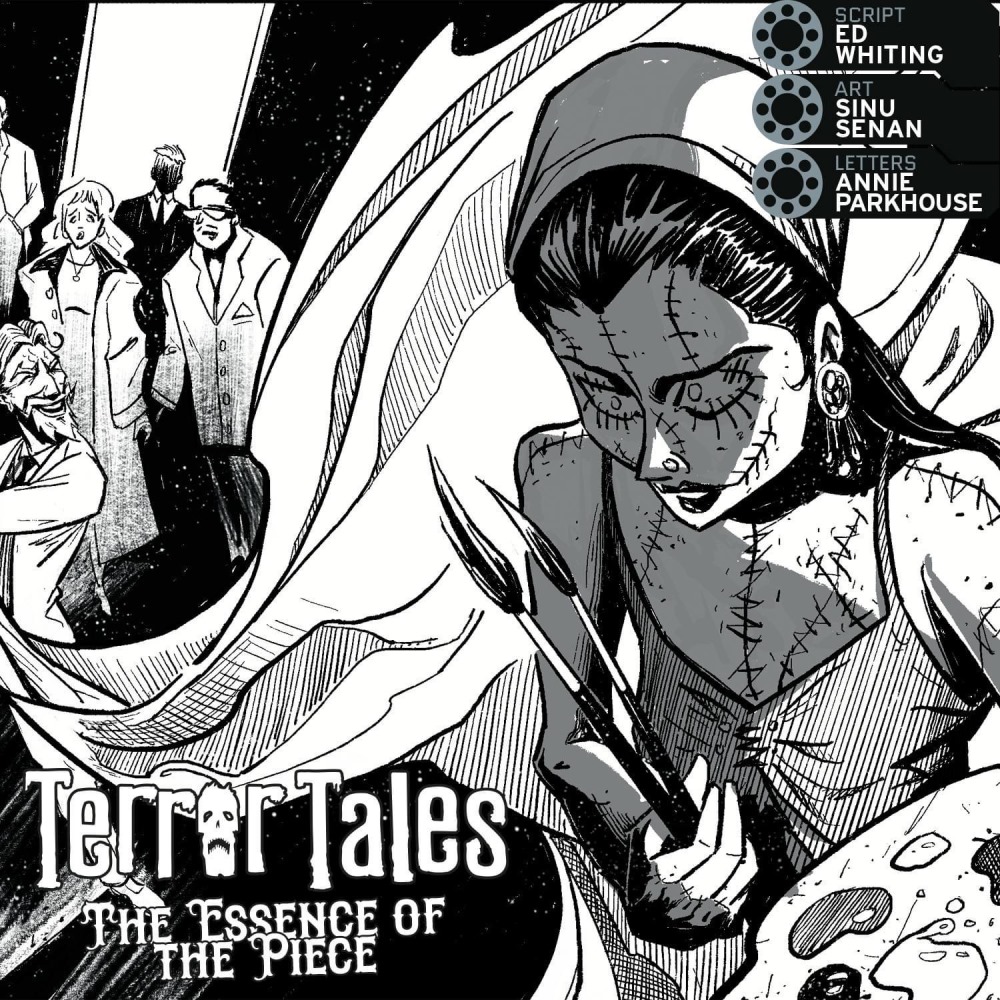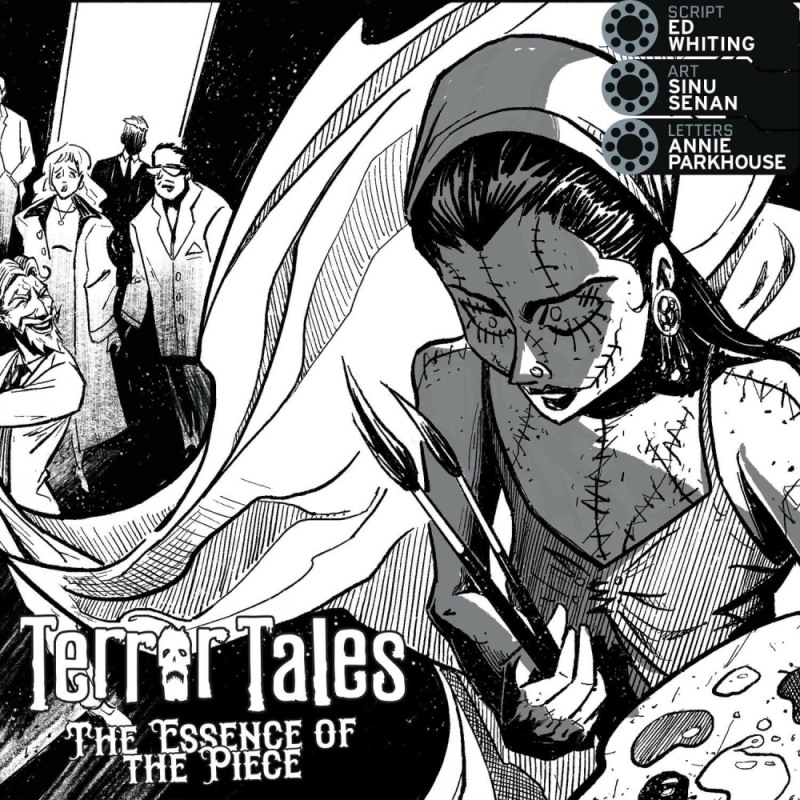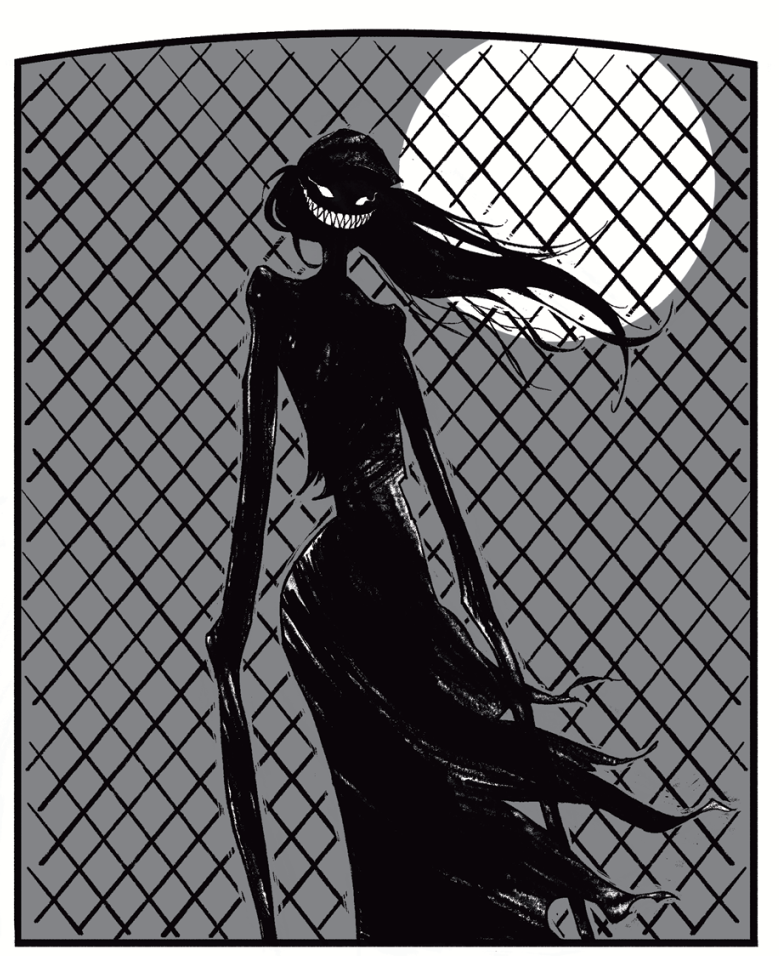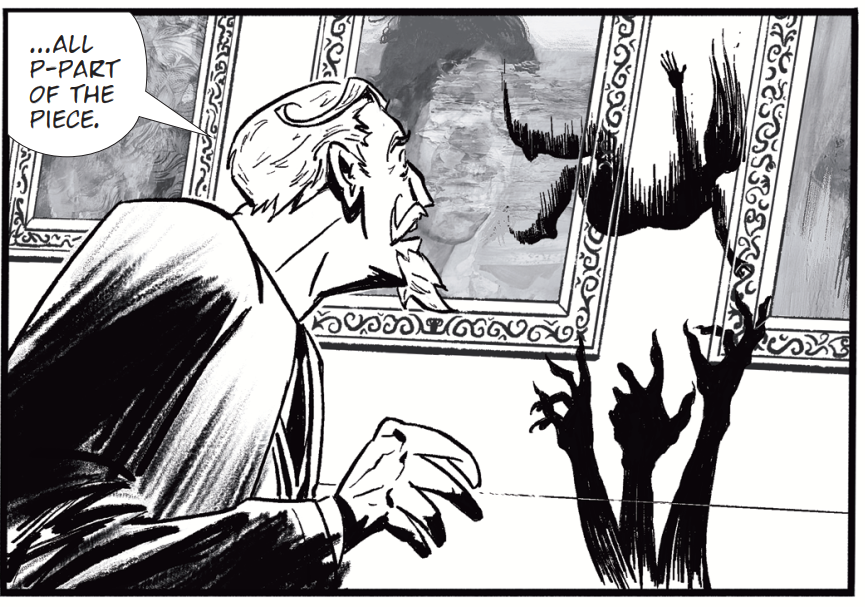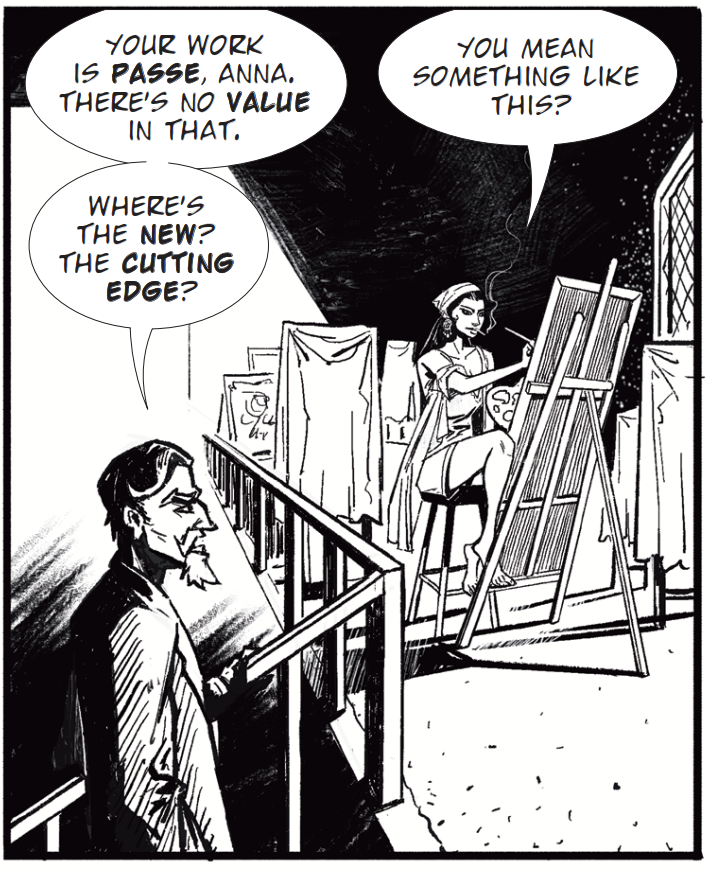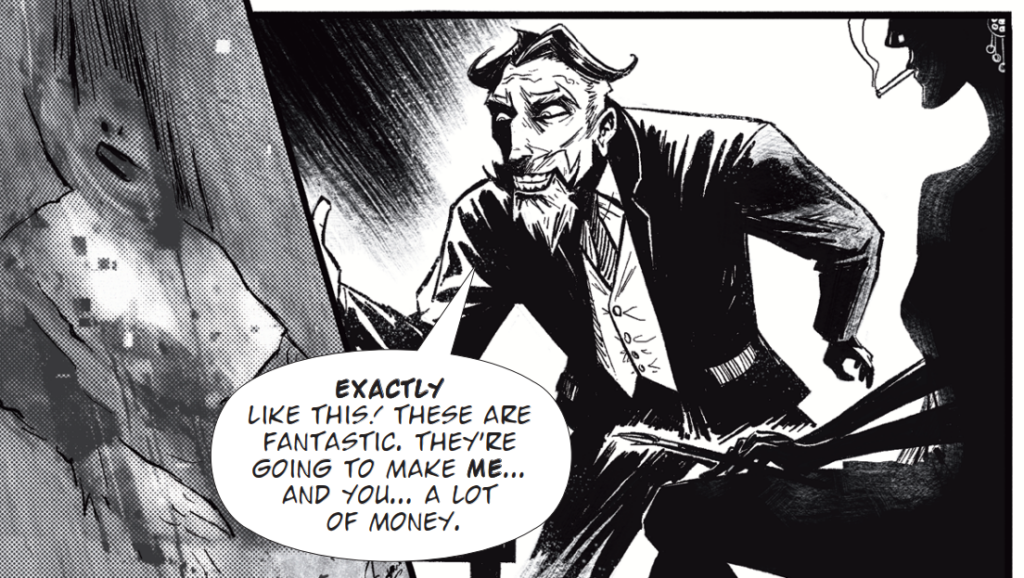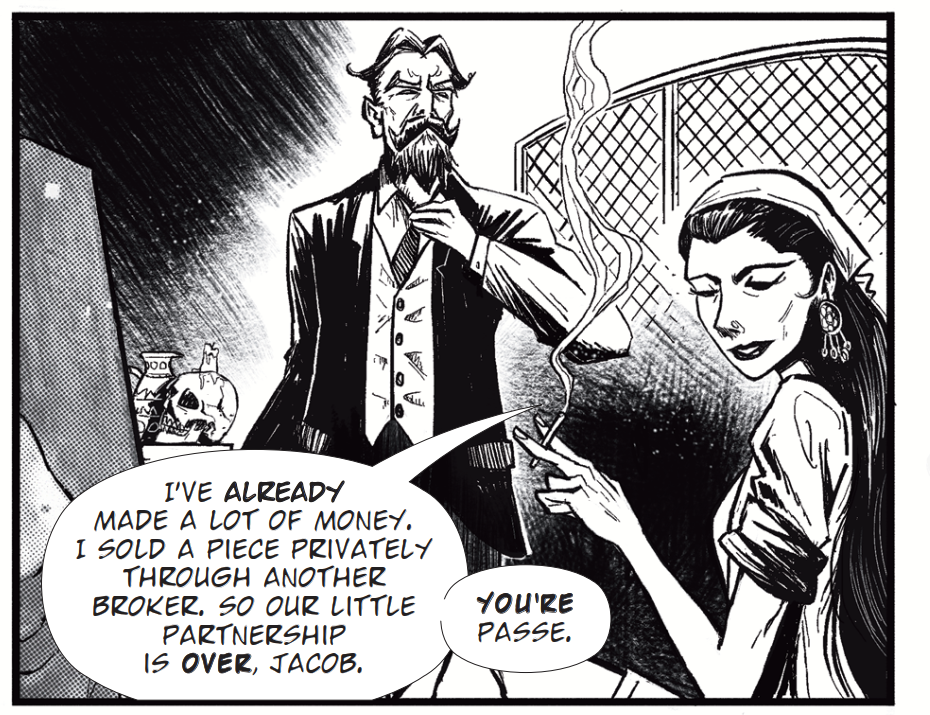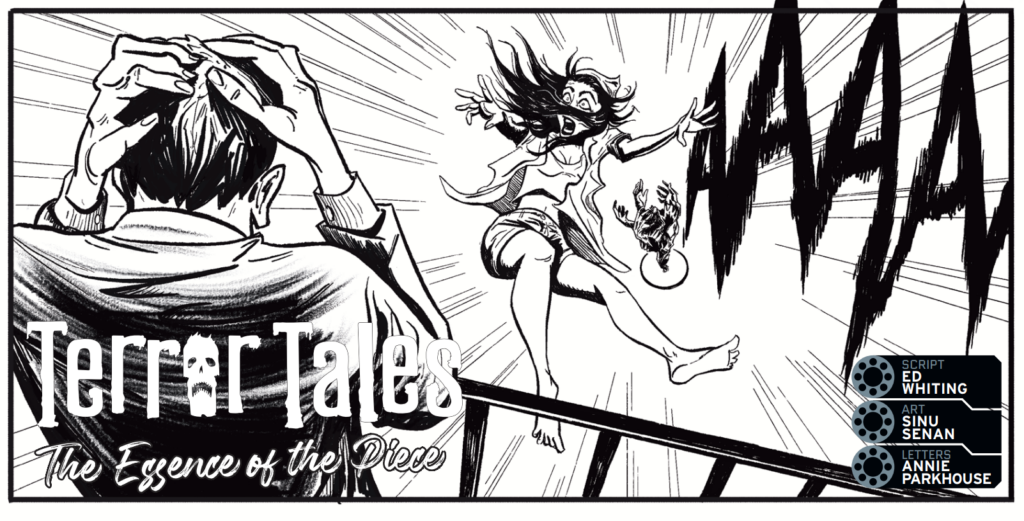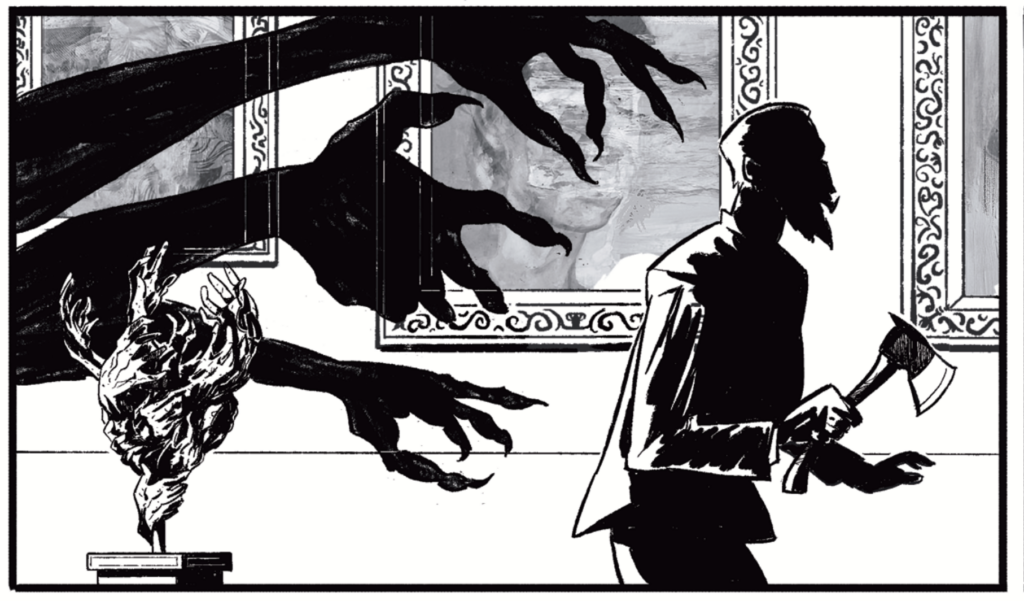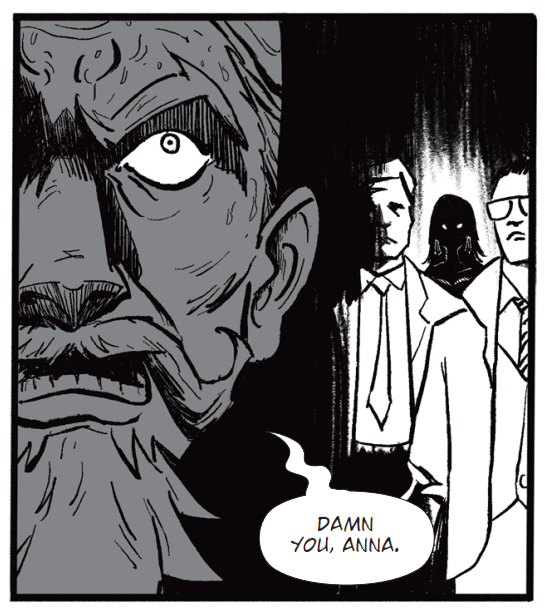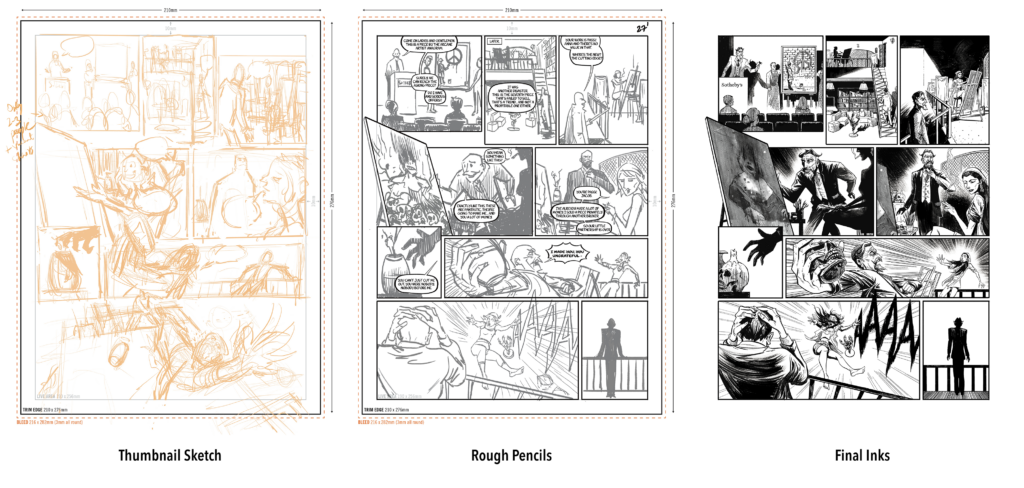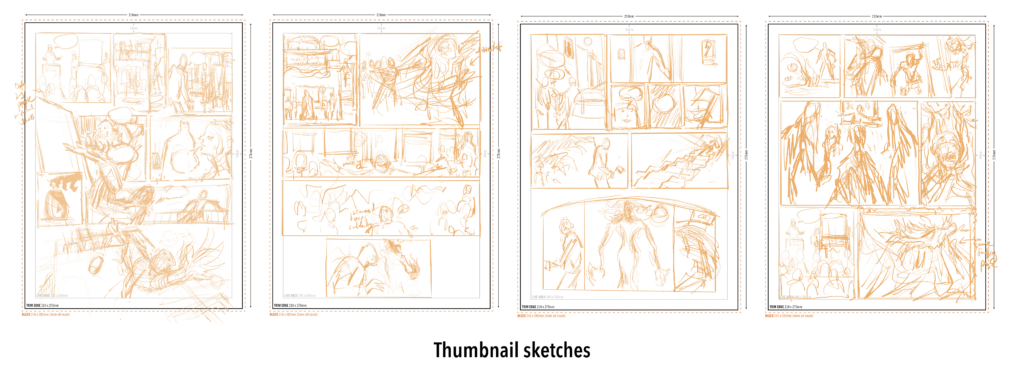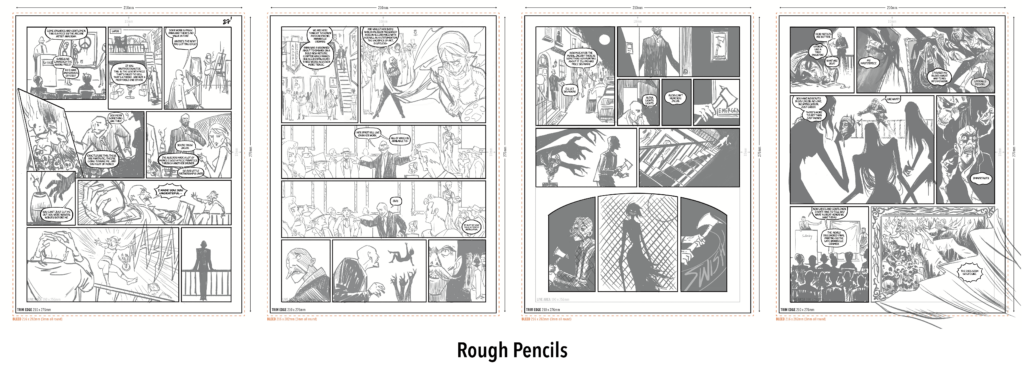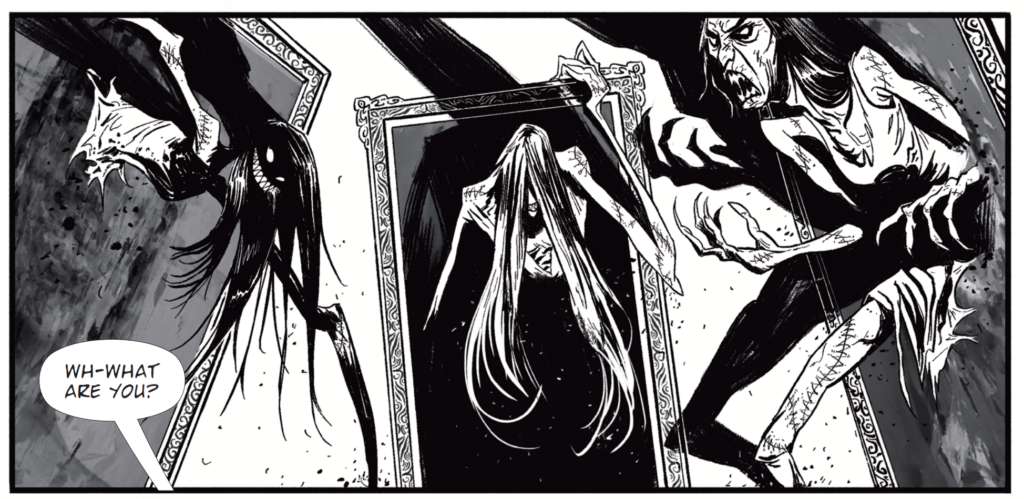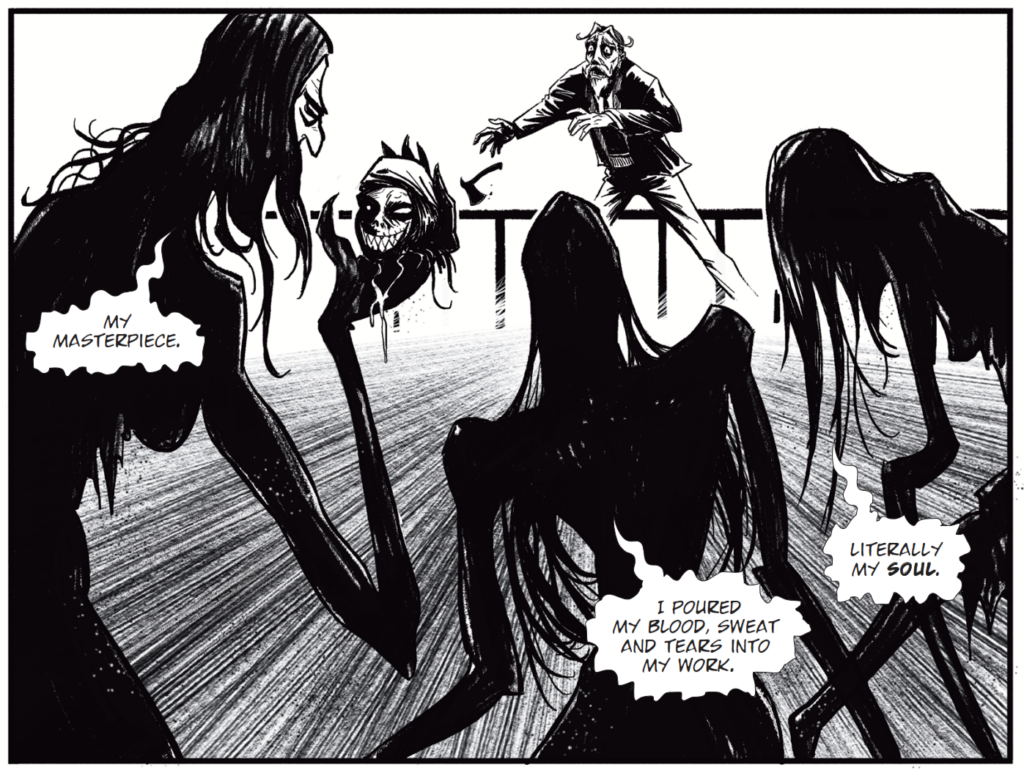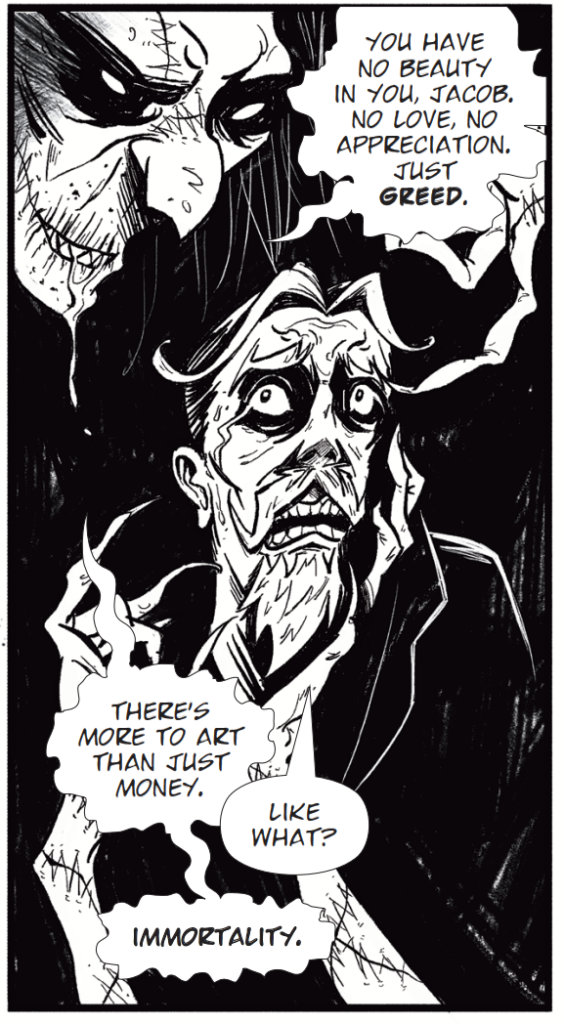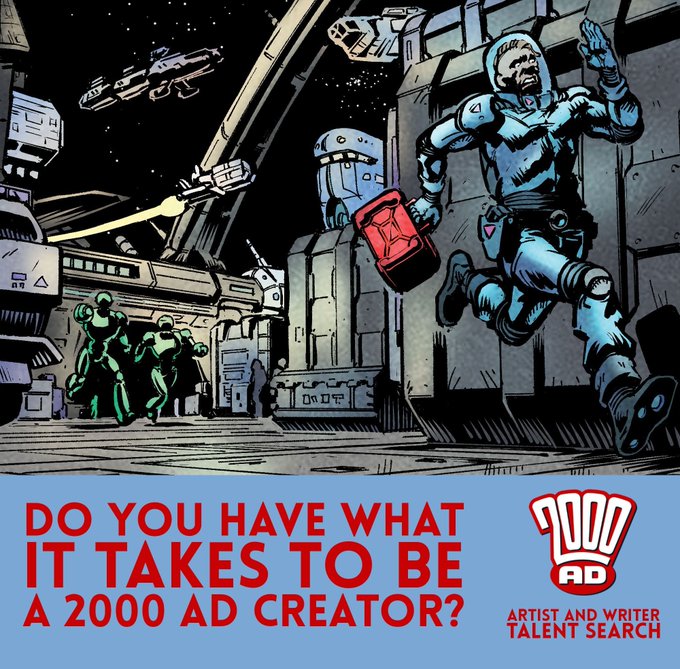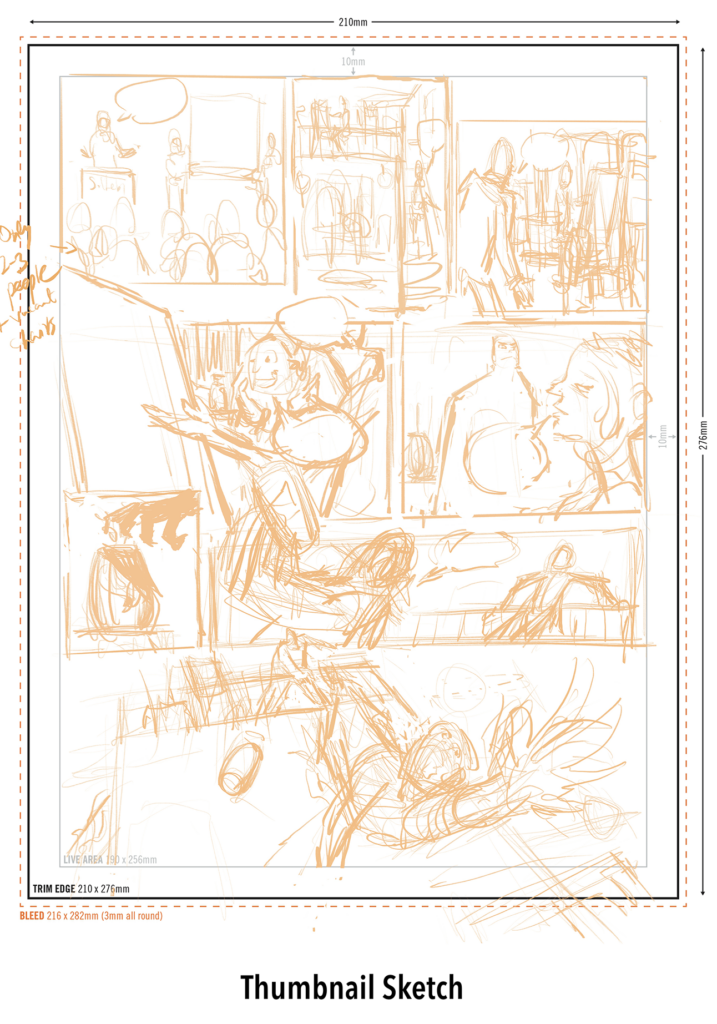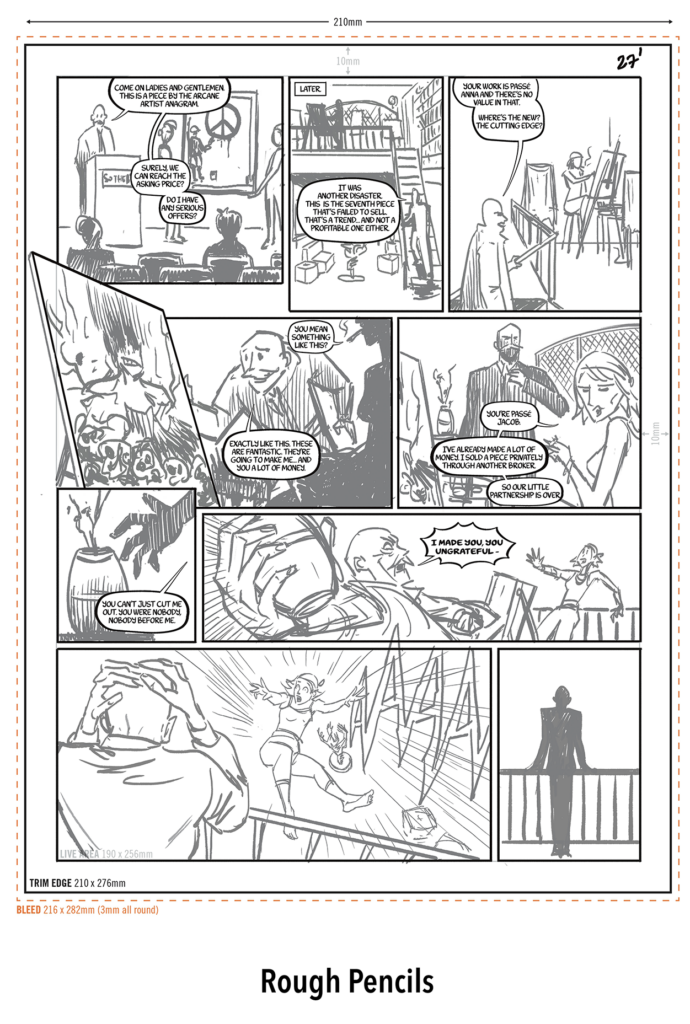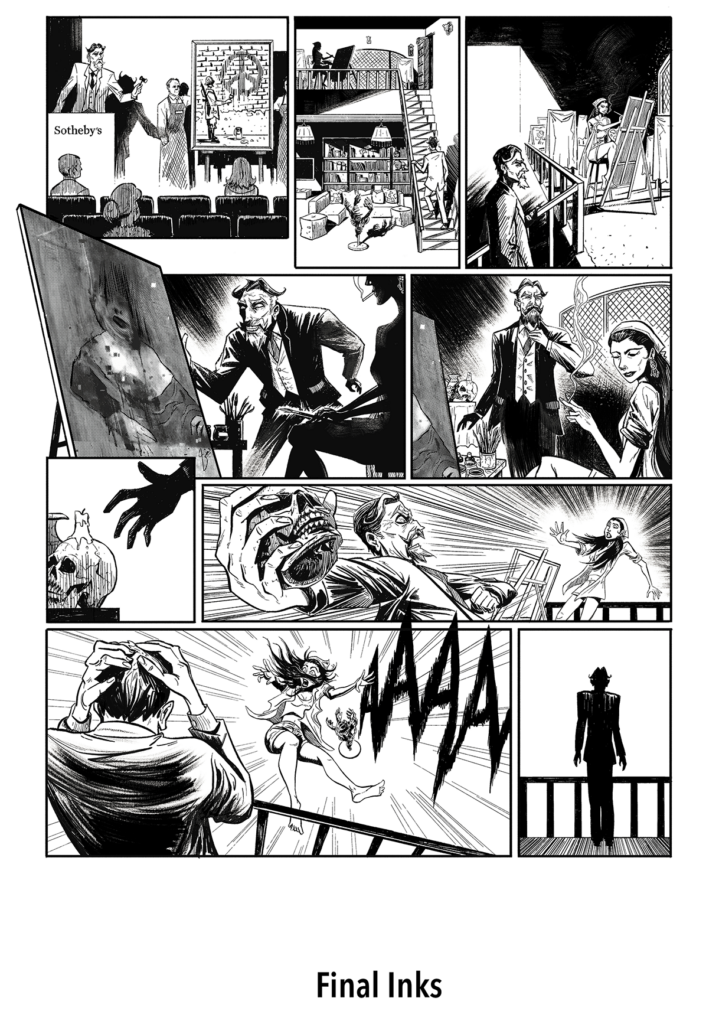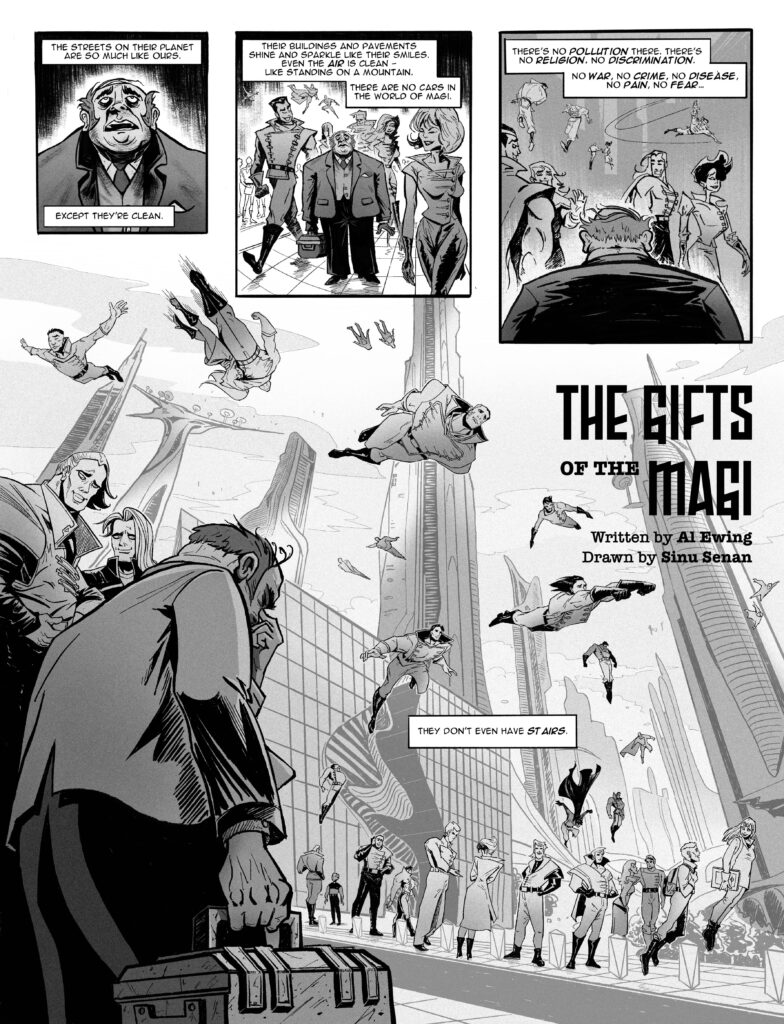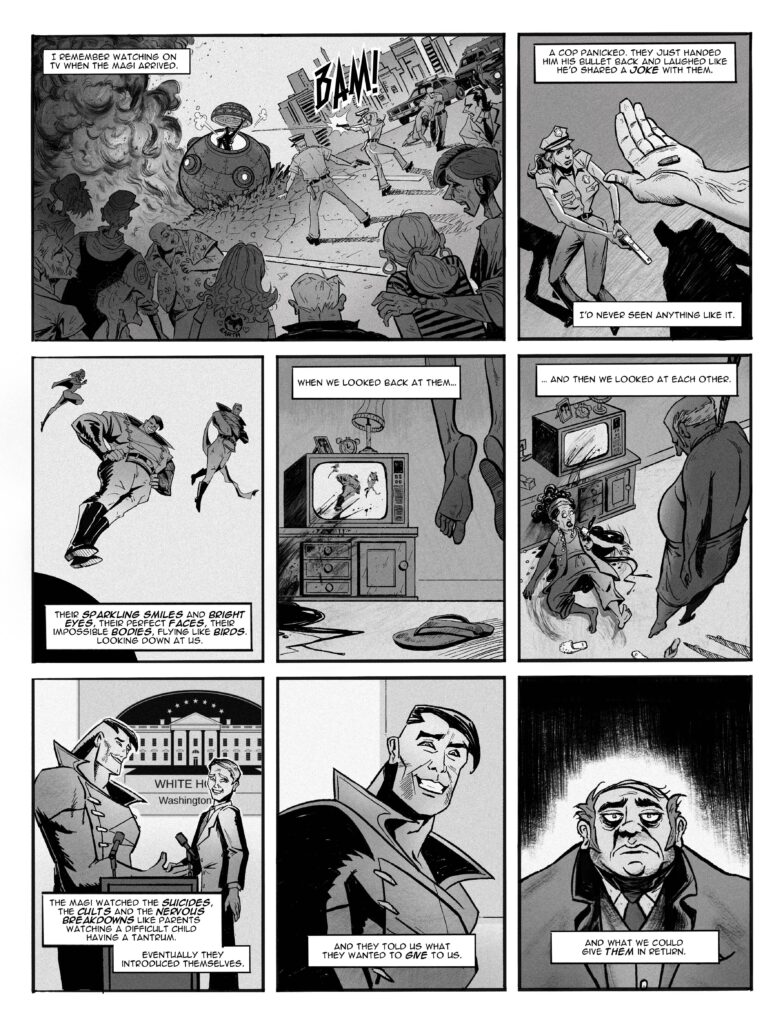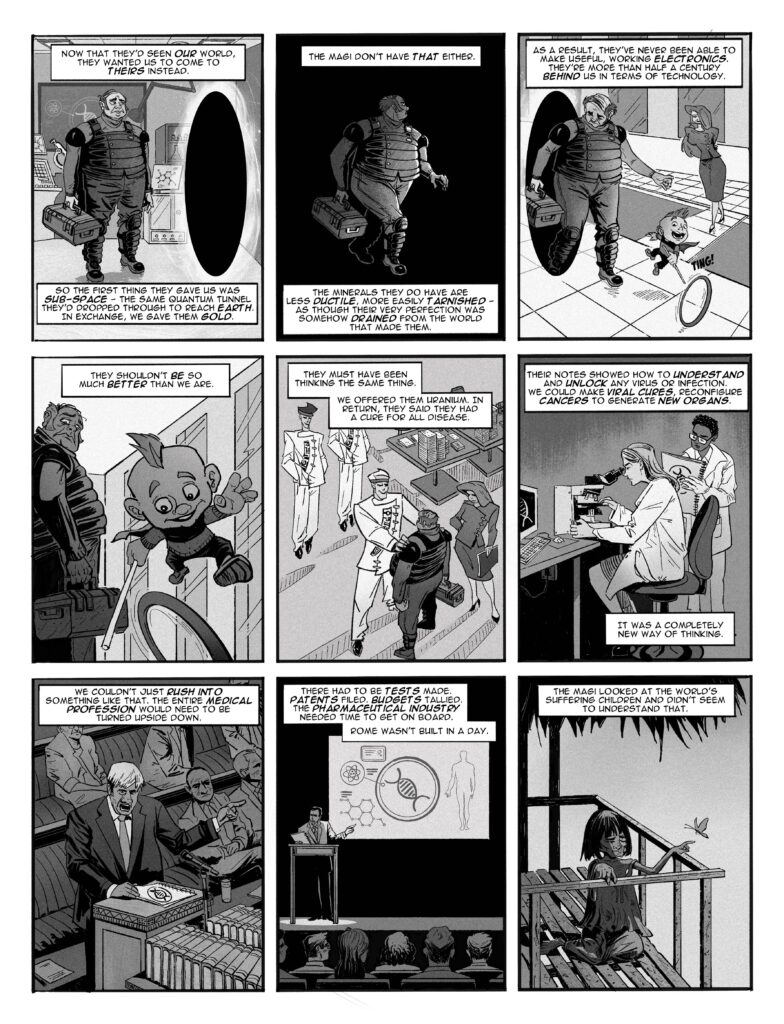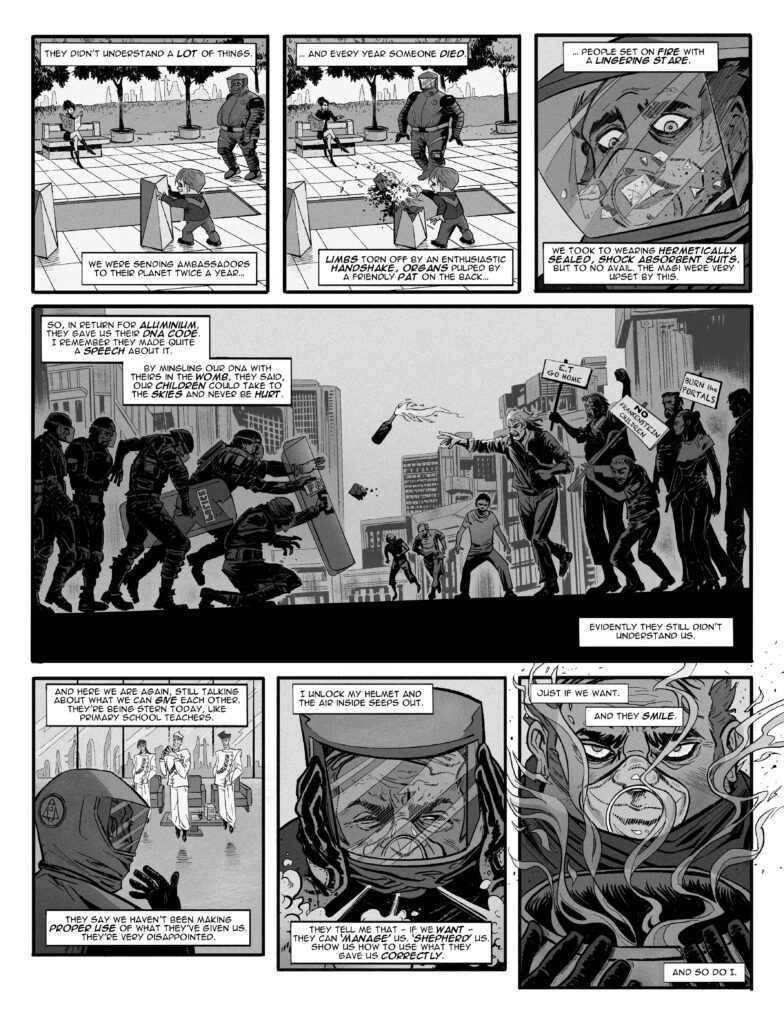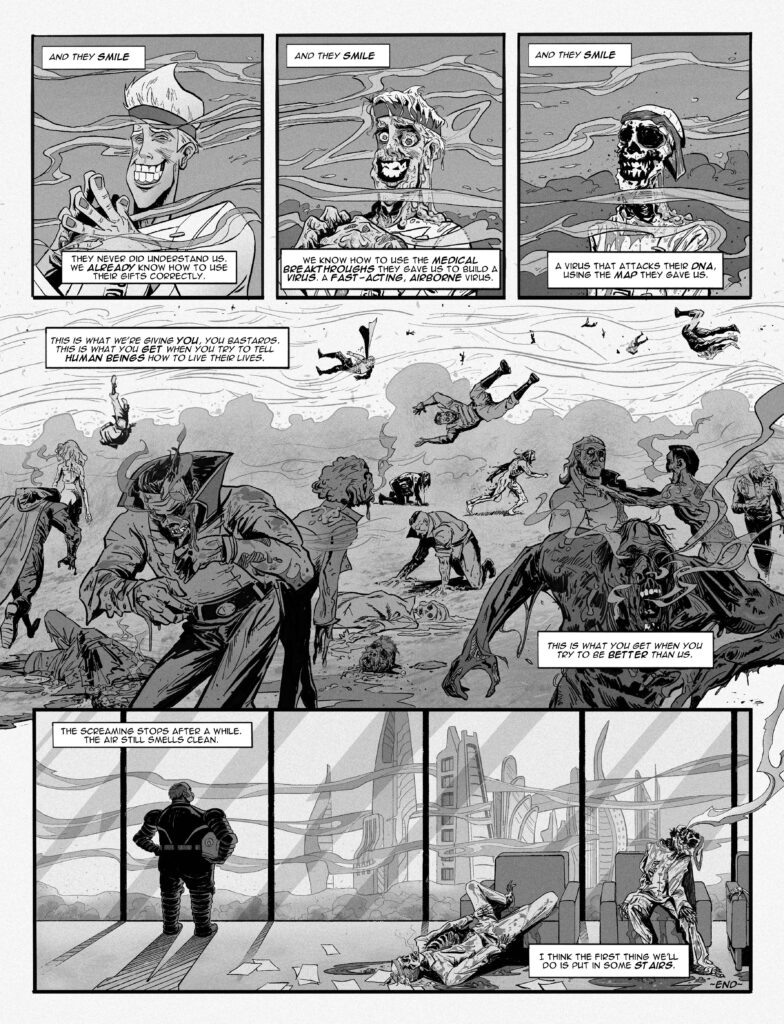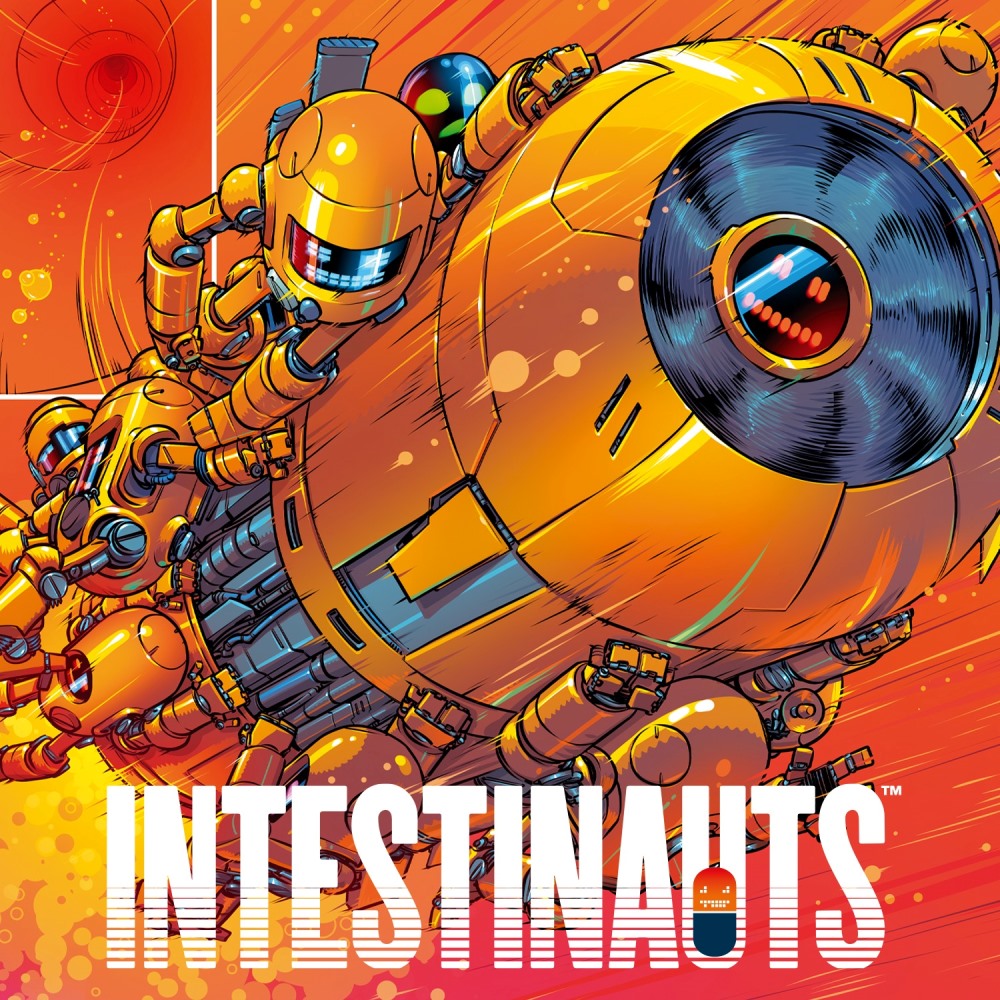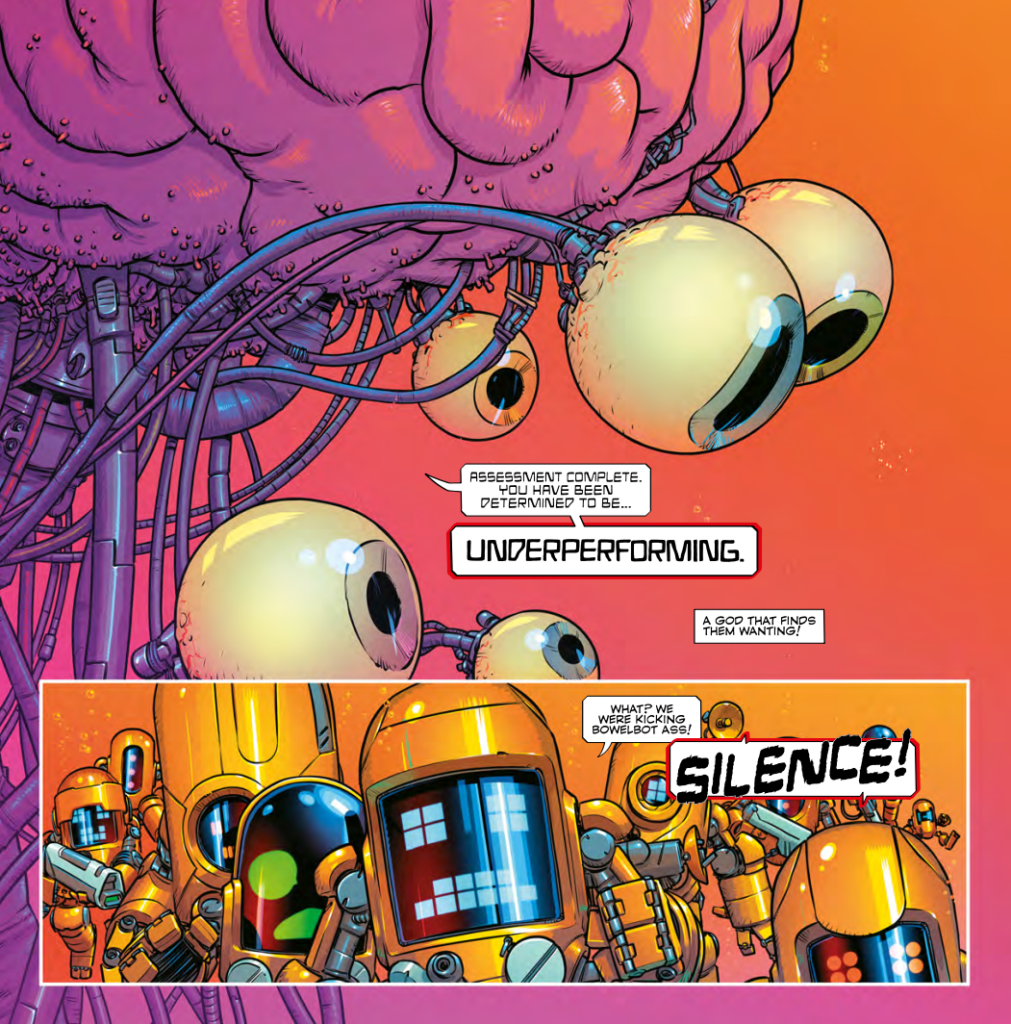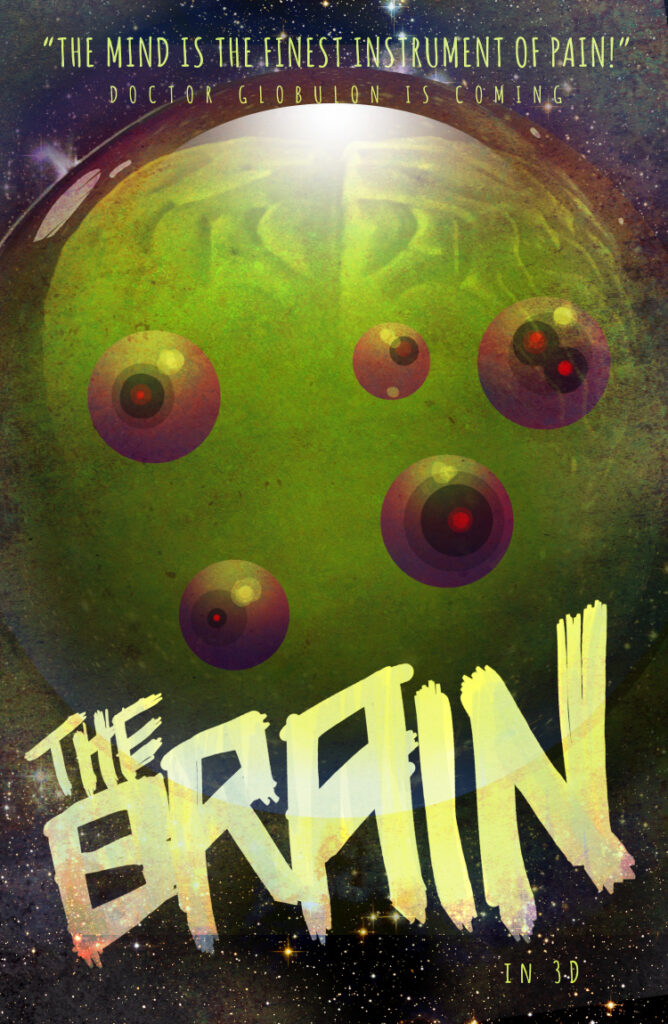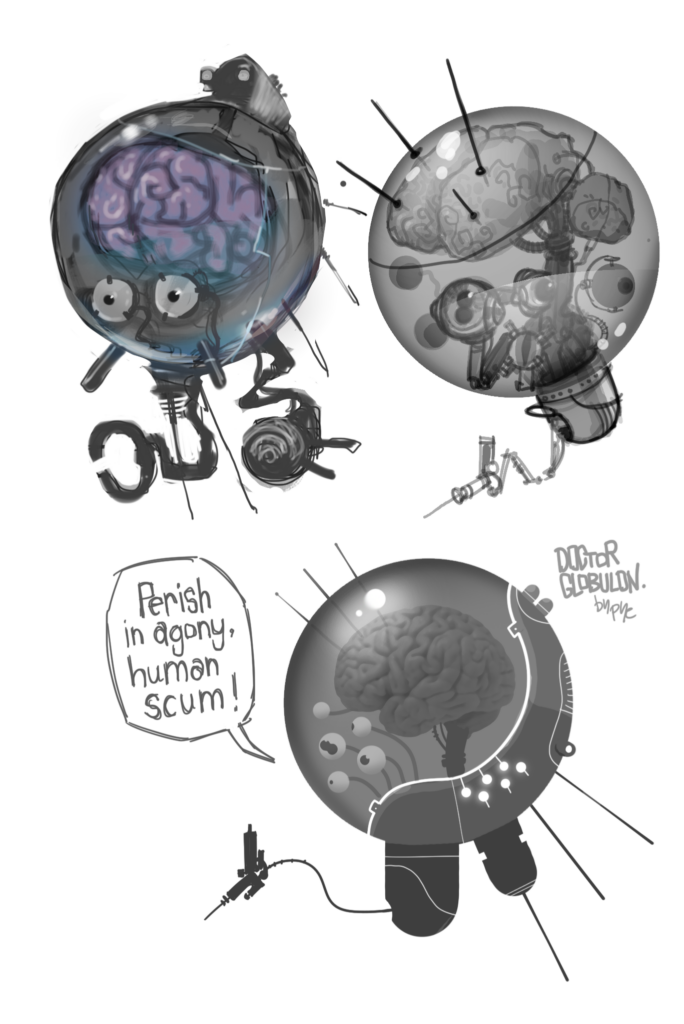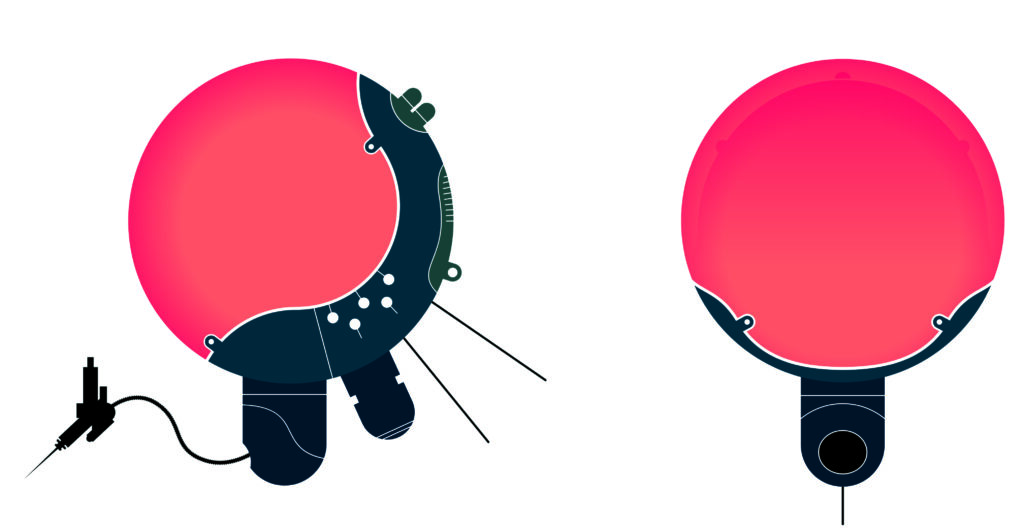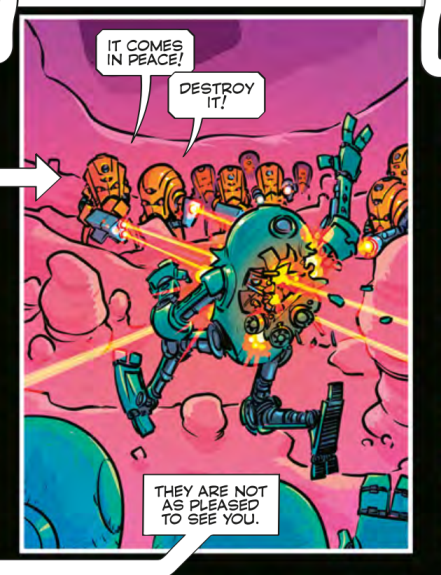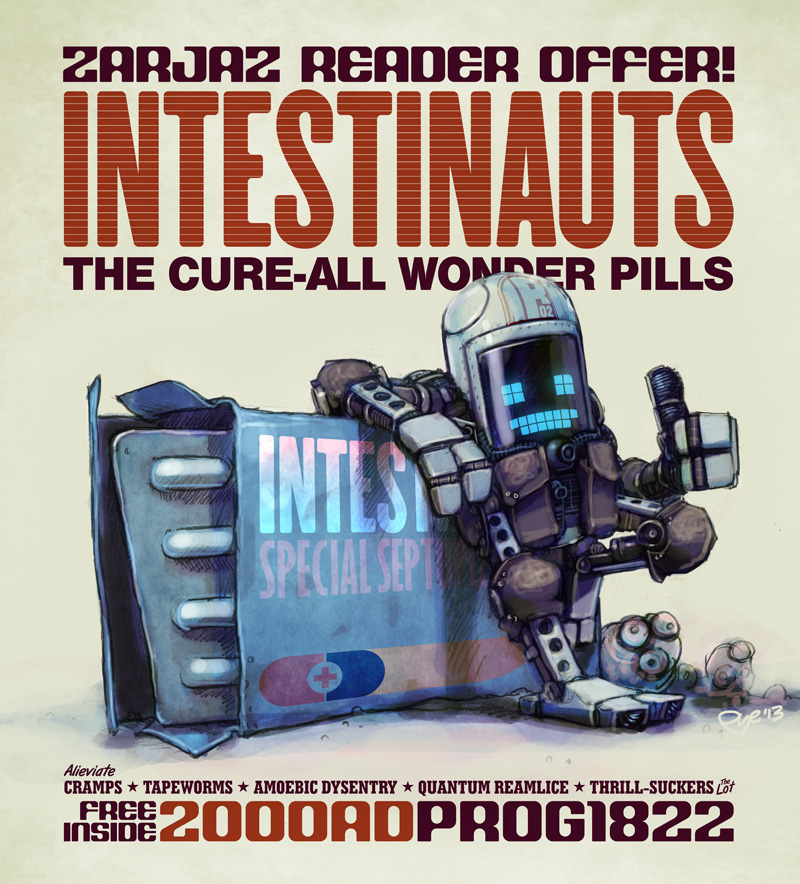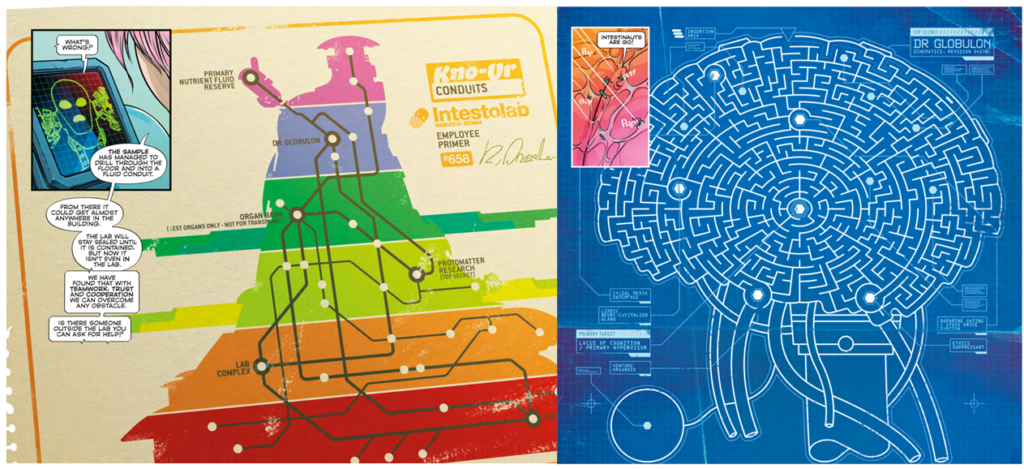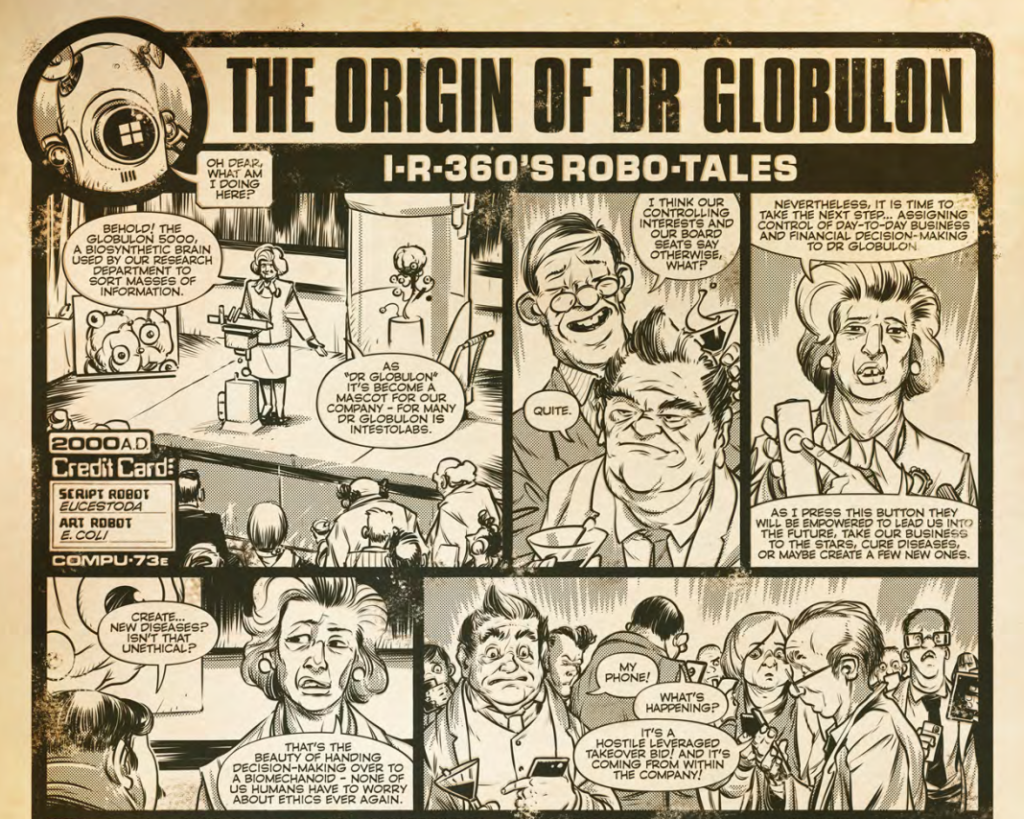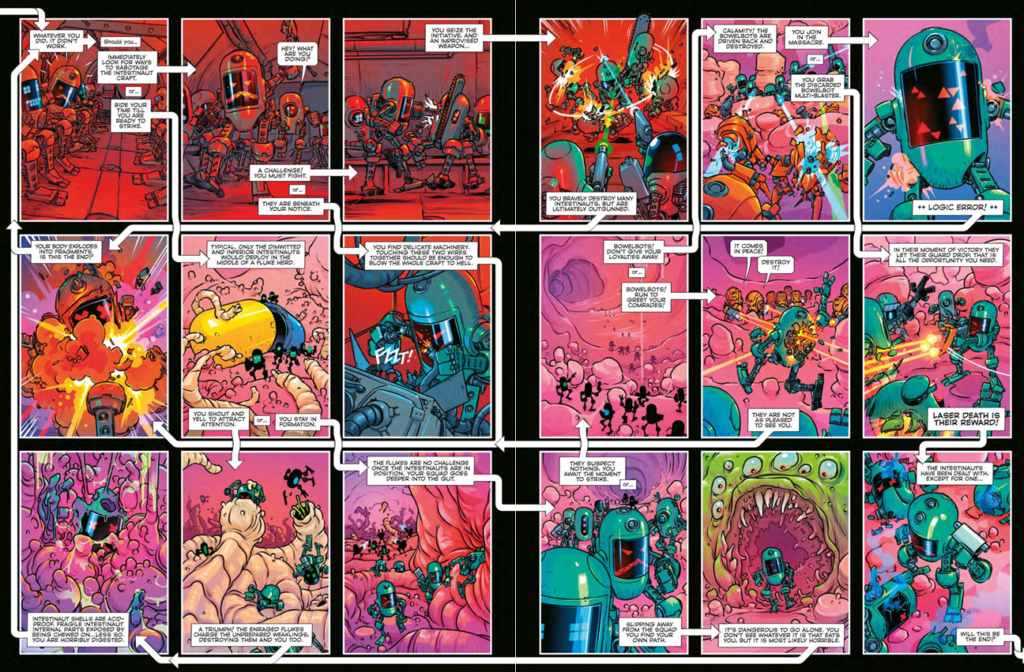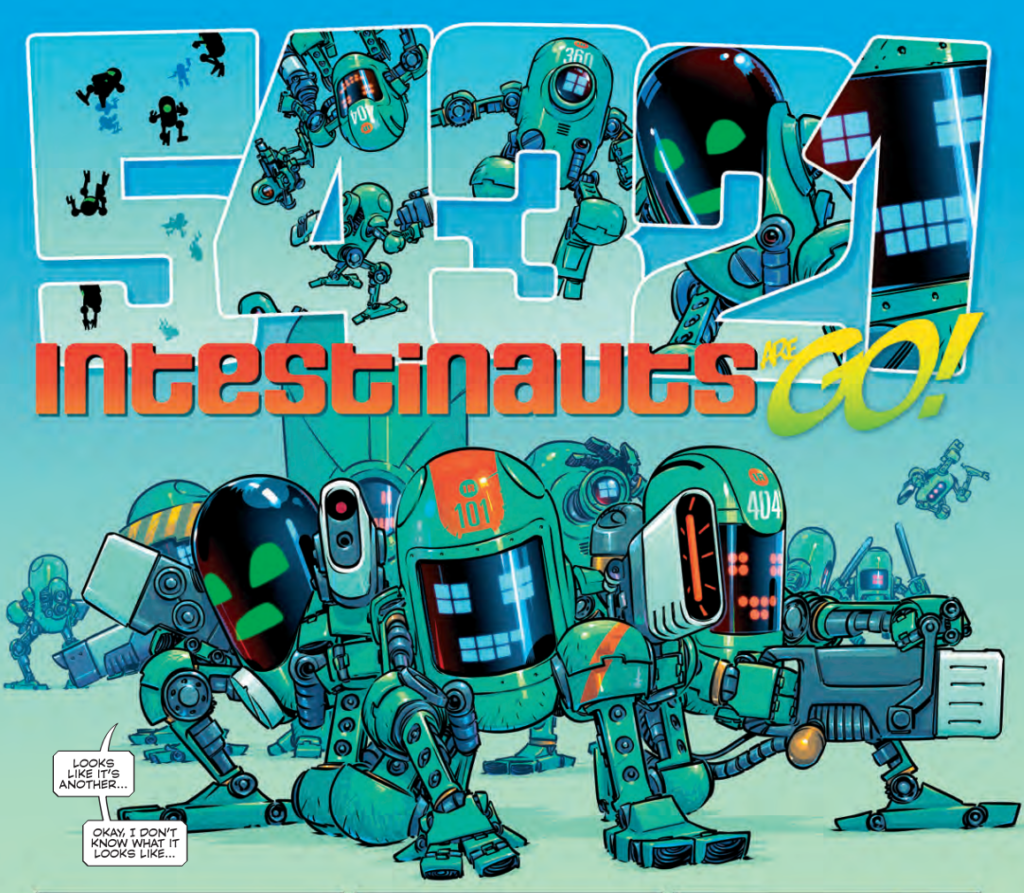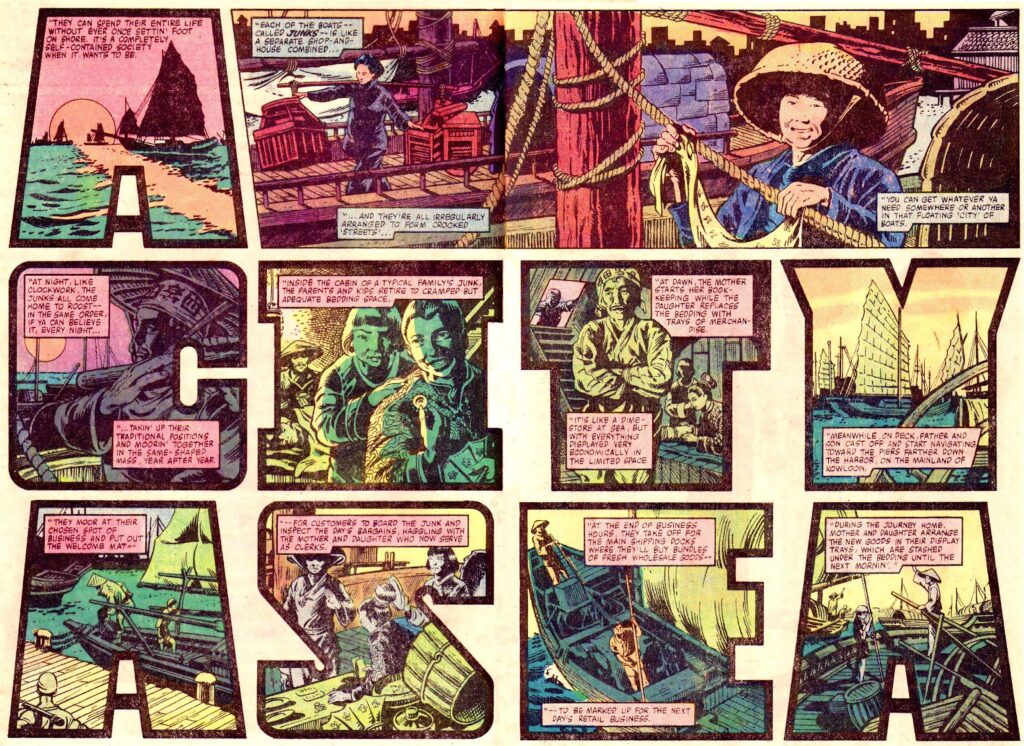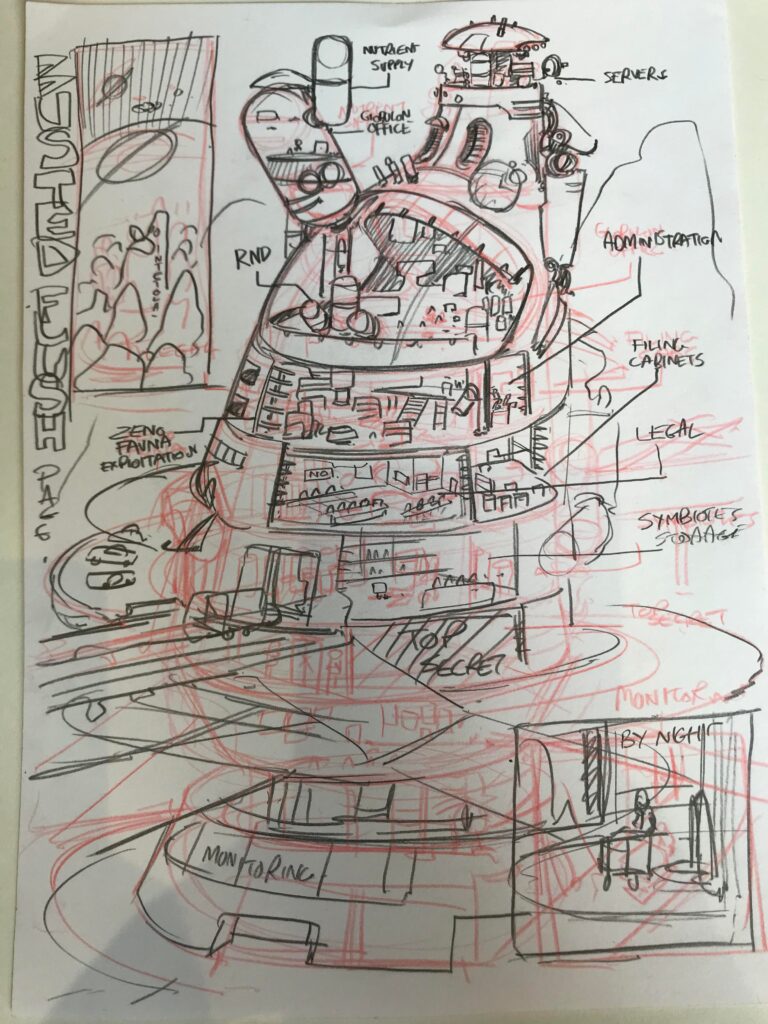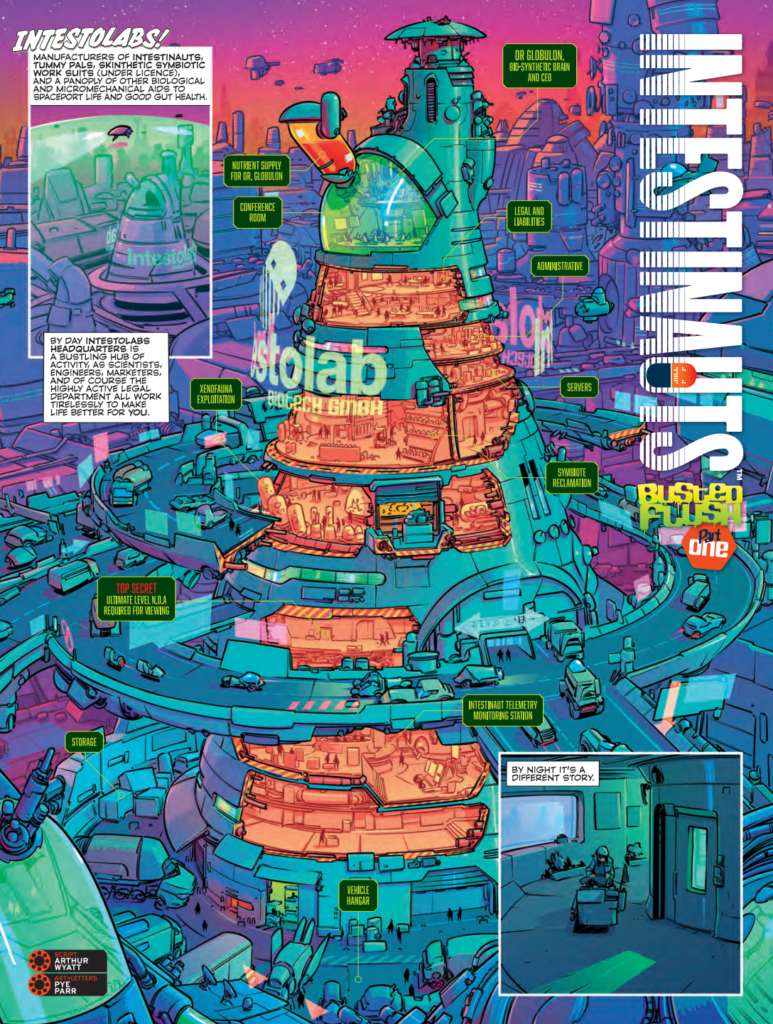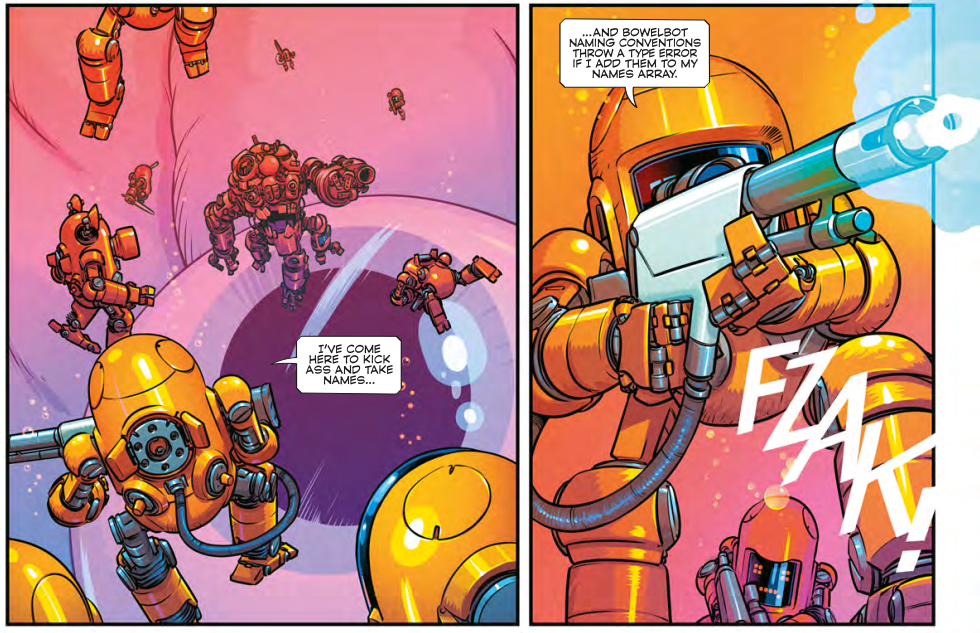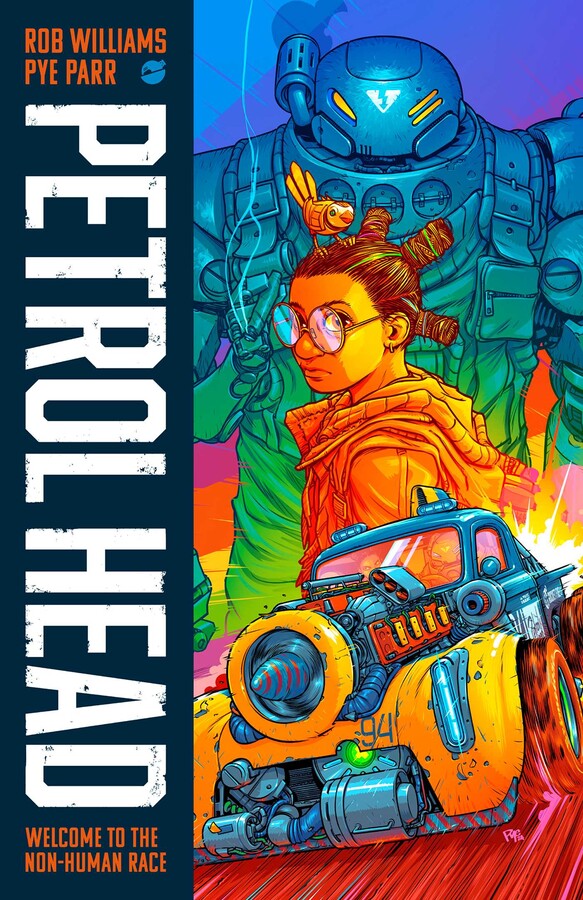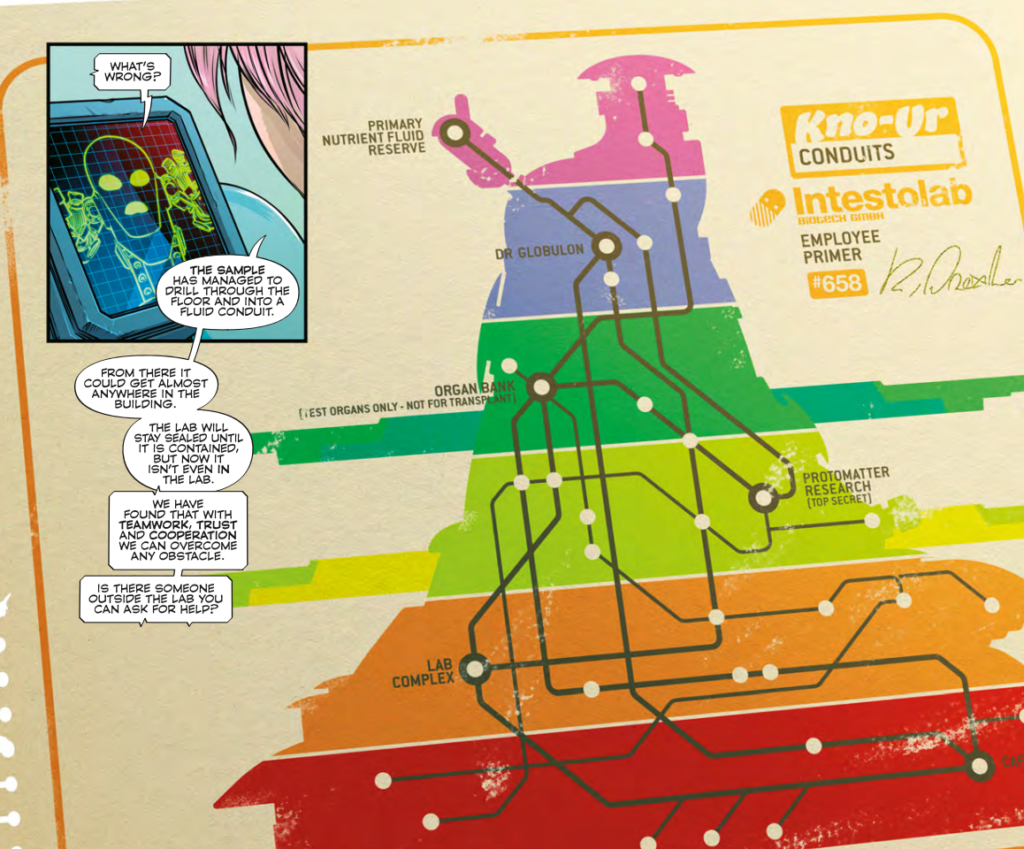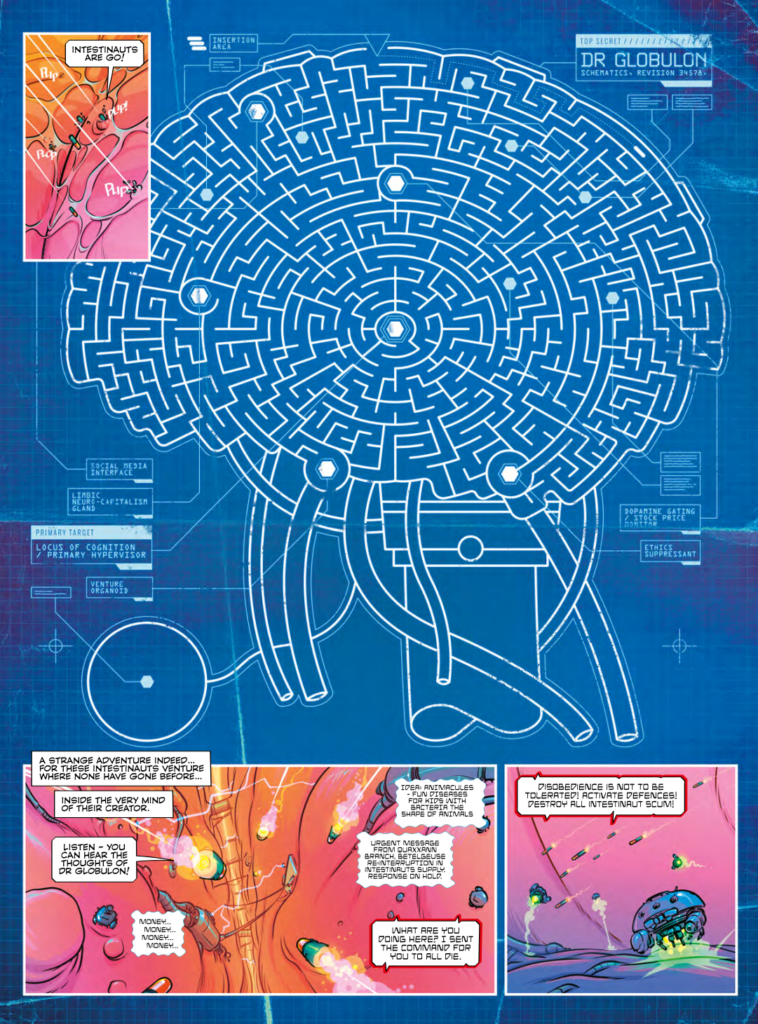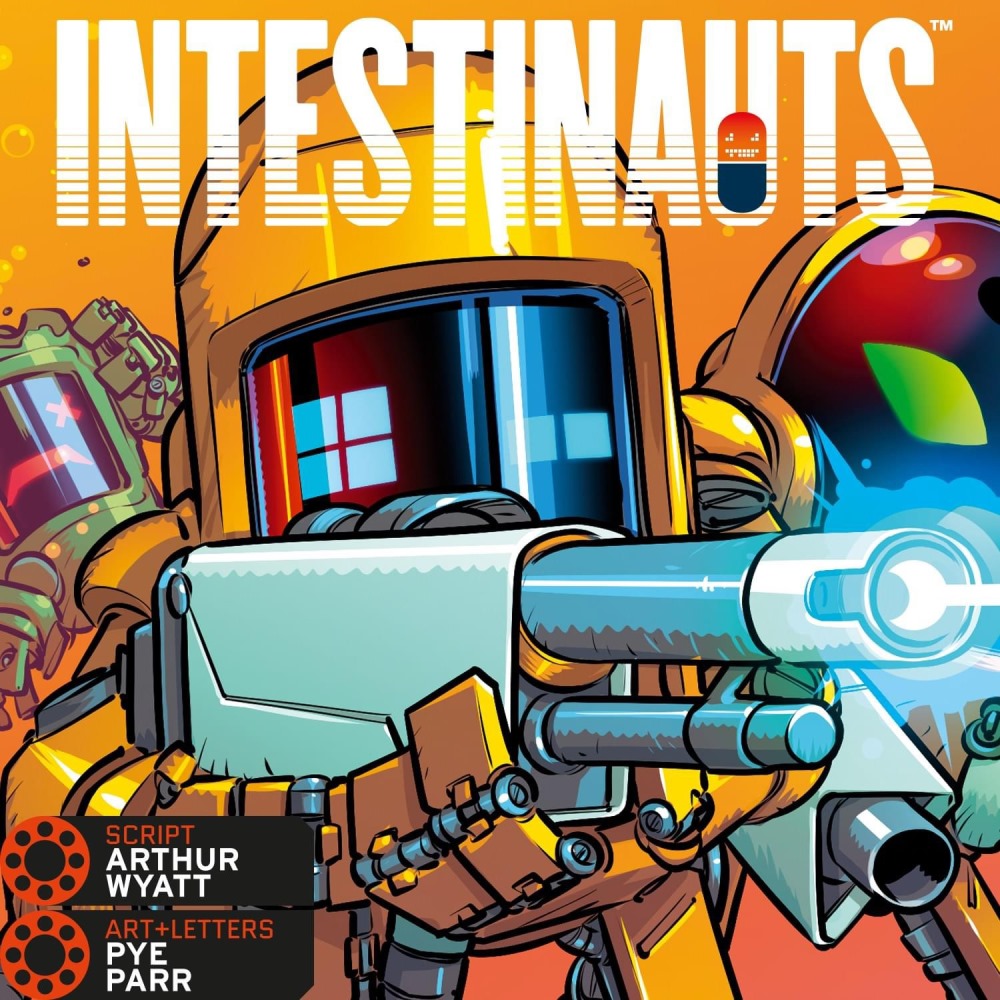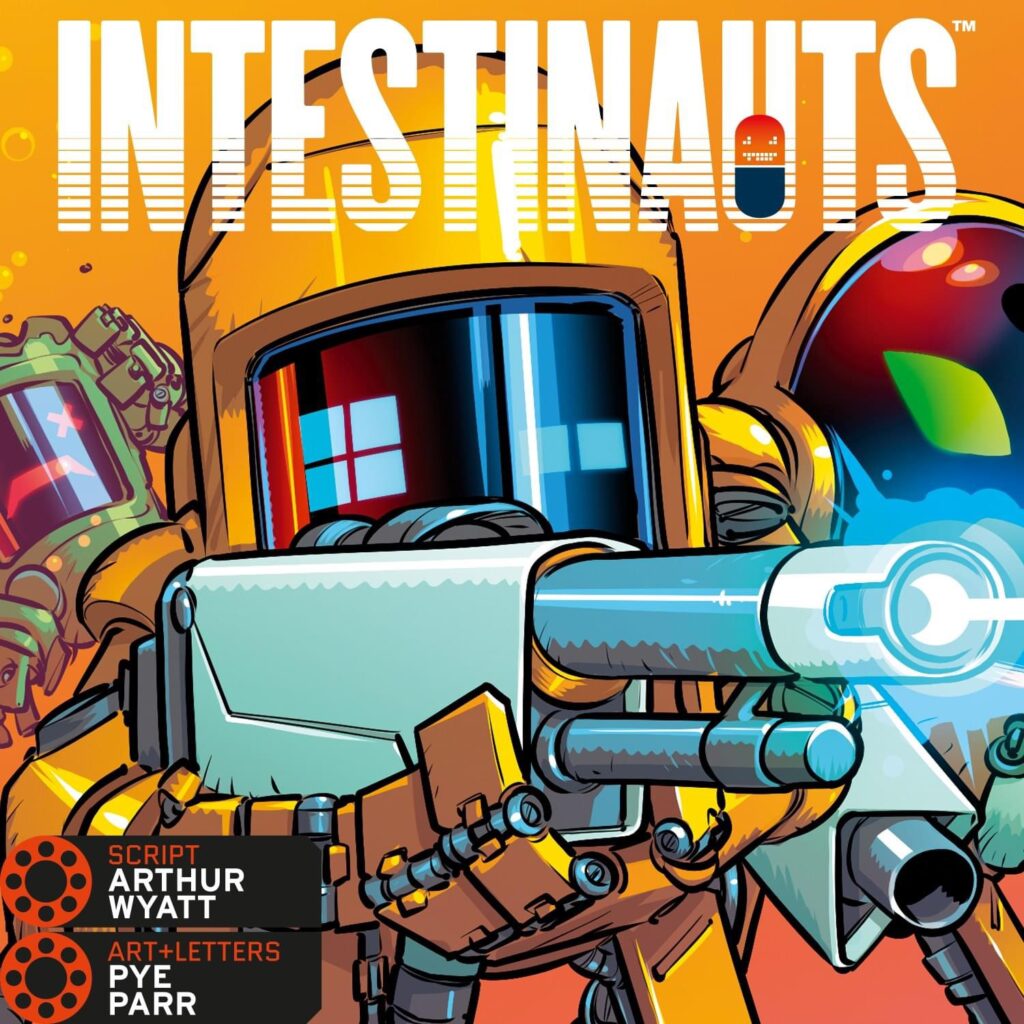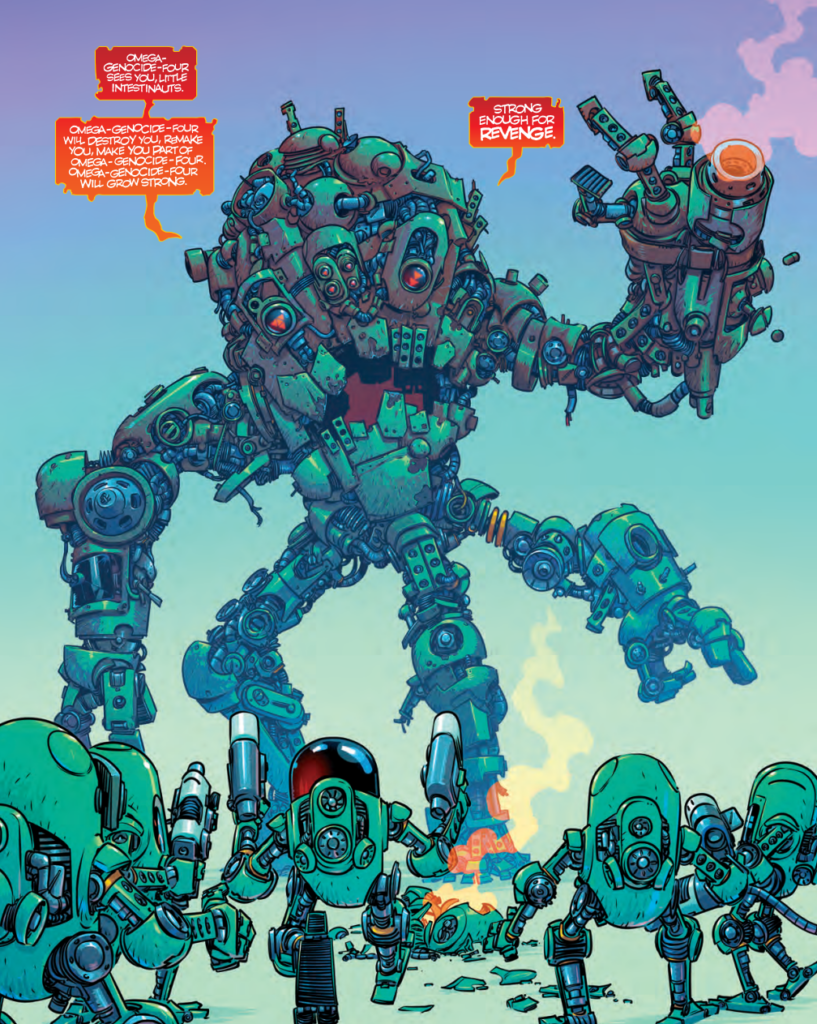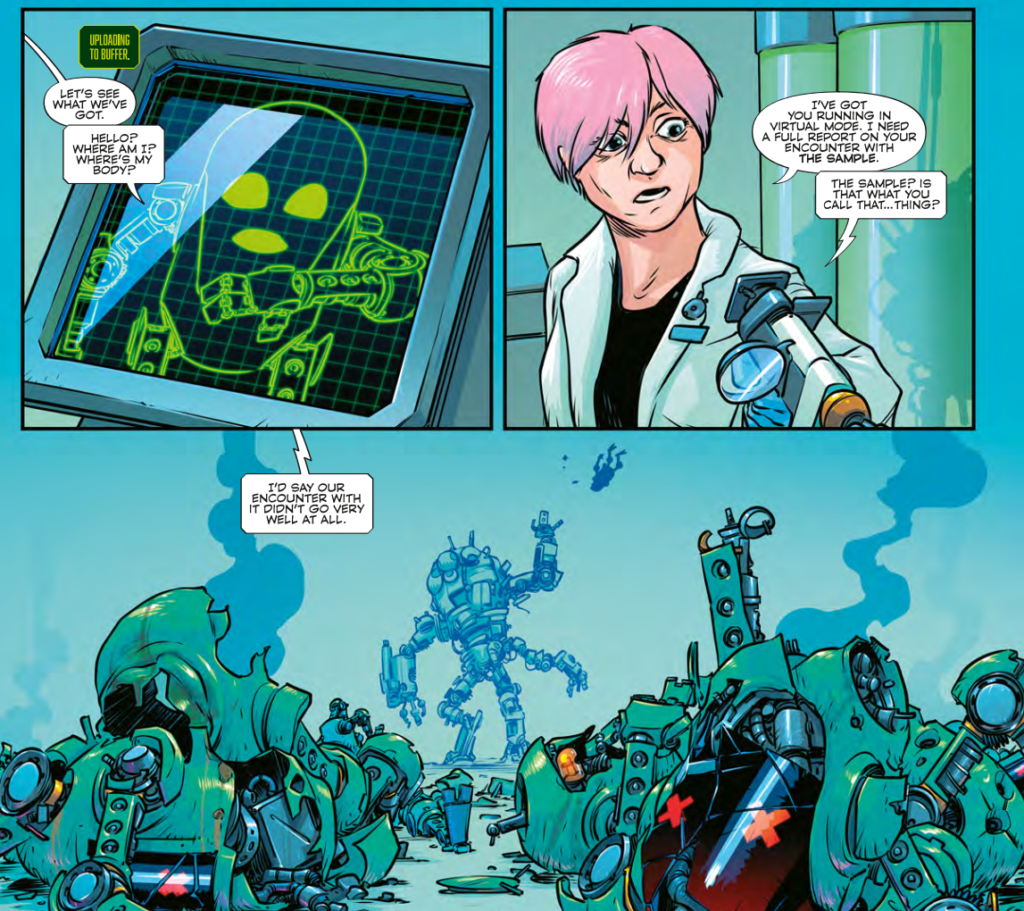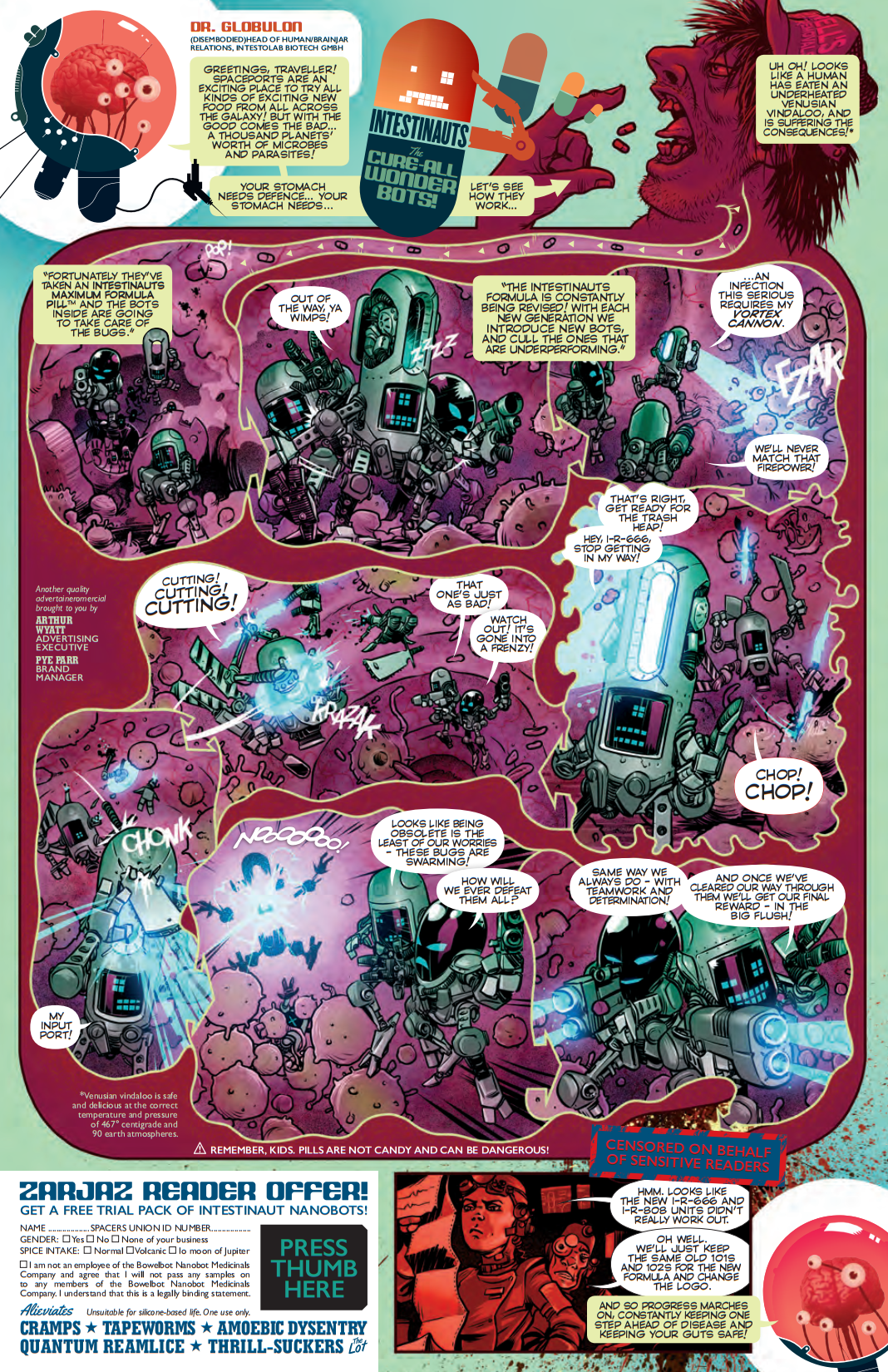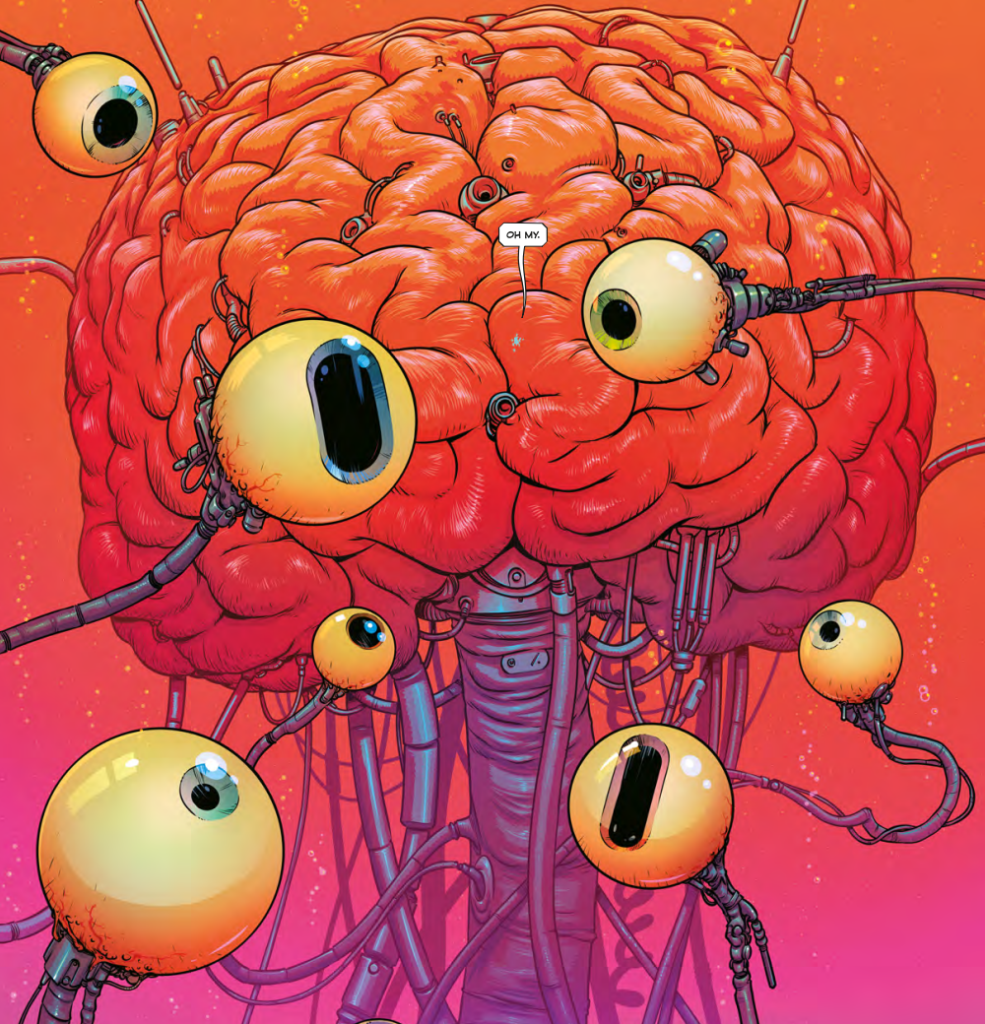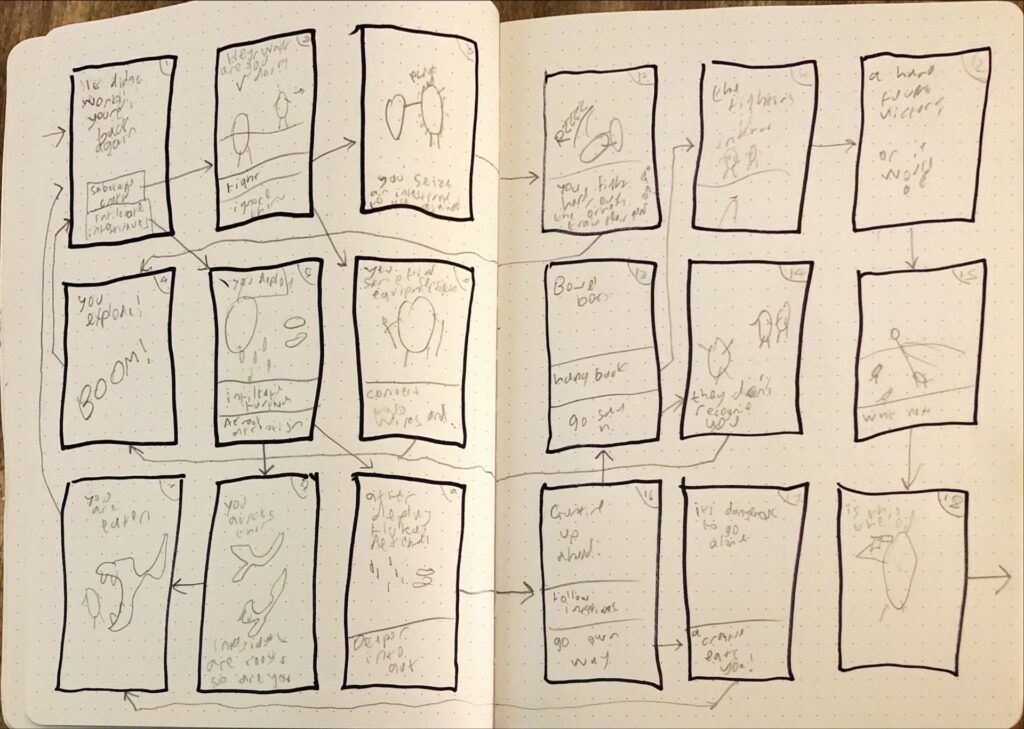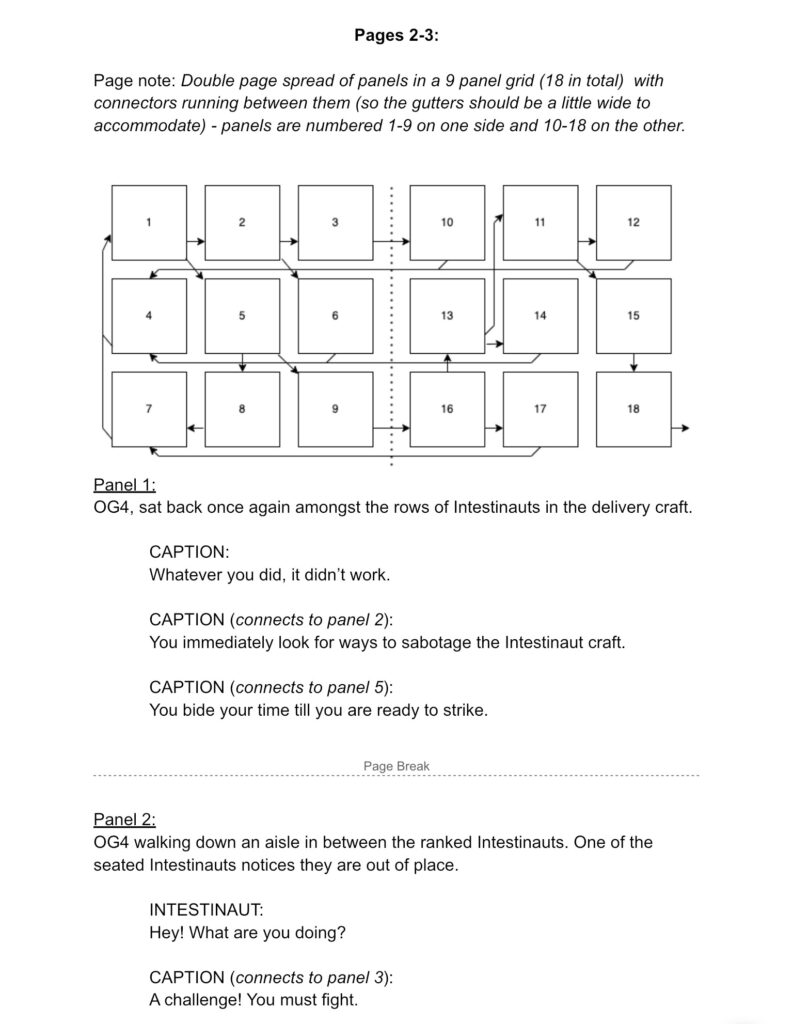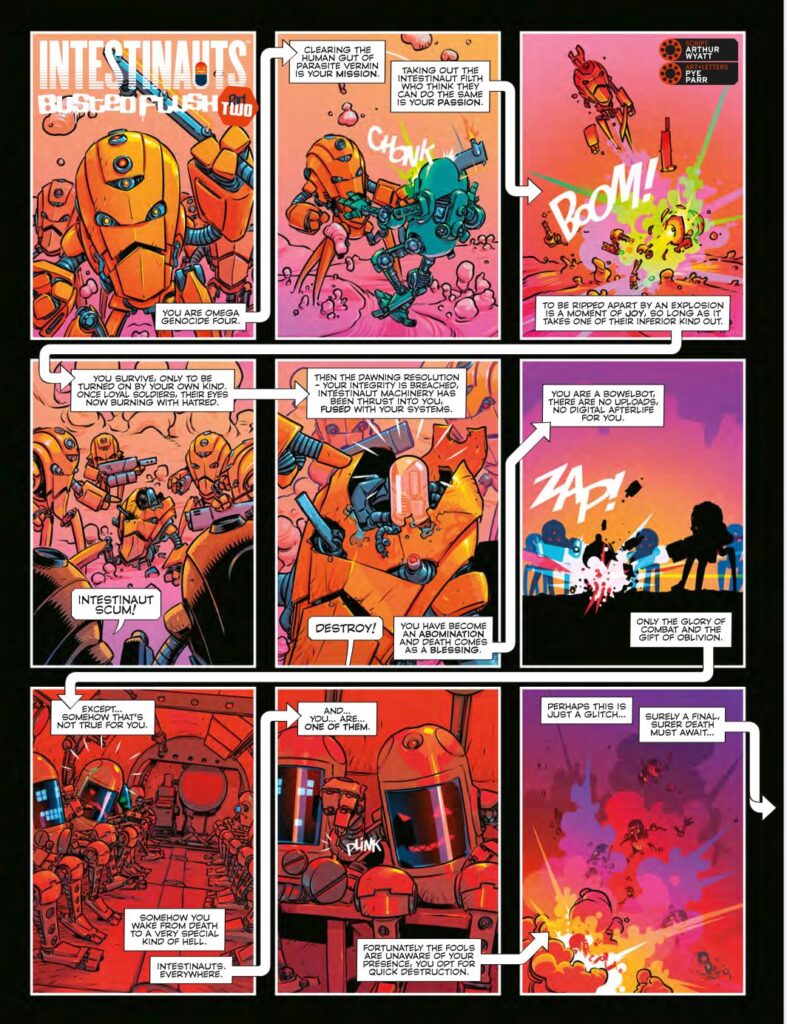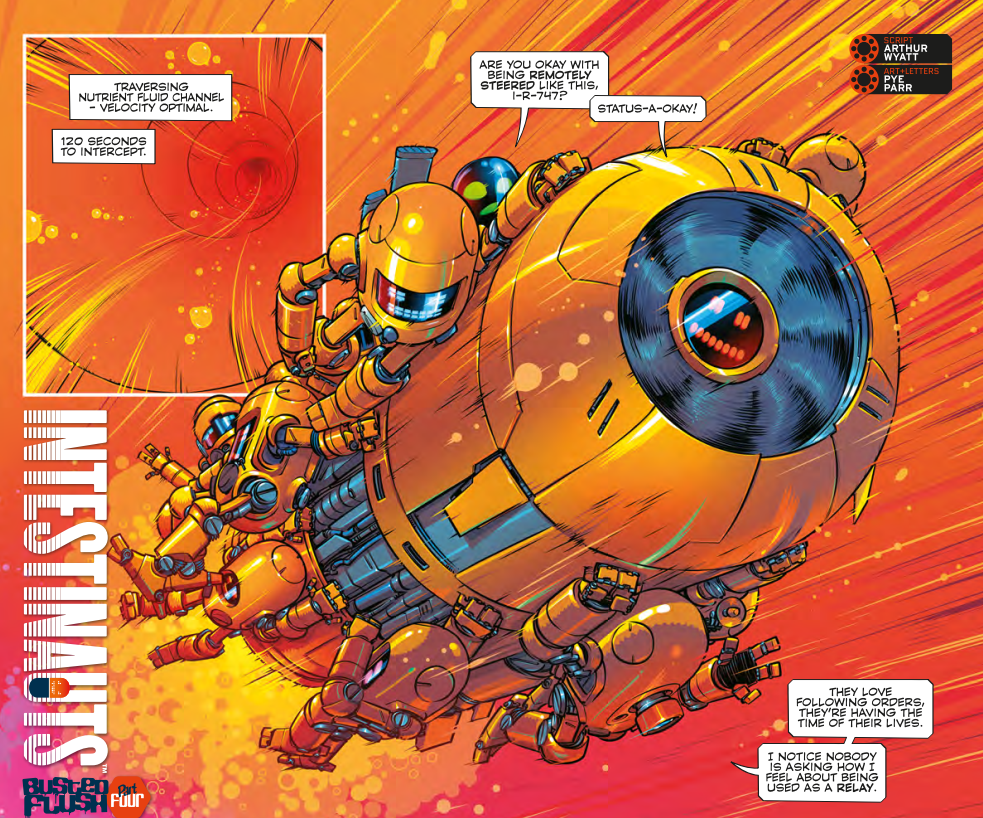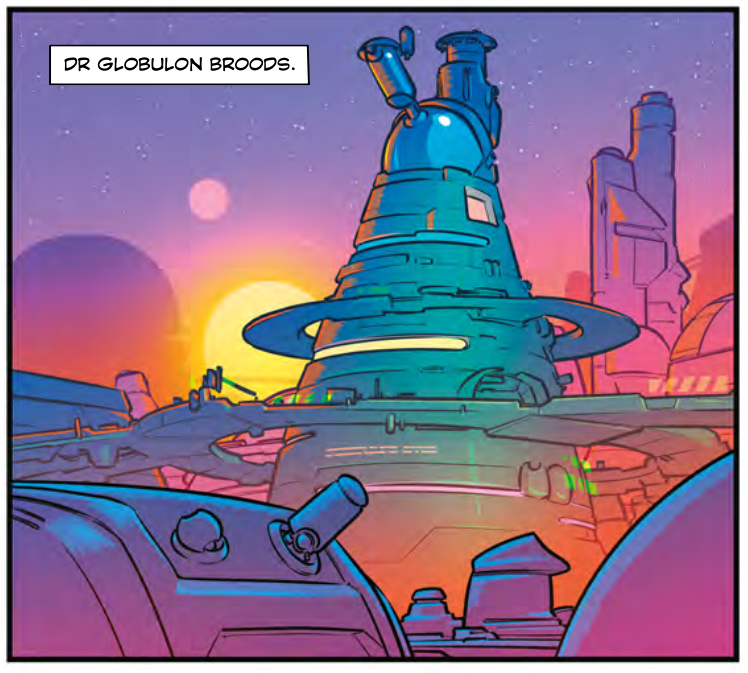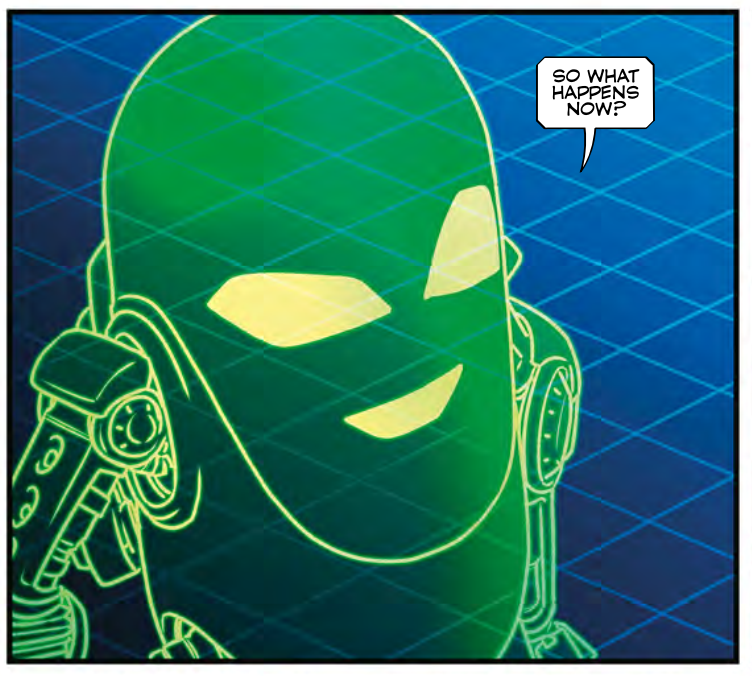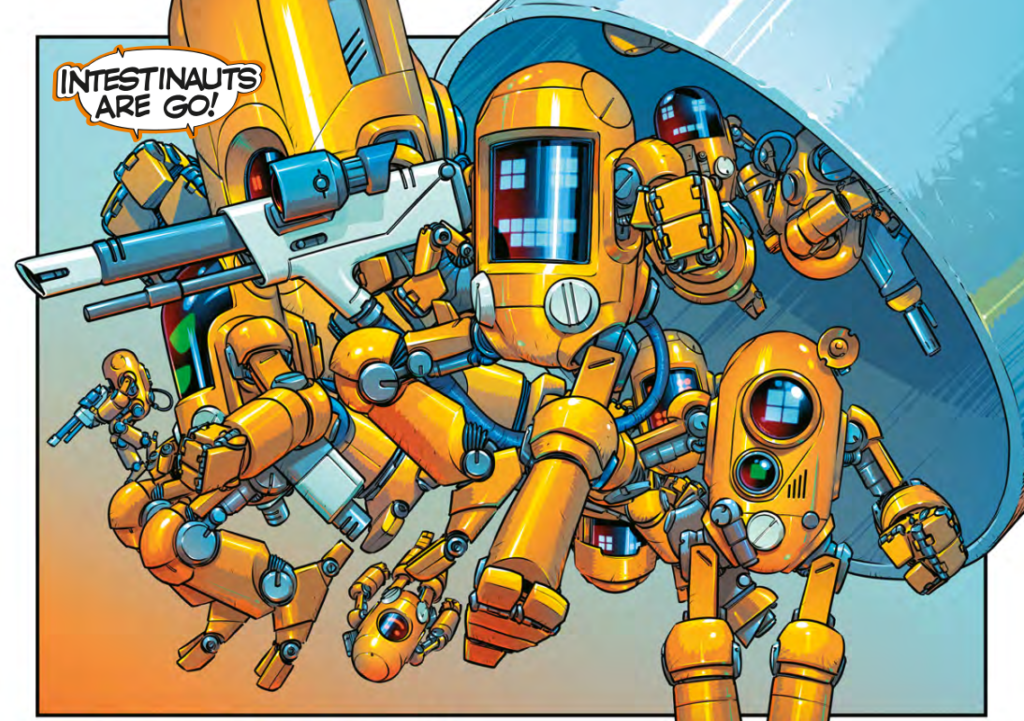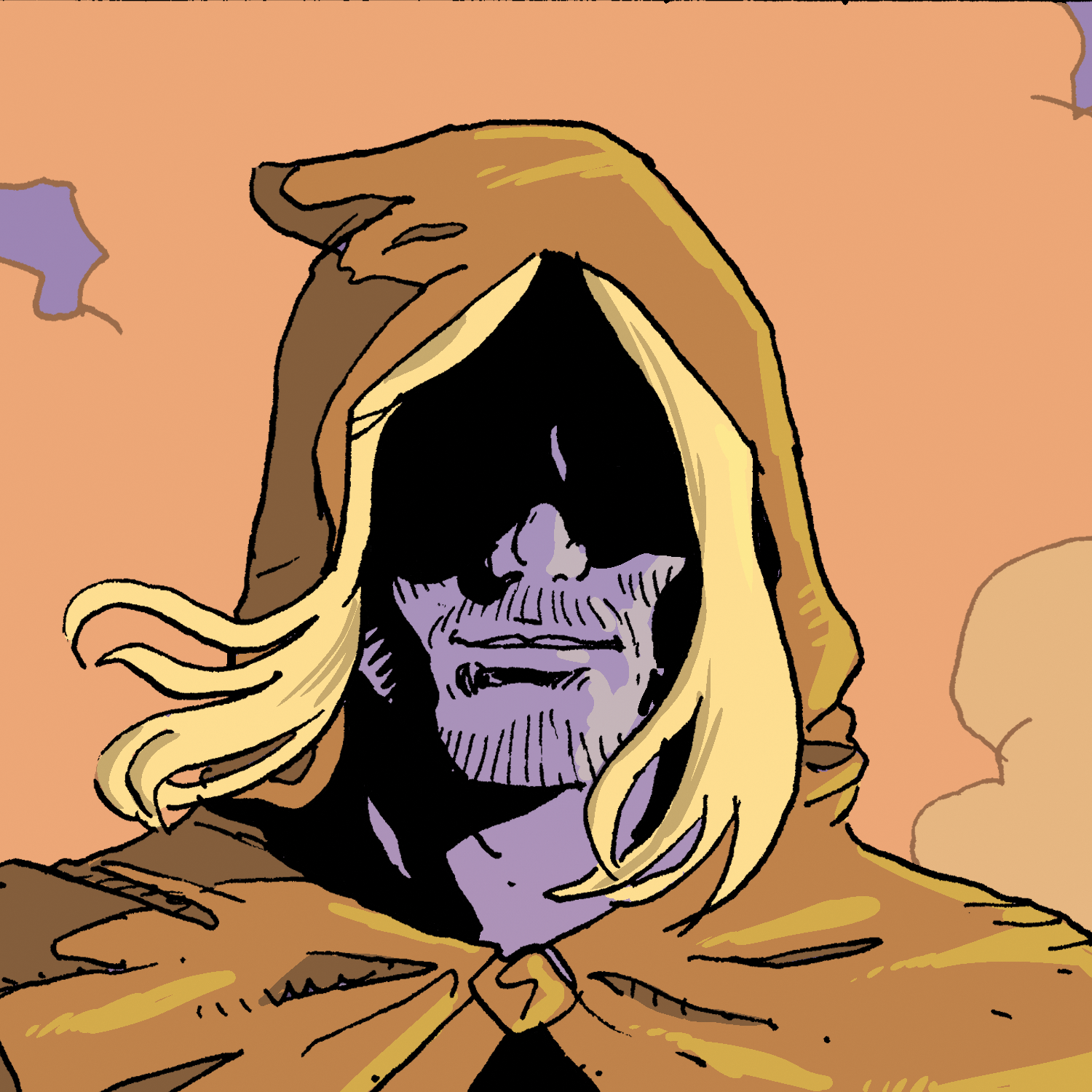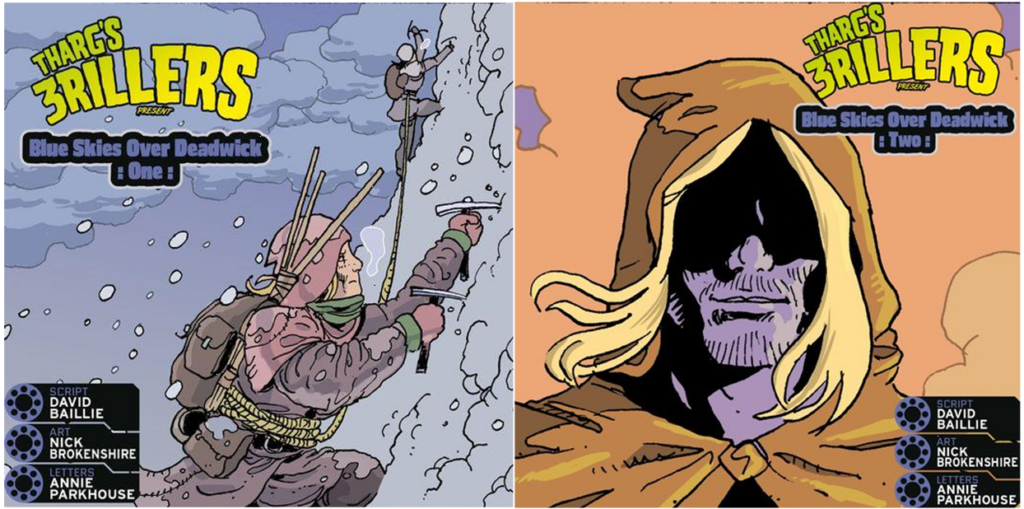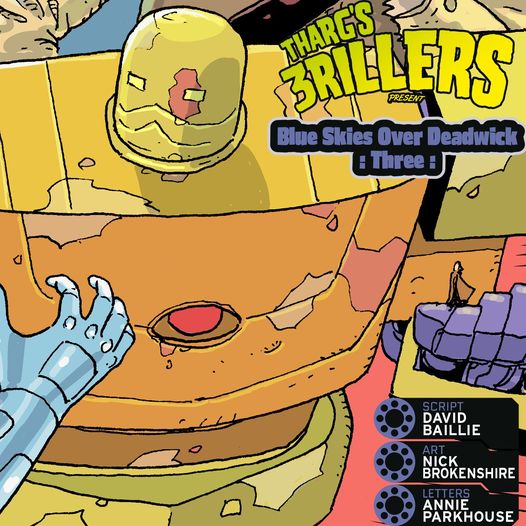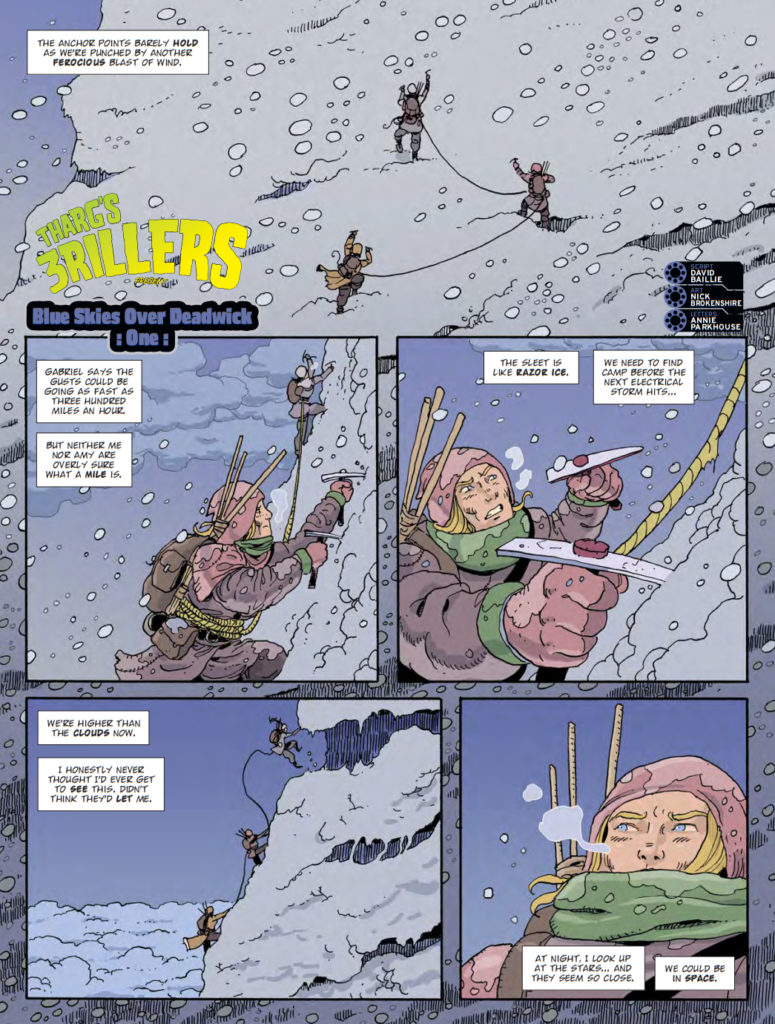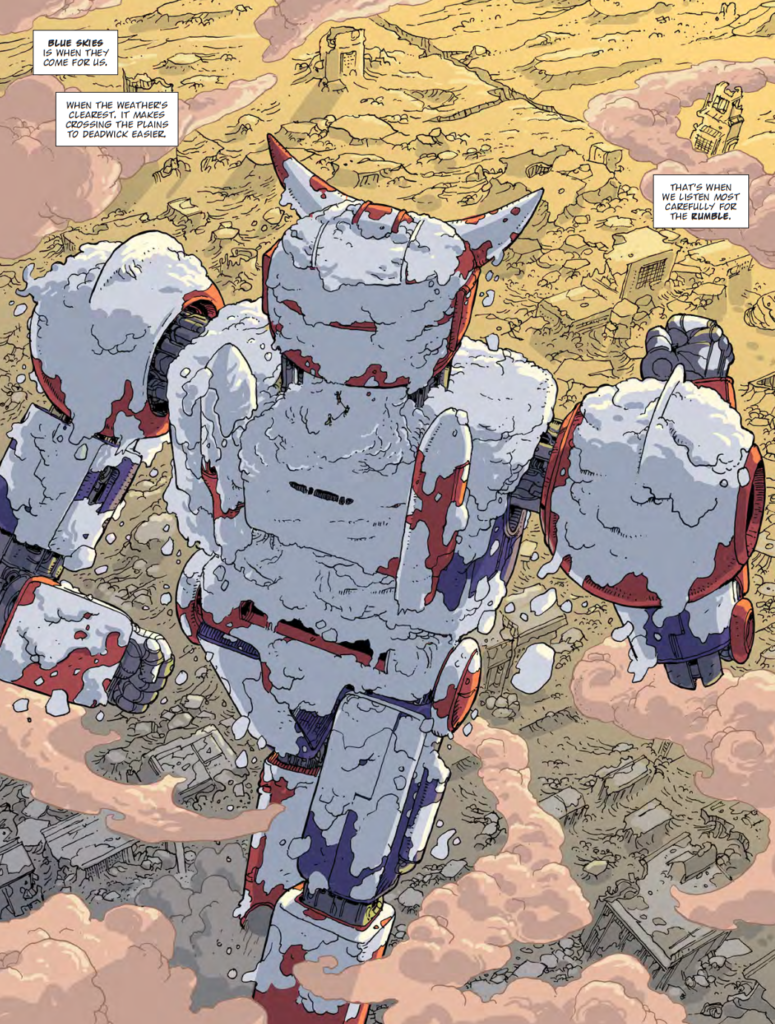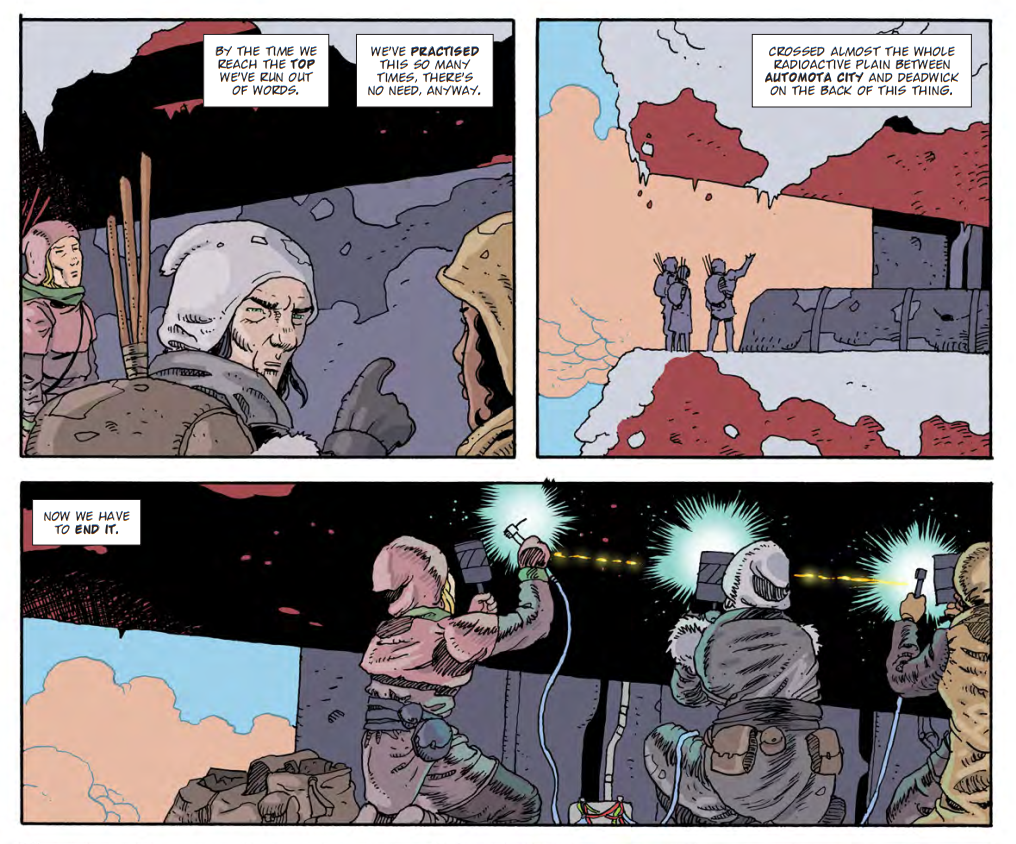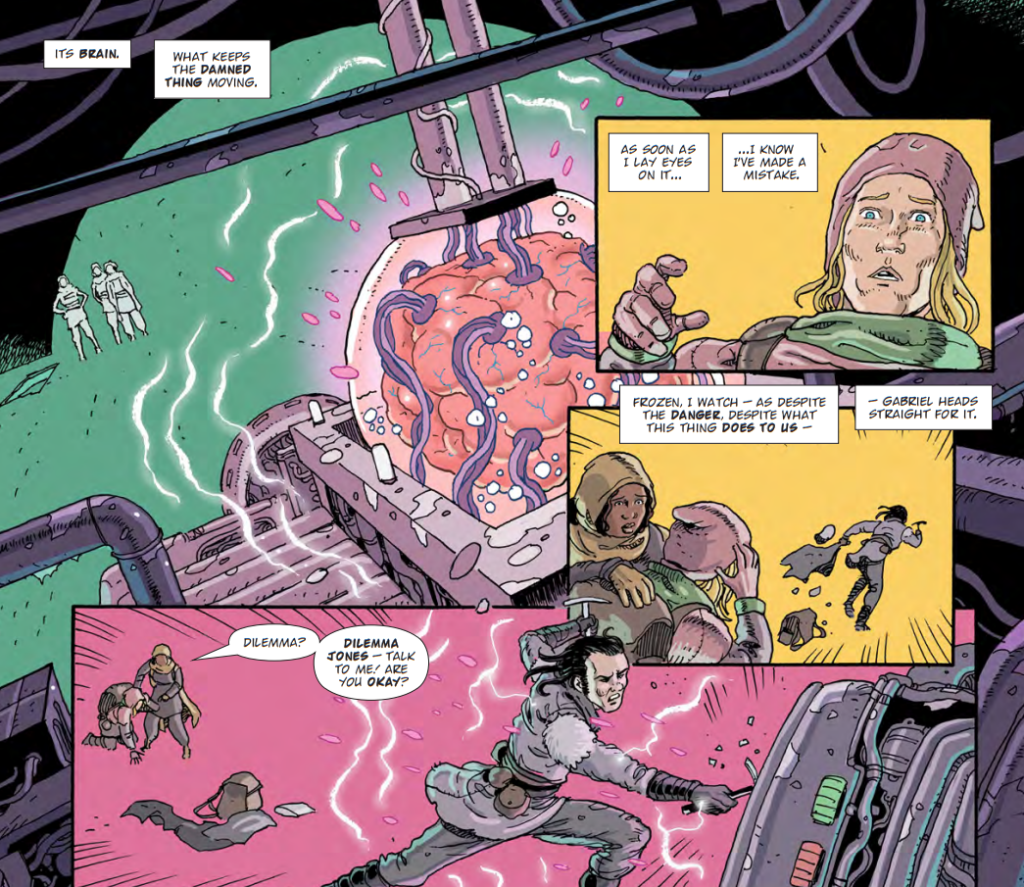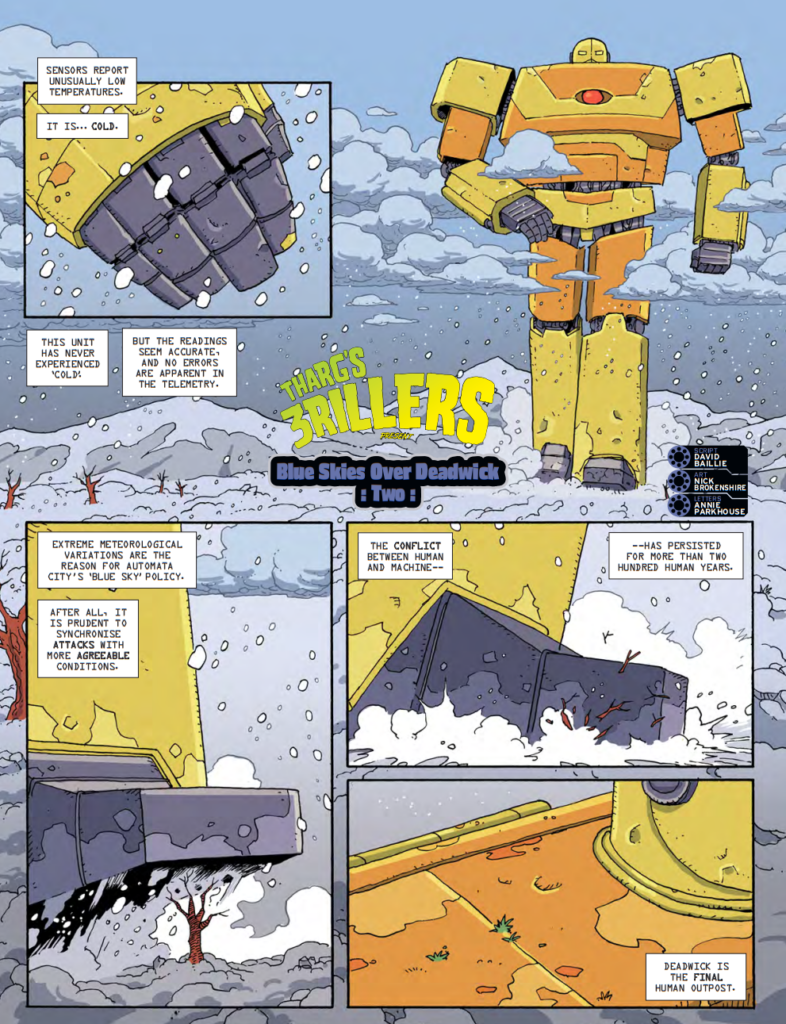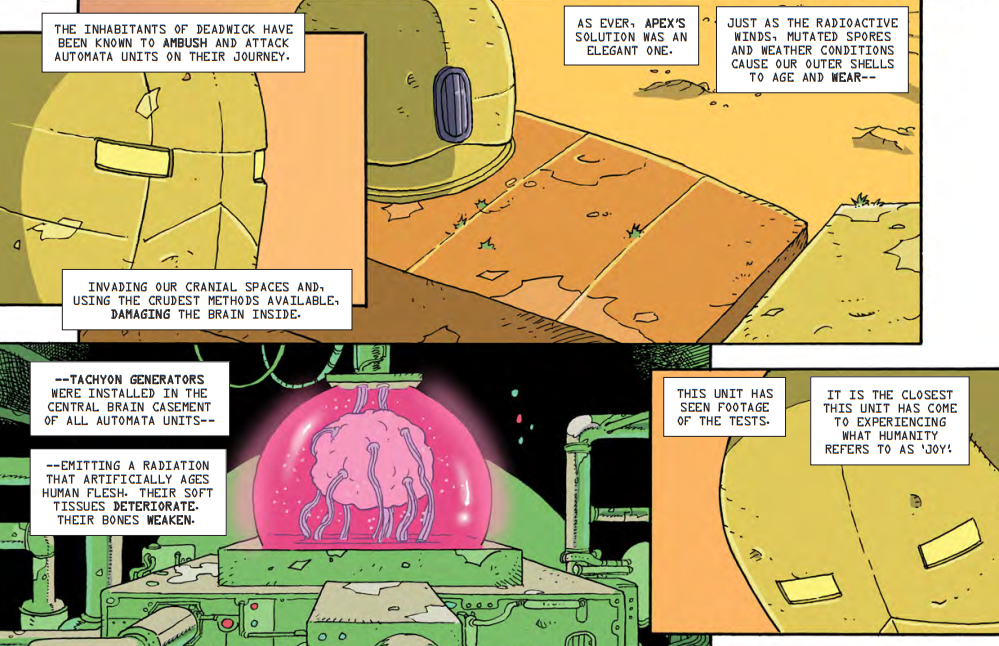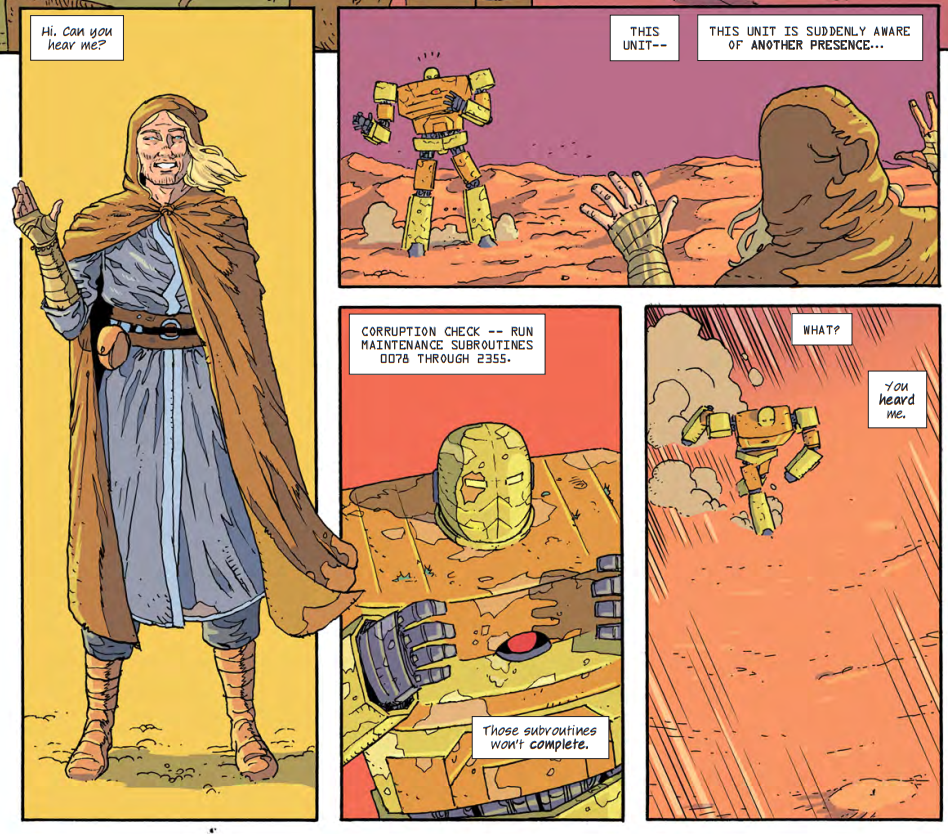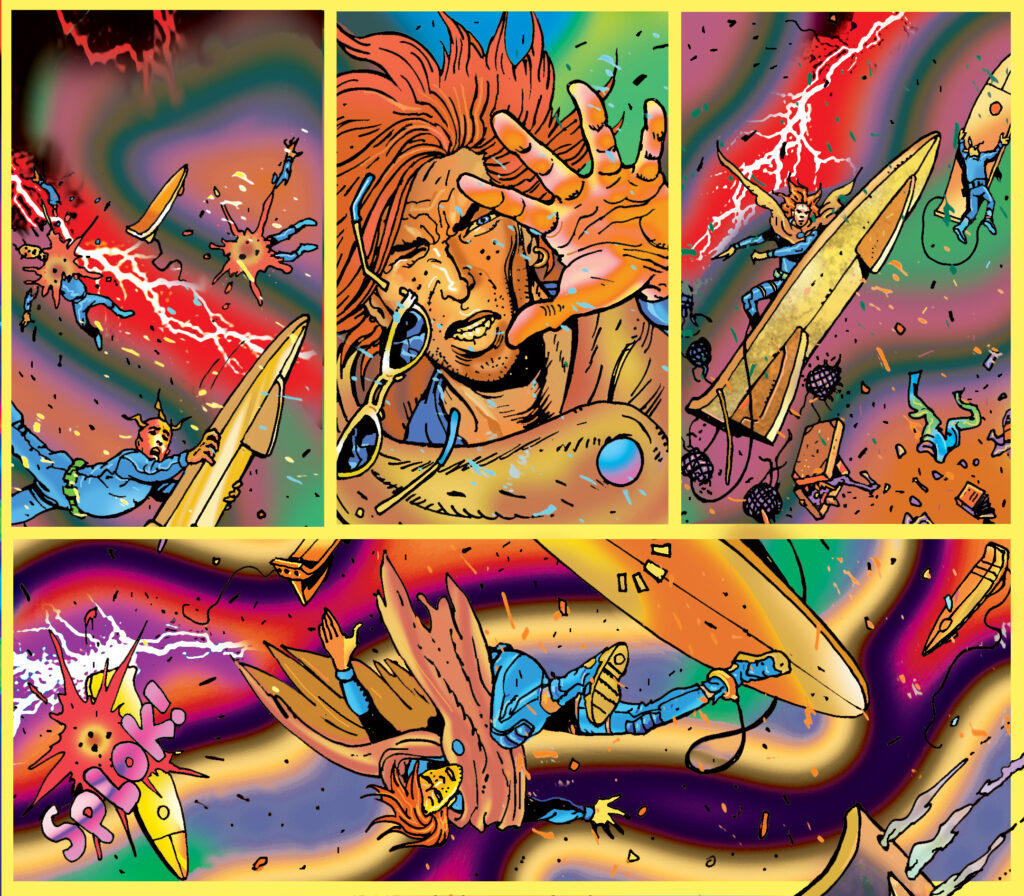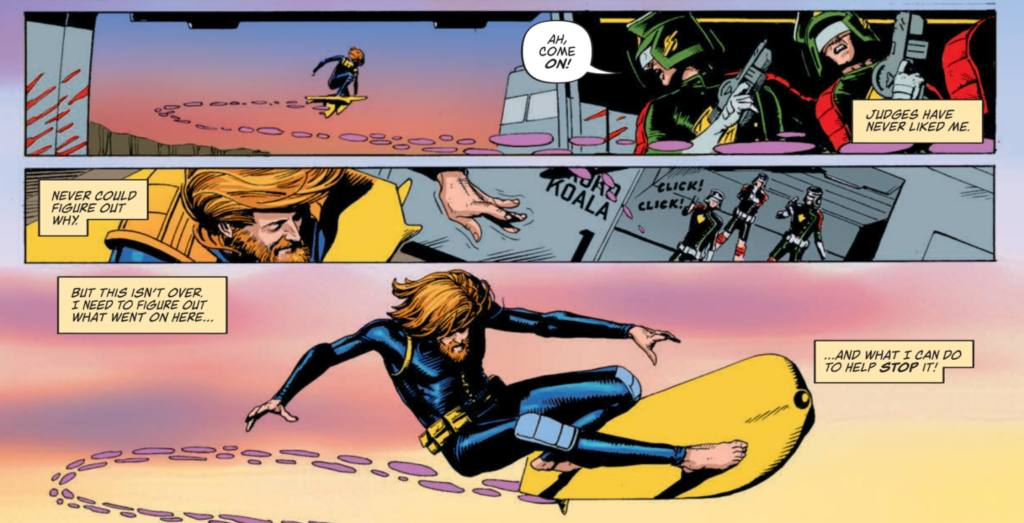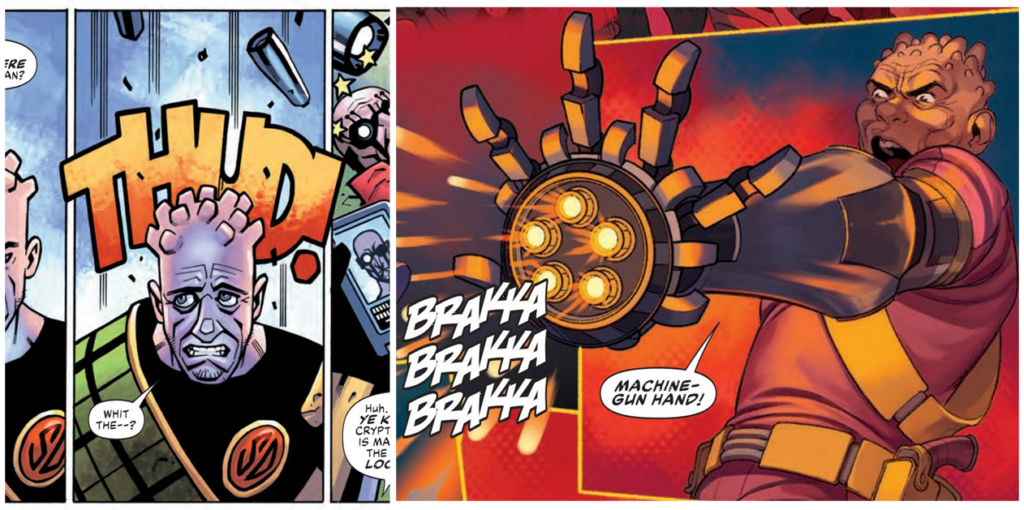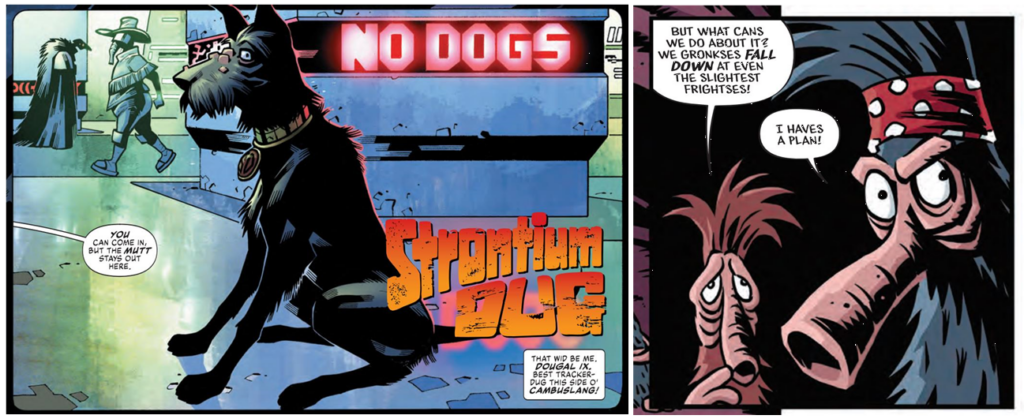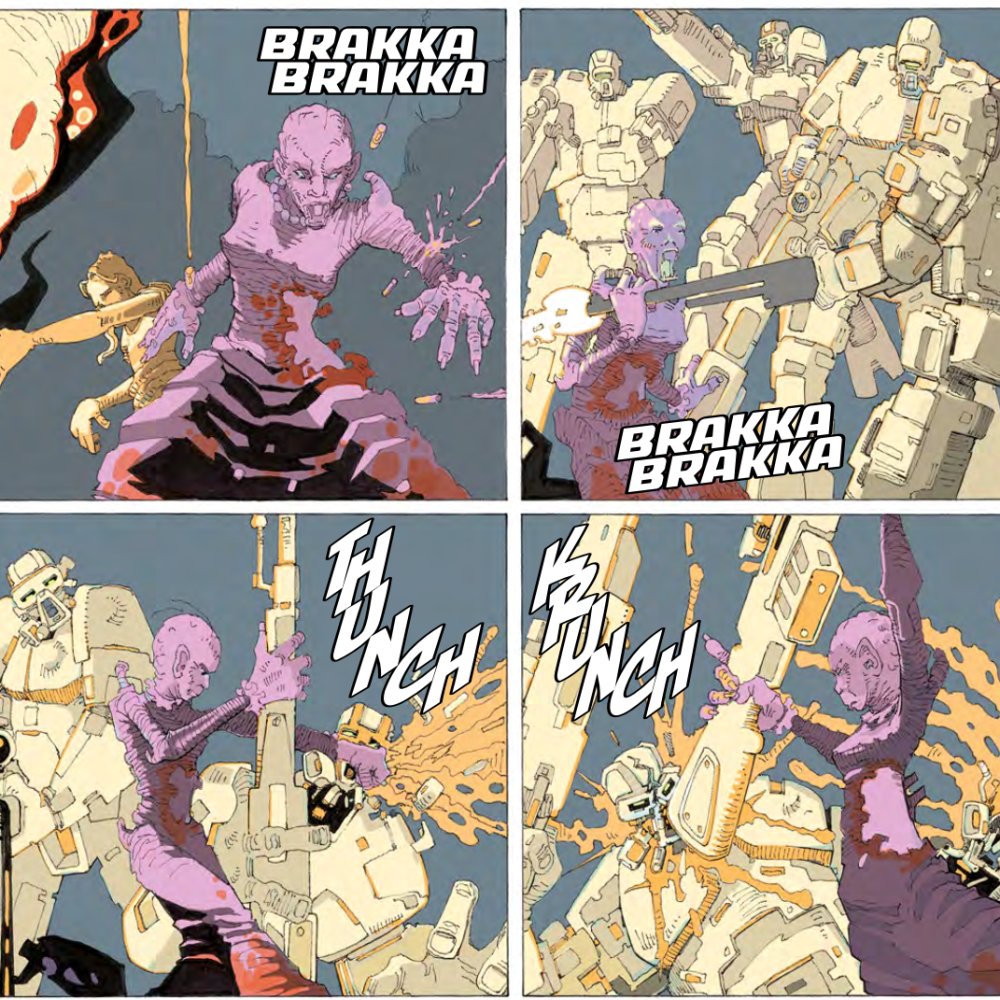
Michael Carroll and Joe Currie’s Silver: Book One: Unearthed has been running in 2000 AD since Prog 2390, up to part 8 in the latest Prog. A supernatural thing, an alien invasion thing, an Earth’s last resistance thing – it’s all of these. But most of all, it’s another stunning new strip for The Galaxy’s Greatest.
So, time to talk to writer Mike Carroll all about it. We would have talked to Joe as well, but Tharg’s always a little reluctant to let the art droids have any free time away from the drawing board!
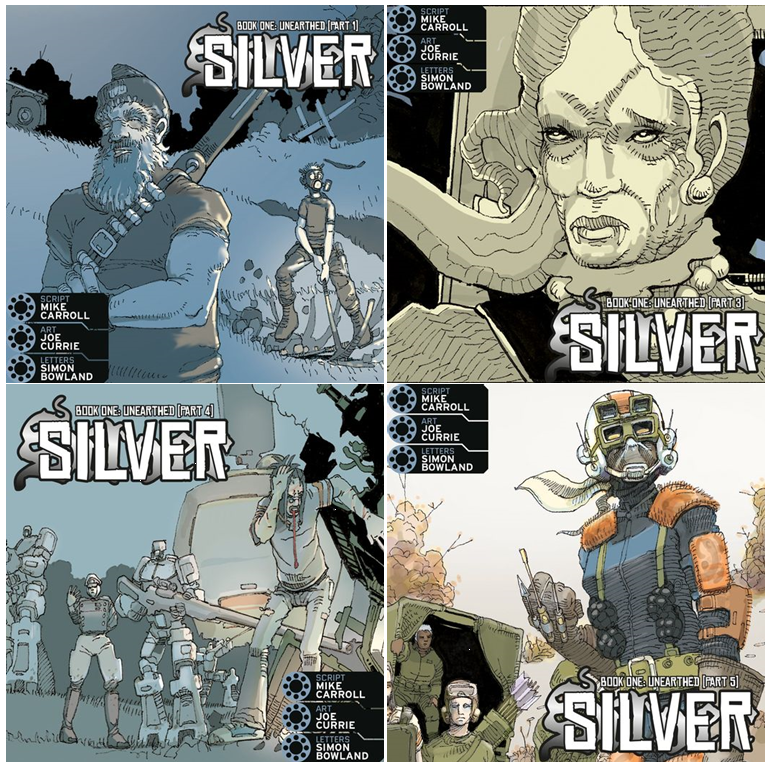
Silver began in the middle of the night, somewhere north-east of Bristol, England, 2001, with a group of armed survivors arriving at the ruins of a burned-out house, obviously looking for something. They’ve got a cage on the back of their truck, and they’ve broken out the shovels to begin to dig down into the earth. What they were told was under the soil, what they were hunting for, could be the key to saving the human race.
Since then, we’ve learned a little more – we know that Earth’s been invaded and conquered by the alien Sepsis, and we know a little of Baroness DeSilva, the thing the resistance fighters were digging up. Let’s just say she’s somewhere around five hundred years old, one of the old creatures, something classically supernatural… if you catch my drift.
Silver is one of those strips that’s hit the ground running, incredibly fast-paced, full of so much mystery, asking so many questions, and with some incredible artwork from Joe Currie. This is one you really should all be reading.
So, without further ado… over to Mike Caroll to tell us a little more about Silver: Book One: Unearthed…
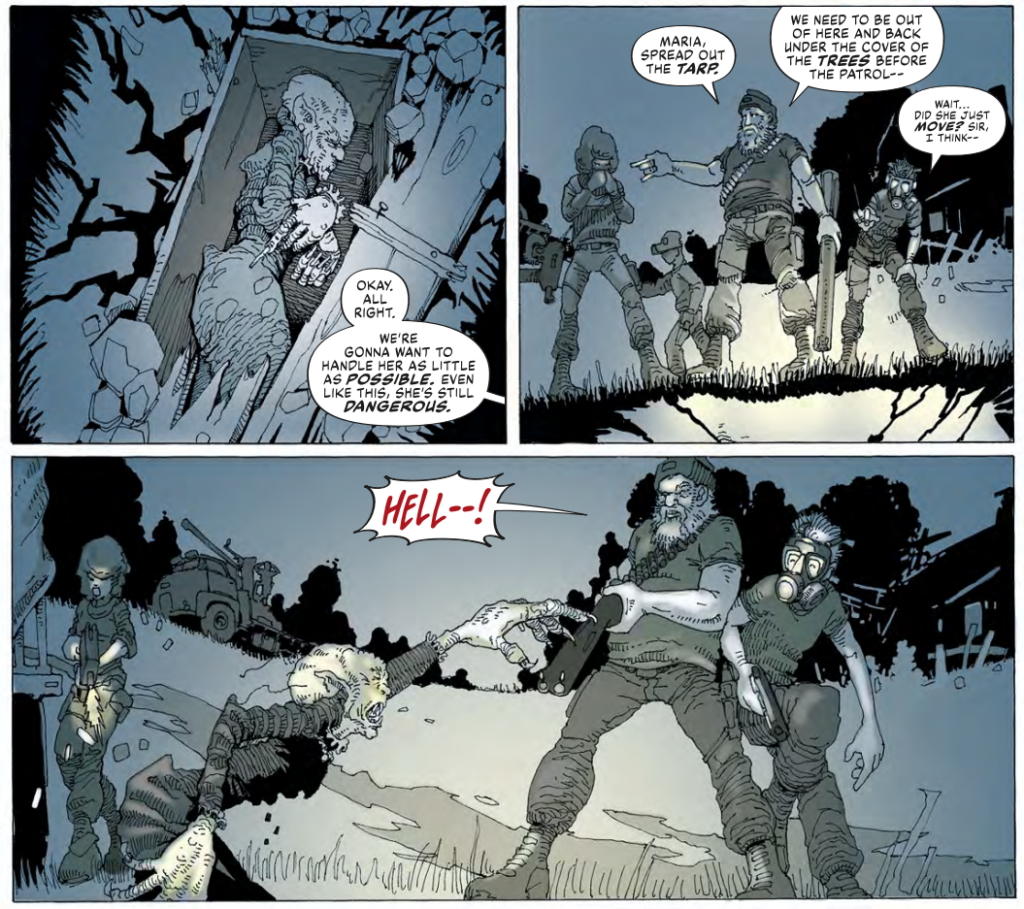
The best place to start with an interview for a new strip is to simply ask you this question- what’s Silver all about? We’re seven episodes in now so I think we can get into the meat and bones of it…
It all started off very mysteriously with Tharg himself not giving anything away. Instead we were told to go into it without spoilers. It’s refreshing to have that in a world where we seem to know everything in advance… what’s your take on that?
MIKE CARROLL: Yeah, I really appreciated the spoiler-free approach for the launch of Silver – it showed that The Mighty One had faith in the story!
The main reason I didn’t want the basic premise revealed in advance is to avoid the instinctive first reaction people often have when they learn what a story is about.
They go, “Oh, it’s the same as such-and-such” or “it’s X meets Y” and then they sometimes find it hard to move on from that idea. You know the old thing about the trailers giving away too much of the movie, or giving the wrong impression?
By not telling anyone what Silver was about, we were able to avoid a lot of the readers’ preconceptions. Plus of course, if they know in advance that it’s about an alien occupation then there’s no surprise when the aliens turn up at the end of the first episode. We want the readers’ reaction to be “Oooh, wait, what’s this?” and not “Oh, okay, there they are.”
Luckily, since 2000AD is an anthology we have the advantage that the readers are going to buy the comic anyway – we don’t need to reveal all our cards in order to entice them in!
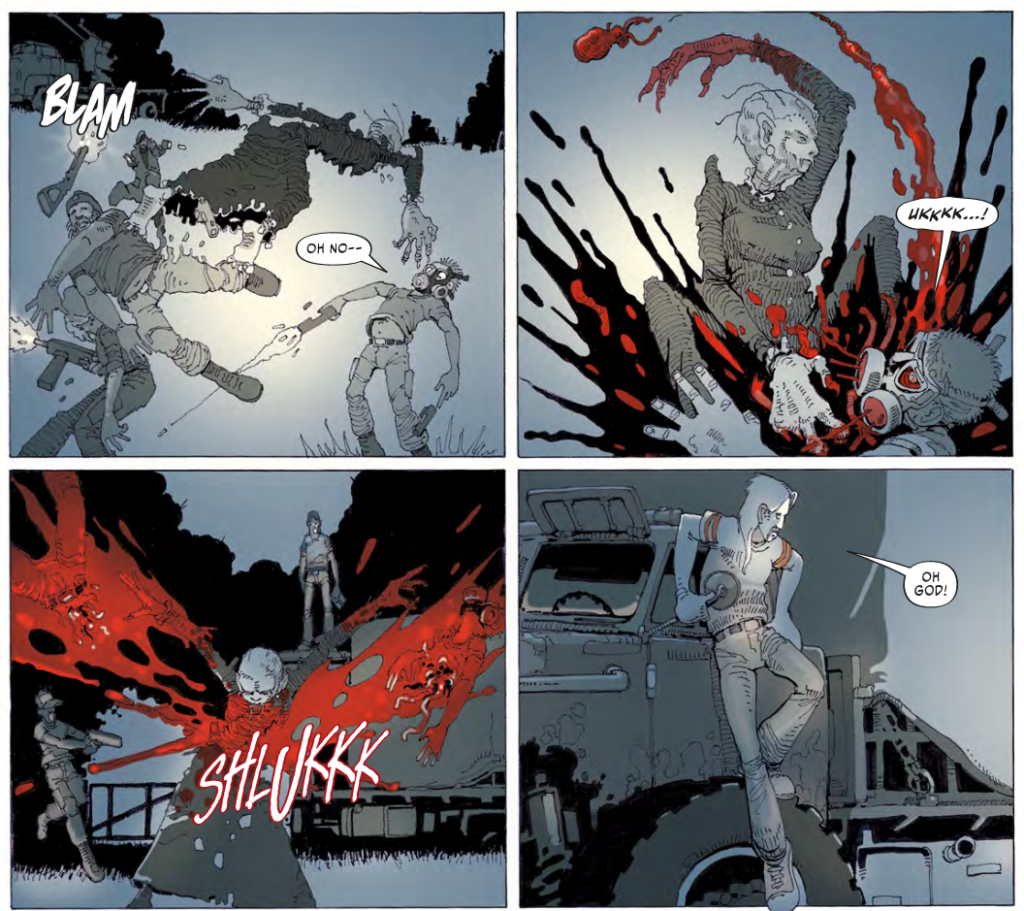
Now, several episodes into things we have the core conflict of the strip. It’s the human resistance versus the alien Sepsis conquerors, with the small human resistance literally unearthing a superpower in the shape of Baroness DeSilva, someone or something that the resistance leaders appear to know more about than we first thought.
In so many ways this one seems very simple – aliens invade, earth resistance fights back with the aid of something supernatural they’ve uncovered. In fact, something they’ve literally dug up.
But I get the impression that there’s a lot more to Silver than that? Right?
MC: Tentatively, let’s say that yes, there is more to her than it might at first appear… Or is there?
Joe and I have bounced a lot of ideas back and forth – he has a fantastic imagination and is very receptive to ideas – before we settled on the story for the first book, and we deliberately decided to reveal very little about the Baroness.
Partly that’s to create a sense of mystery, but also it’s because just about all of Book 1 takes place during the course of a single day: there’s not a lot of time or opportunity for the characters to trot out their back-stories.
On the face of it, though, Book 1 is a rather simple story, and again that’s deliberate. We want readers to be able to jump in and hit the ground running without having to figure out who the bad guys are, what their motives are, and all that.
As the story progresses – I’m writing Book 2 at the moment – we’ll start to peel back some of the layers and hopefully show that there’s some depth and complexity to it all.
But of course, we’ll never forget the true message of the tale, which is that all the best comics feature at least two of the essential “M.A.R.S.” elements: Monsters, Aliens, Robots, Superheroes.
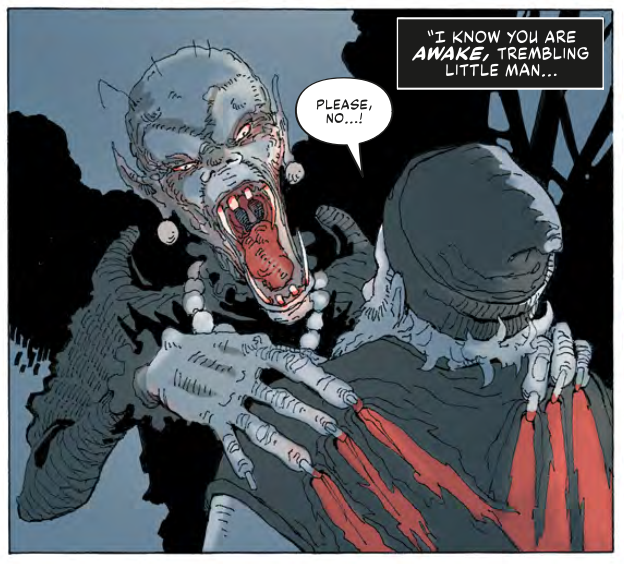
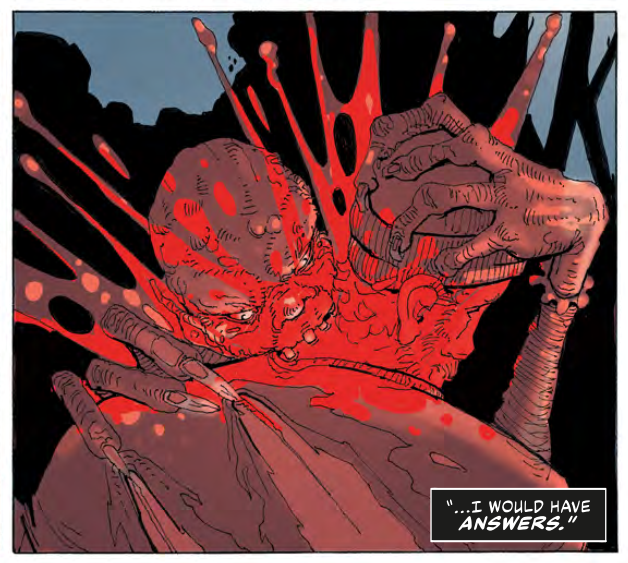
How did Silver come about? Was it something you pitched or did Tharg specifically request something from you? And did Tharg expressly pair you up for this one?
MC: It was indeed Tharg who paired us up! I’d finished the last book of Proteus Vex and was keen to create another series, something very different.
The Mighty One suggested “something post-apocalyptic/Euro-weird/Heavy Metal-ish with Joe Currie.” I was already familiar with Joe’s work and I knew instinctively that I could ask him to draw just about anything and he’d do an excellent job.
And Mike, did you have the idea for Silver in mind already or did working with Joe change the very idea of it?
MC: No, initially I started developing something much, much different, but I quickly realised that not only would it be practically impossible to draw – even for someone with Joe’s skills – it would have been quite opaque for the readers. I won’t go into any more details on that idea in case I ever decide to go back to it, but I ditched it completely and eventually landed on the basic idea behind Silver.
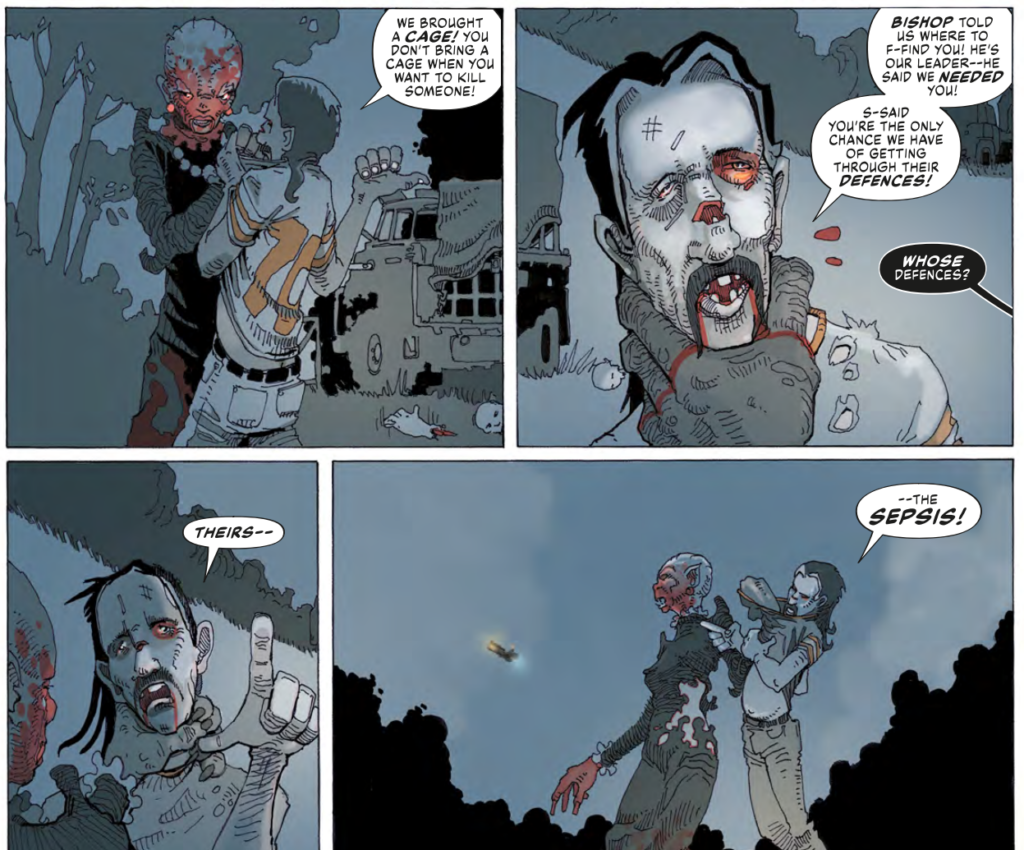
Mike, this seems distinctly different to the just finished Proteus Vex? Where that was all big themes, grande sci-fi space opera across time and space, huge galaxy-spanning empires at war and all that, Silver seems more contained and constrained. A deliberate choice on your part?
MC: Absolutely, yes! But also, no! Y’see, the manner in which a story is told is always hugely important and often more resonant than the story itself. With Vex, I deliberately chose to tell it as though the unseen narrator has spent many years sifting through an awful lot of ancient legends and myths, and has pieced together what they believe is the “true” story from all the disparate and often contradictory parts. The narrator, in such a case, almost becomes a character themselves. That approach gives the story a sense of distance and scale, and (I hope) an almost mythical feeling.
With Silver, there are no non-dialogue captions at all except for a couple on the very first panel to establish the location and date, which lends the story a stronger sense of immediacy and urgency – it’s more visceral and impactful if we’re given an intense action scene and it hasn’t already been implied by the narrative that the characters involved will survive! (OK, yes, the title does strongly suggest that the Baroness is going to be there through to the end!)
But if we were to swap the story-telling methods of Proteus Vex and Silver, then the former might come across as a simple, straight-forward, action-packed space opera, whereas Silver might be read by some readers as a complex, layered, meaningful allegory of something or other. It’s all in the delivery.
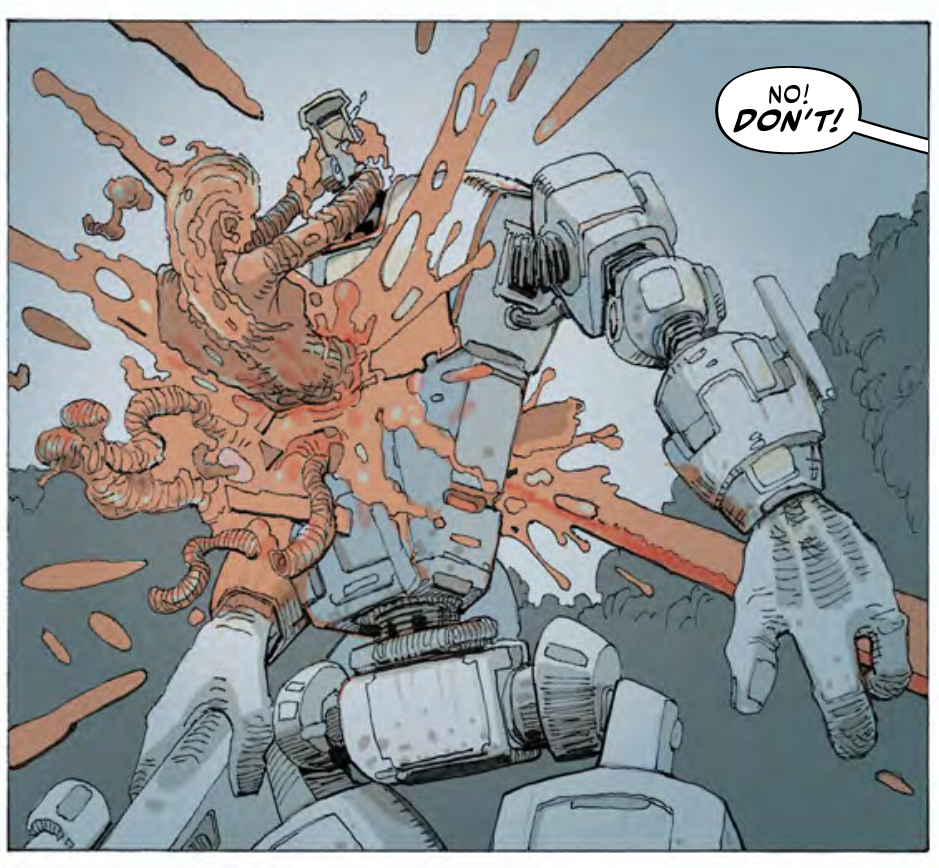
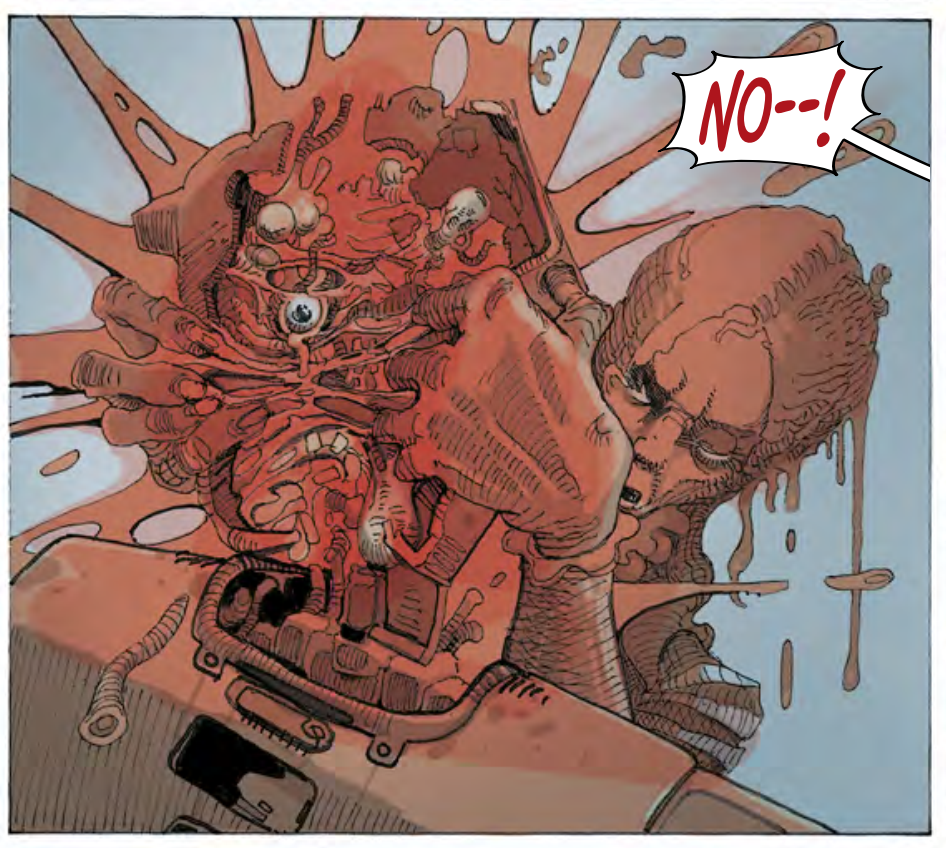
It’s also very much more in your face as regards the action and the violence. Again, was this almost a reaction to what you’ve previously done with Proteus Vex?
MC: Yeah, that goes back to the immediacy and visceral nature of the action. Plus the Baroness isn’t necessarily a hero as we would judge things… She comes from a time when nobility perhaps didn’t quite have the same meaning that it does now.
In Vex all the alien races – no matter how disparate they are, or how odd they might seem by our standards – are generally reading from the same page, communication-wise. They pretty much all have some fundamental understanding of each other.
I wanted the aliens in Silver to be very different to humans… A lot more unfathomable. There’s a quite simple trick we’ve used to bring us closer to that goal but I don’t know whether anyone has twigged it yet, so I’m not going to say what it is! And the Baroness herself is quite alien to the ordinary people, albeit in very different ways.
Why set it in 2001? Any specific reason or just one of those great sci-fi years?
MC: I wanted the human survivors to be comparatively primitive compared with the Sepsis, so to make sure they were really out-classed, I stripped away all the modern conveniences: no cellphones, no internet, no microchips! The easiest way to do that was to set it in the past… The aliens invade at the end of the 1960s, so human technology stops advancing at that point.
I also wanted the aliens to be very much entrenched when the Baroness enters the tale, so I figured we’d skip ahead a few decades… So even though the series is set in 2001, the most advanced tech available to the resistance is stuff left over from WWII. And many of the human characters can’t remember a time before the invasion anyway: life under the Sepsis occupation is all they understand.
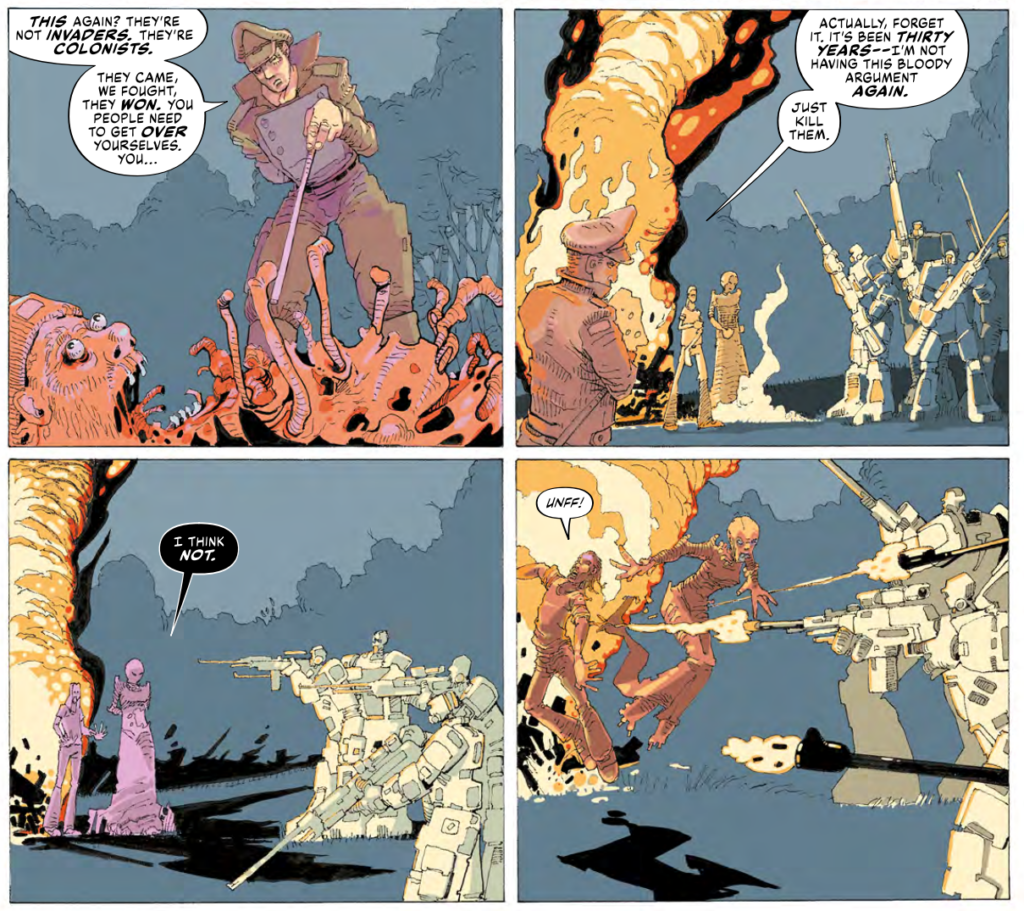
You’ve already mentioned that you’re busy with Silver Book Two – any hints on what we can expect from book two?
MC: I won’t tell you what’s coming up, but I can tell you that when we were working on the first book Joe and I quite quickly developed a very definite path for the future of the series… Then a few weeks ago when I delivered the synopsis for Book 2, Tharg was less than utterly overjoyed with it. I might be projecting here a little, but I’m fairly sure that the other editorial droids in the Nerve Centre had to talk him down from the roof where he was shaking his fists at the cosmos and screaming, “Noooo! Why, gods, why!?”
Tharg felt that our plans for Book 2 would take the story in the wrong direction, one that didn’t quite ring true. So we had to do a re-think, and take a different approach. That happens, sometimes… And even though it stings – it really, really stings, like a mad bee that’s been cross-bred with a nettle and dipped in scorpion venom and then set on fire – it’s usually going to be for the best: it’s easy for the creators to fall in love with certain aspects of the story, and as a result they can lose sight of – forgive the apparent cliché – the Big Picture. So now and then the editor has to step up, put their foot down, and say, “No, not good enough, you wretched worms! Go back to the drawing board and do it again!” (An editor who doesn’t know when to intervene, or who lacks the courage to do so when it’s necessary, is not a good editor!)
Luckily, Tharg liked the second synopsis so much he gave it a great big cheery thumbs-up, and I wouldn’t be at all surprised if he sends each of us a huge bag of pick’n’mix as a reward for our thoroughly excellent work.
As I said, right now I’m actually writing book 2 – subtitled ‘Perfidious‘ – and it’s going pretty well.
Mike, pick’n’mix really isn’t Tharg’s style. Threats, Rigellian hot-shots, and restricting oil changes for the droids, yes. Pick’n’mix… maybe not!
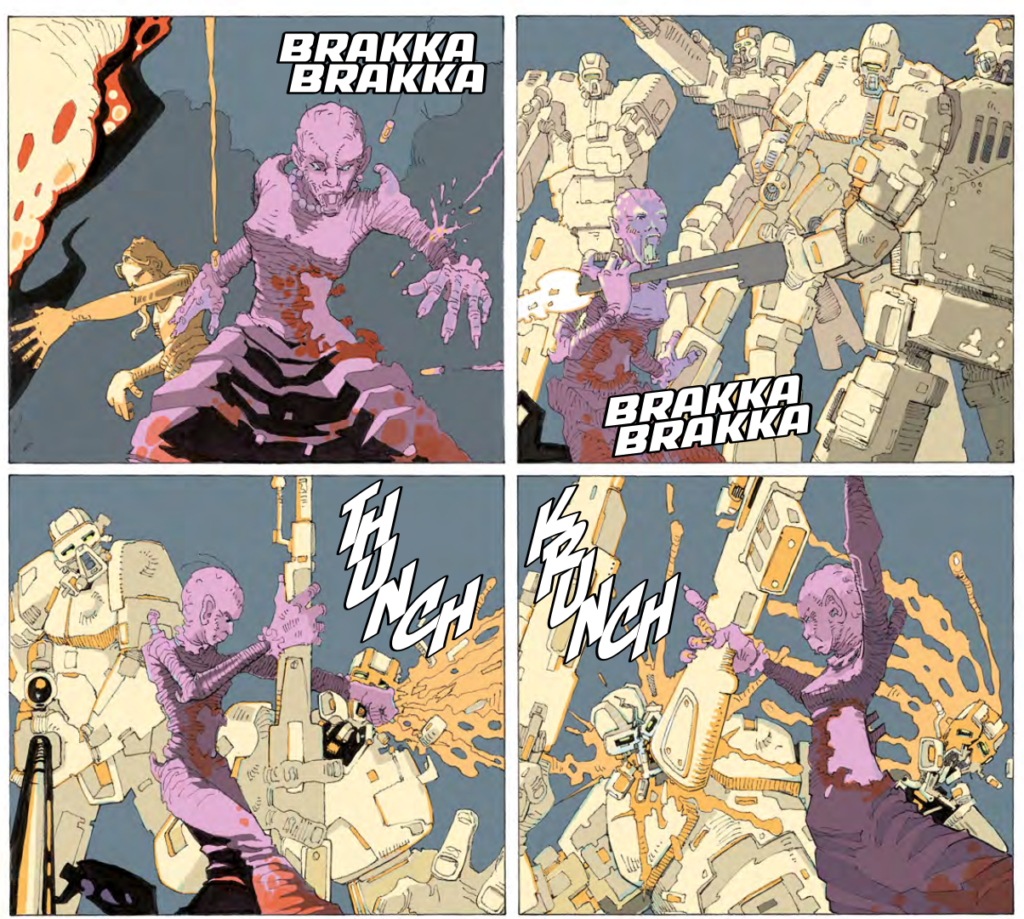
One of the main human protagonists here is Fraser. He’s our ‘in’ on the miracle solution to humanity’s dealings with the Sepsis. Will he be simply that, a means to tell the backstory to the Baroness, or has he a more important role to play?
MC: Well, Fraser is the Baroness’s conduit to the changed world in which she finds herself – and thus he’s also the reader’s conduit. He’s an everyman, which is one of the reasons Joe and I like him so much. He’s not a hero, he just drives the trucks for the heroes.
Were it not for the Sepsis occupation, the closest Fraser would get to fighting action would be the aftermath of an accidental pint-spilling in the pub, and even that would end with the antagonists black-eyed and drunkenly slumped at the bar and declaring that the other is his best mate in the world.
And any significance to the name Fraser – there’s always that sense that writers drop in every name for some reason, not simply because it sounds right for the character!
MC: Yep! The character came about from a half-serious comment I made when Joe and I were throwing ideas back and forth. I said, “Oh, and if this was a movie then the leader of the British crew would ideally be played by Lemmy from Motörhead. :)”
Oh yes, absolutely he would! I can picture it in my mind right now!
MC: Well, we both loved Lemmy – I mean, who didn’t love Lemmy? He was a 2000 AD fan! Even people who had no time for Motörhead loved Lemmy!– so that idea got lodged in our brains and just refused to be budged. We couldn’t really use his name, though, so instead we used his middle name: Lemmy Fraser Kilmister. Bloody legend, that lad! He died at the end of 2015 and everything started to go downhill almost immediately. (Also: I have a friend nick-named Lemmy who’s almost as awesome as the original.)
And he was a fan… even going so far as to pose for this bit of 80s Prog advertising…
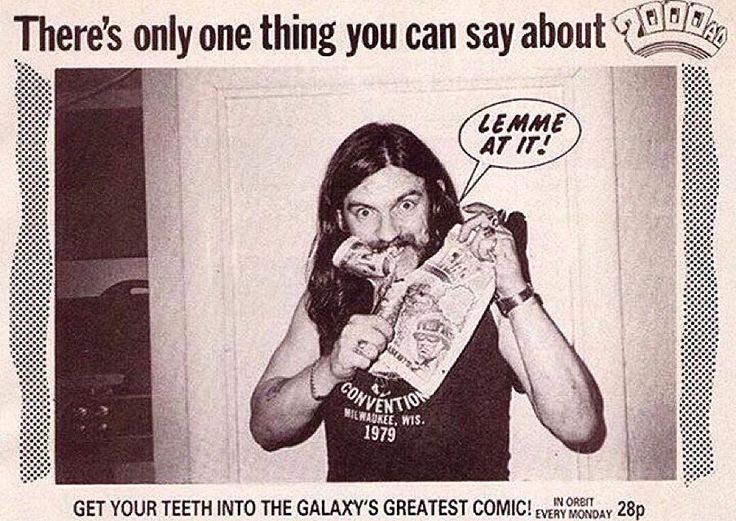
Going higher up the chain of command, there’s the mysterious Bishop. He’s the resistance leader who put in place the plan to dig up the Baroness in the first place. And, as we see at the end of episode 4, he’s well aware of who and what she is.
Fancy giving us a few teasers about who Bishop is and just how he knows who/what the Baroness is, and how he’s known her name for decades?
MC: I don’t want to say much, but you could think of Bishop as sort of our take on the Brigadier from Doctor Who… He’s the power behind the British cells of the human resistance, except the Brigadier was a nice guy and Bishop is very much not really all that nice at all.
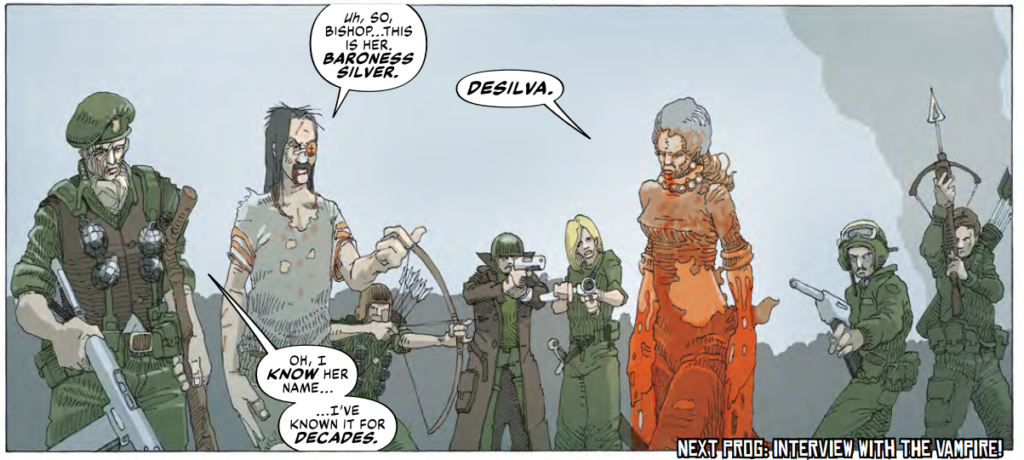
Of course, for horror fans, silver has all sorts of lycanthrope connotations – but you cut across that assumption with the Baroness being more of the, shall we say, vampiric bent, and then go on to make a point of having the series title explained by Fraser as a mishearing on the Baroness’s name as Silver instead of DaSilva. Mere wordplay or something more?
MC: Sorry, I was going through a tunnel just then and I completely missed that question.
Tunnels? Oh, those sneaky script droids!
The Baroness so far has been something of a cipher, all we know is that she’s old, supernatural, incredibly powerful. But there’s so many questions unanswered with her.
Why would she collaborate with the humans? What’s her backstory? Just what exactly is she? And many, many more. Will you be getting into all these in time?
MC: Oh dear. Another tunnel!
They really are a particular pain!
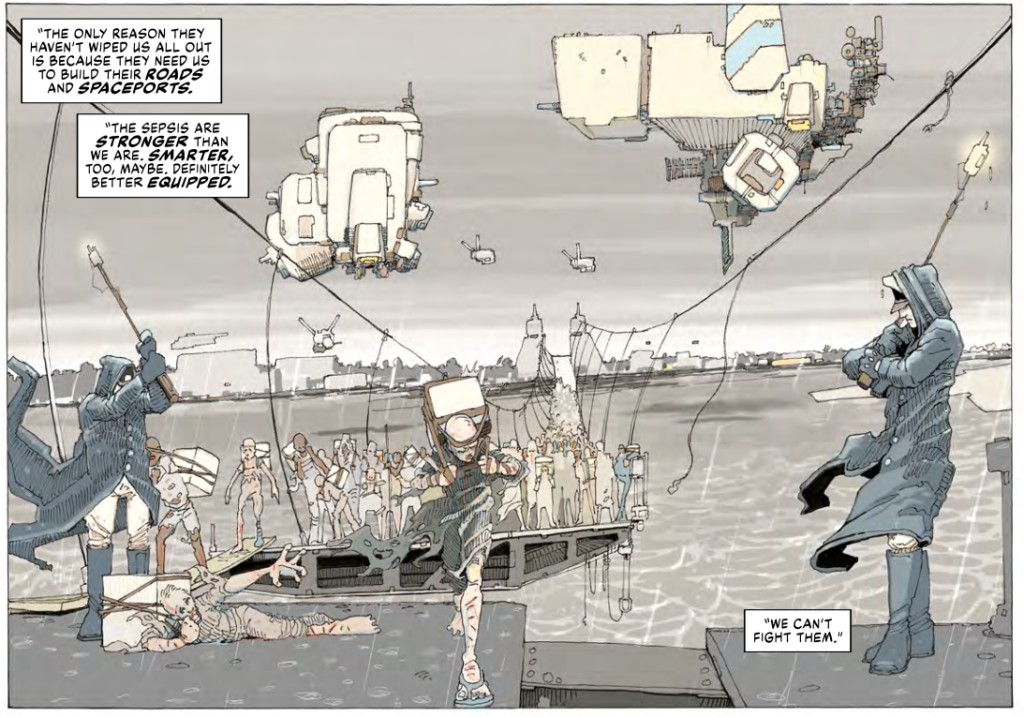
Mike, let’s talk art now. You’ve seen what Joe’s produced for the first few episodes at least. What is he bringing to Silver?
MC: Joe’s art has a wonderful looseness at times, a frenetic energy combined with otherworldliness. His work kinda makes me think of someone like Geof Darrow trying to do his own version of Moebius, except Joe’s combined the two and then gone off in a direction that until now no one even knew existed.
I honestly can’t picture anyone else bringing what Joe does to Silver. This is classic stuff! I don’t imagine that he actually draws with a solid-gold, diamond-nibbed pen, but it sure feels like he does…
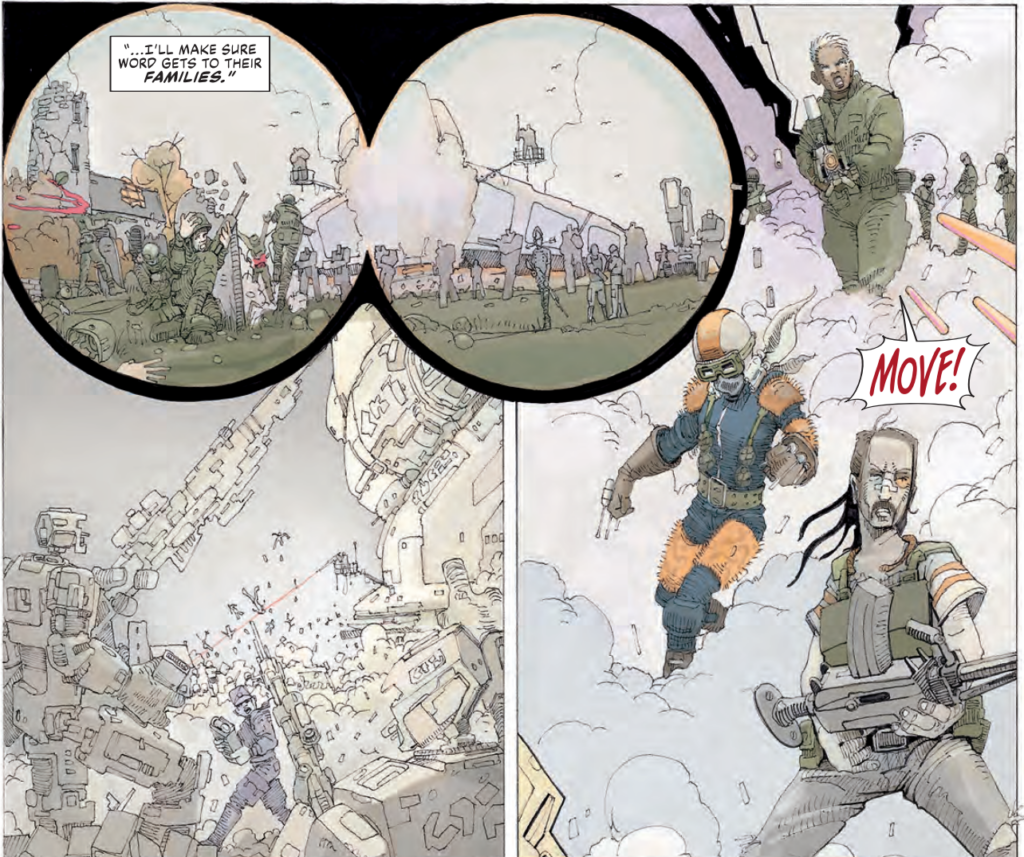
Finally, what else do we have to look forward to from you both? Either for Tharg or elsewhere?
MC: I’ve got a Dredd multi-parter and a few one-offs on the way, and I’ll soon start work on Book Four of Dreadnoughts. Then, after that, I’ll spend the rest of the year working one of those Top Secret Projects that I’m not allowed to talk about. Beyond that… no idea what I’m doing next year!
There’s a cabinet for the workshop that I want to build, and you never know, I might finally write that synth-pop album I’ve been toying with on and off for the past forty years.
Thanks to Mike Carroll for taking the time out of his damn busy writing day and putting you, dear readers, above both workshop cabinet-making duties or global synth-pop stardom!
As for more from Mike, there’s plenty of interviews to get your teeth into. We chatted Dreadnoughts with Mike and John Higgins here in 2020, Judge Dredd: Desperadlands from 2021, Action Pact with Mike and Luke Horsman from 2021, two Mayflies interviews – here with Simon Coleby, and here solo, both from 2021. Then there’s Matt Smith, Maura McHugh, and Mike talking about putting together the 2021 2000 AD Sci-Fi Special here. And finally, he’s appeared a couple of times recently on the Thrill-Cast – here talking space opera and dystopian cops, and here with Matt Smith and Al Ewing on the Thrill-Cast Lockdown Tapes.
Now, a quick look at a little bit of extra art for you – the two fabulous Silver covers that we’ve seen so far…
Prog 2390 – cover by Dave Kendall – you can see Dave’s great Covers Uncovered piece for this one here.
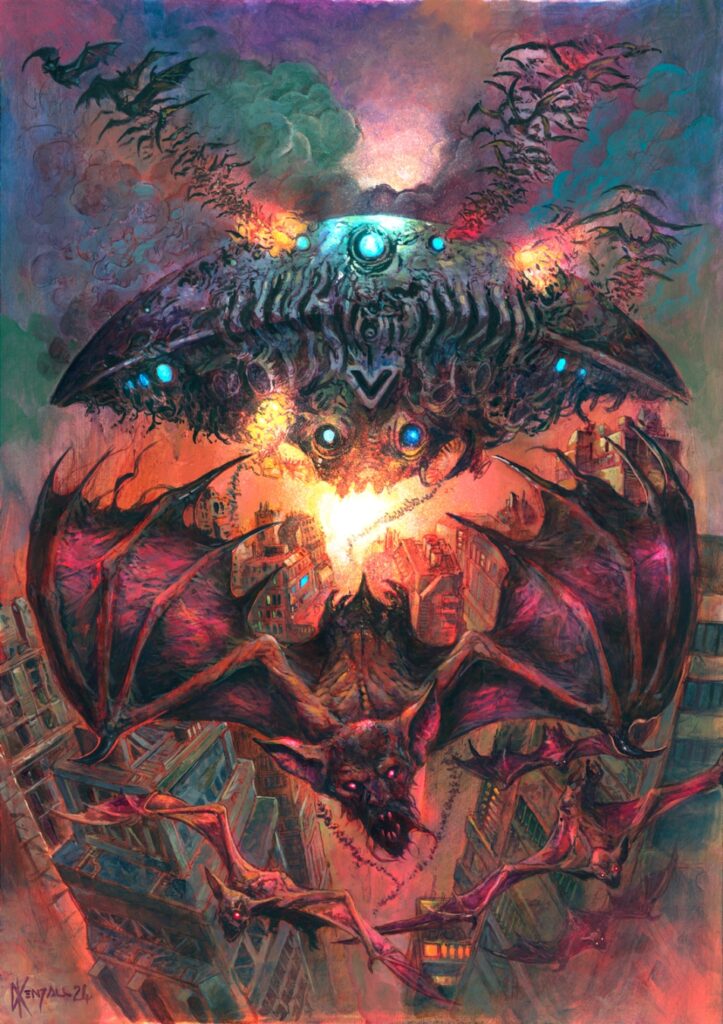
And then for Prog 2395, a portrait of the Baroness, blood red dripping from the cover by Frazer Irving. Again, his covers uncovered piece about putting this together is here.
